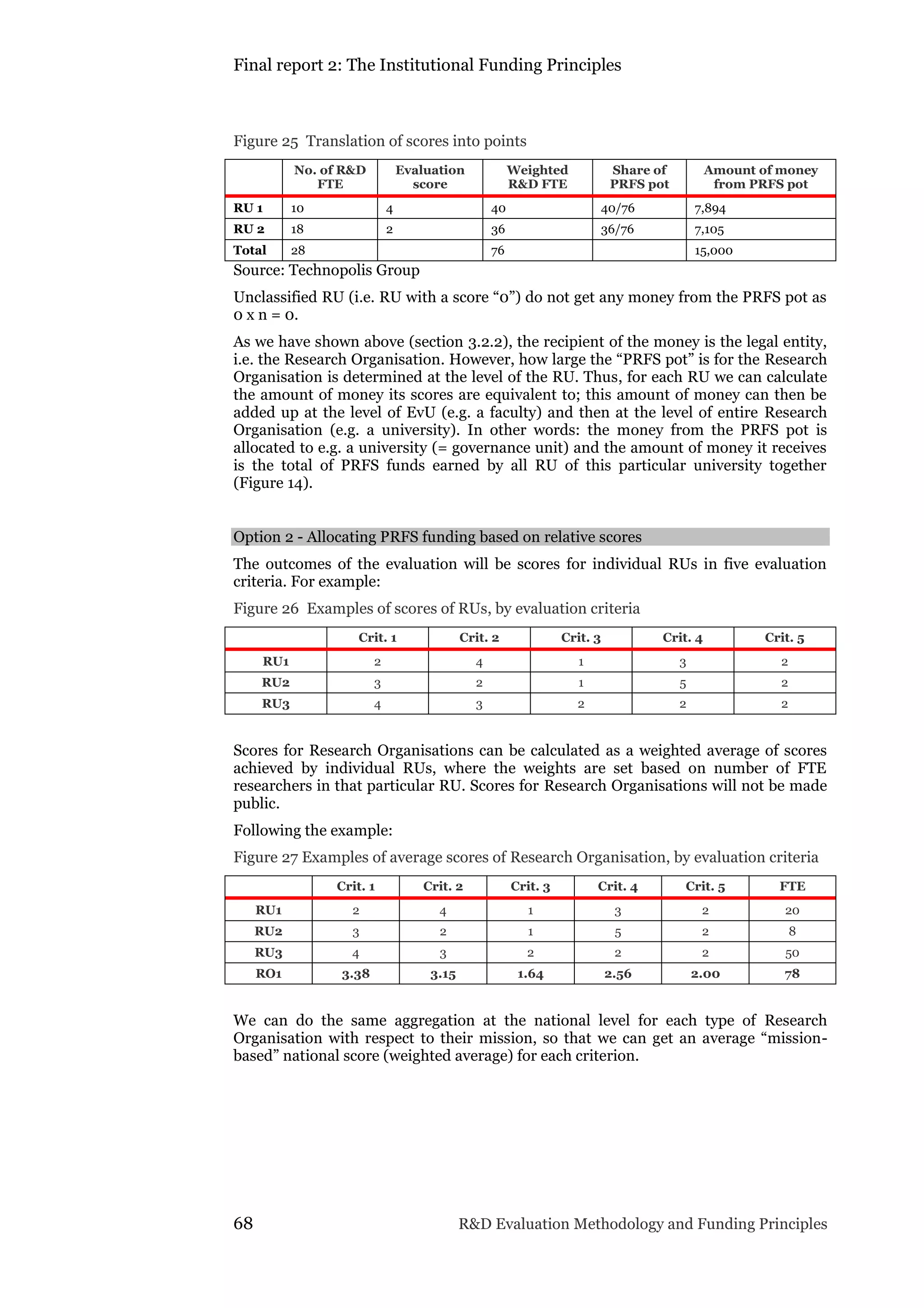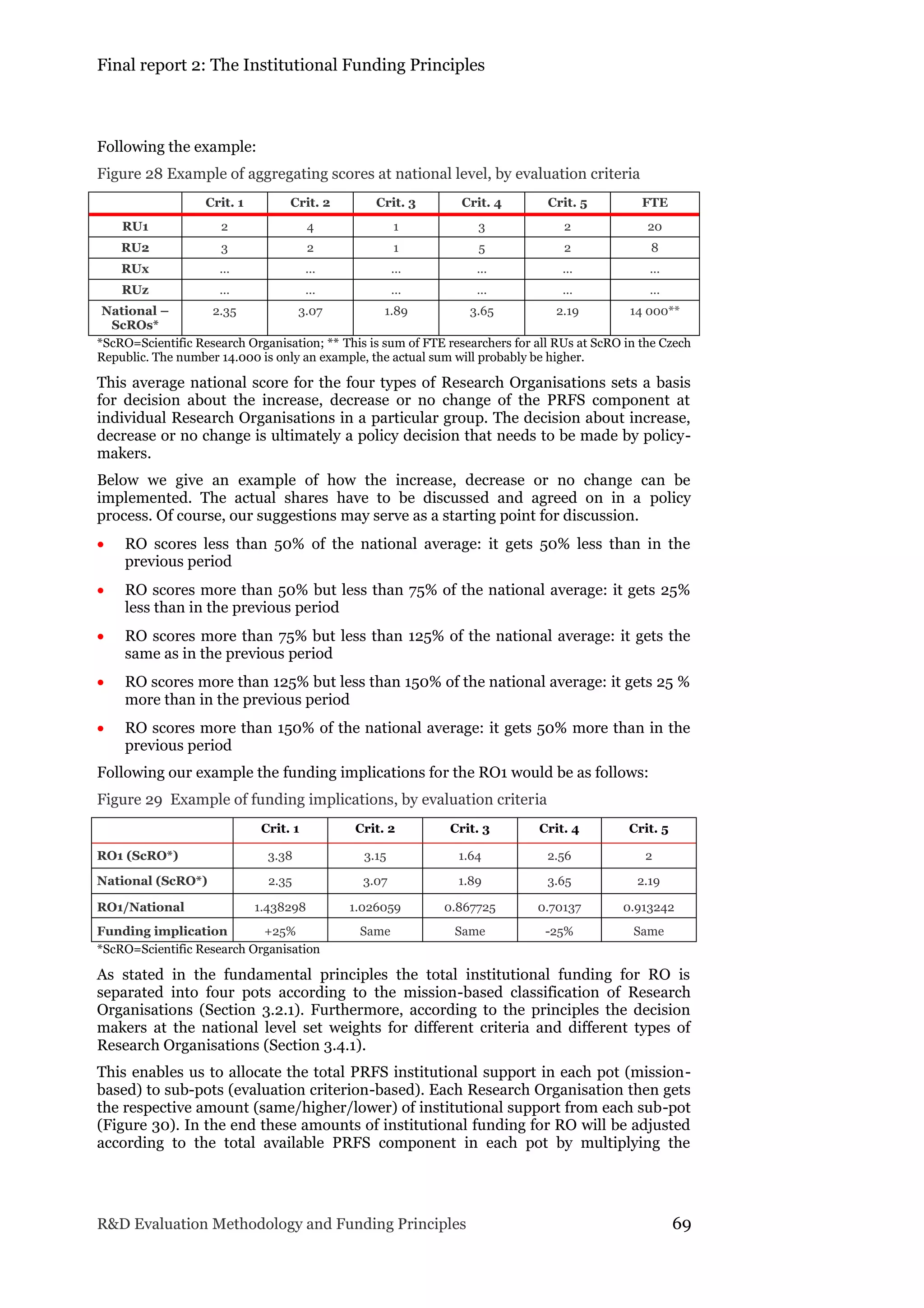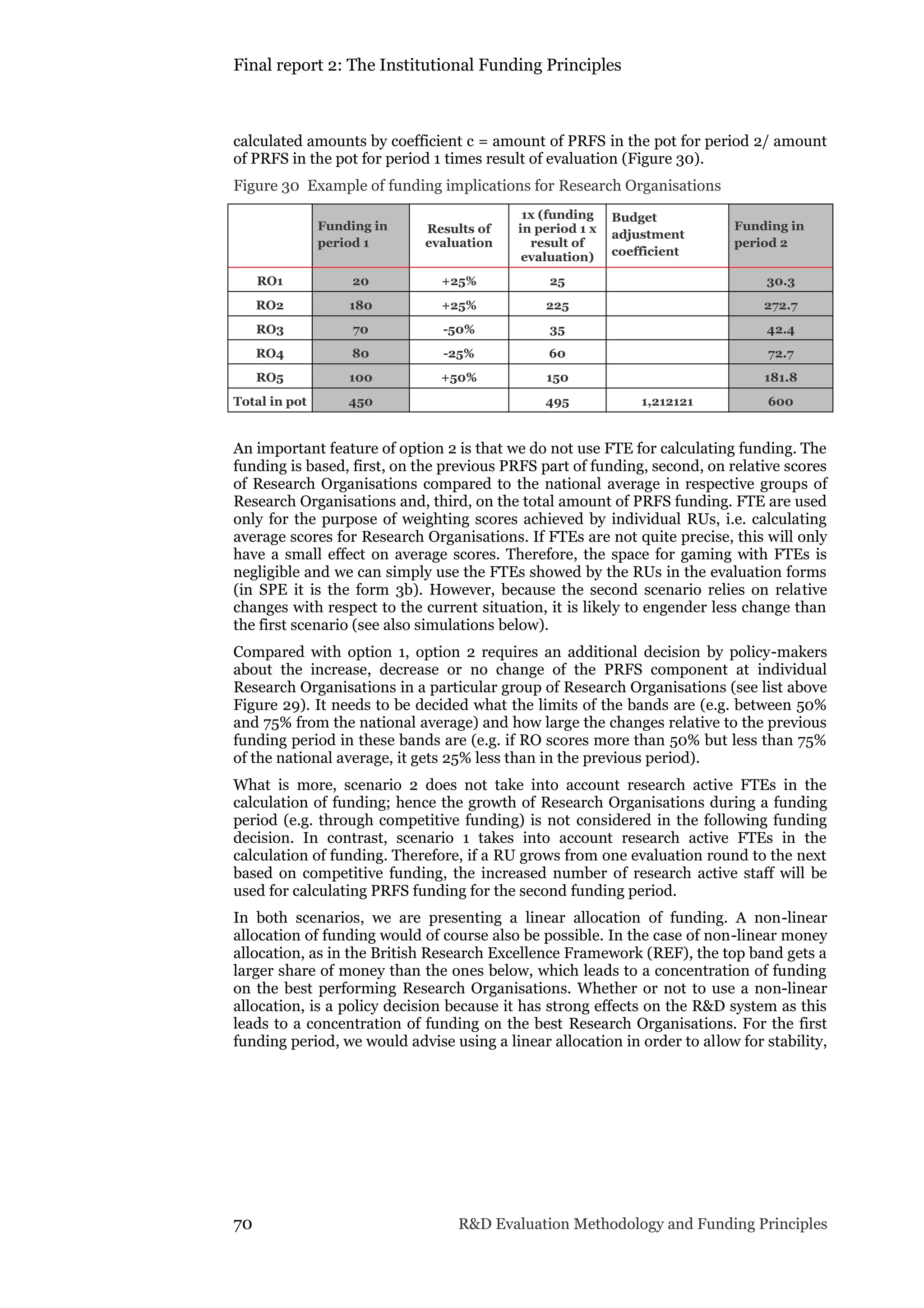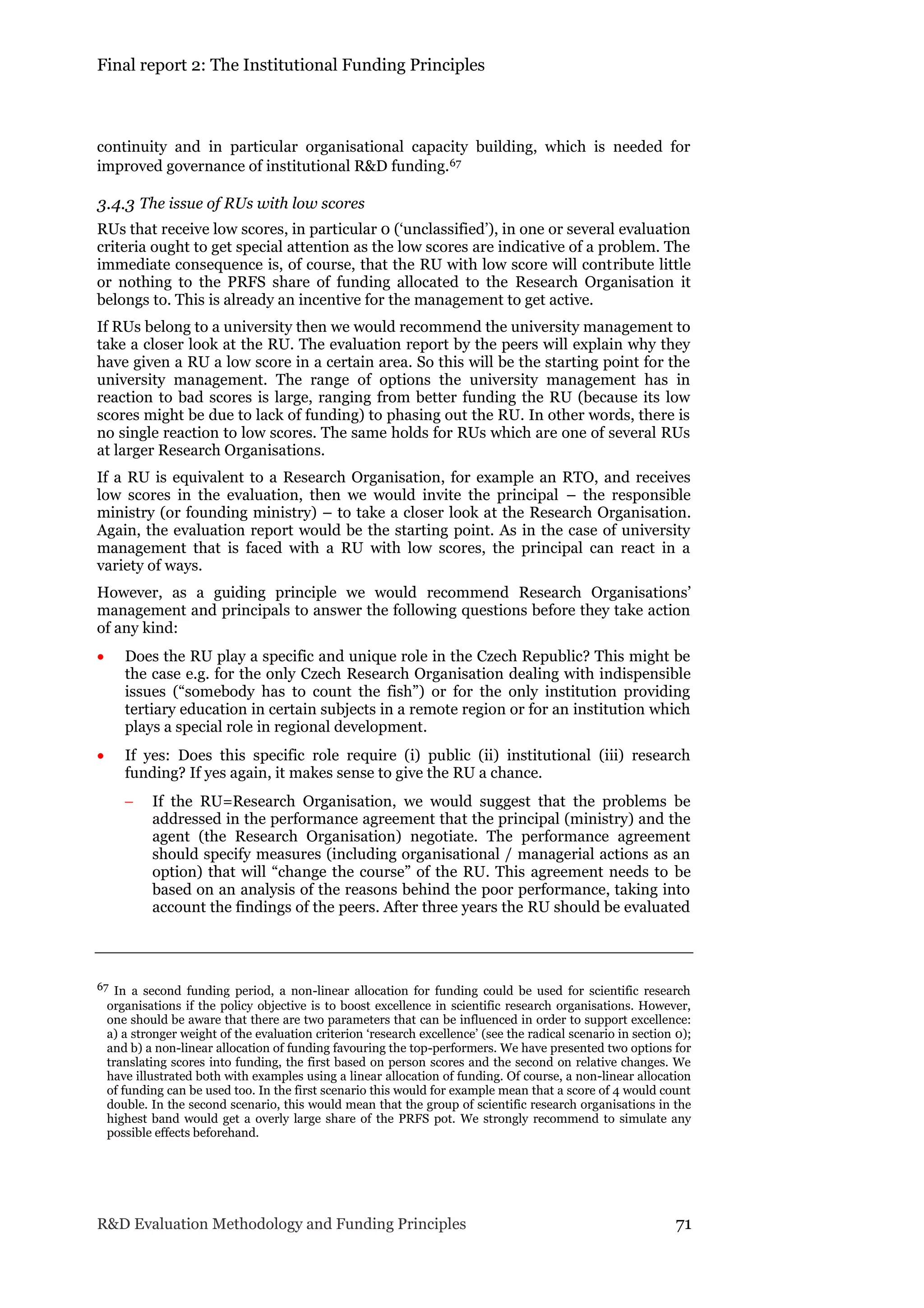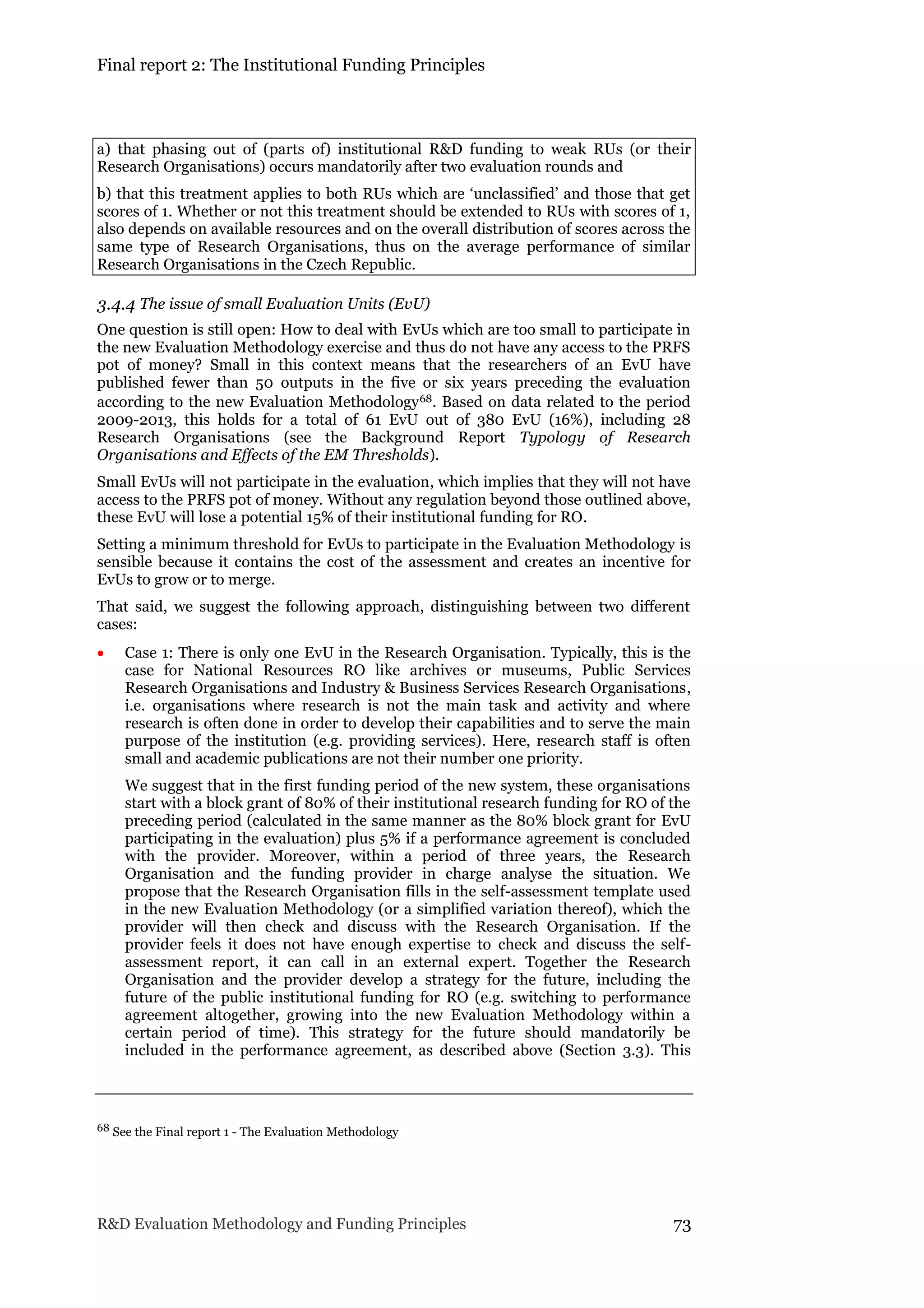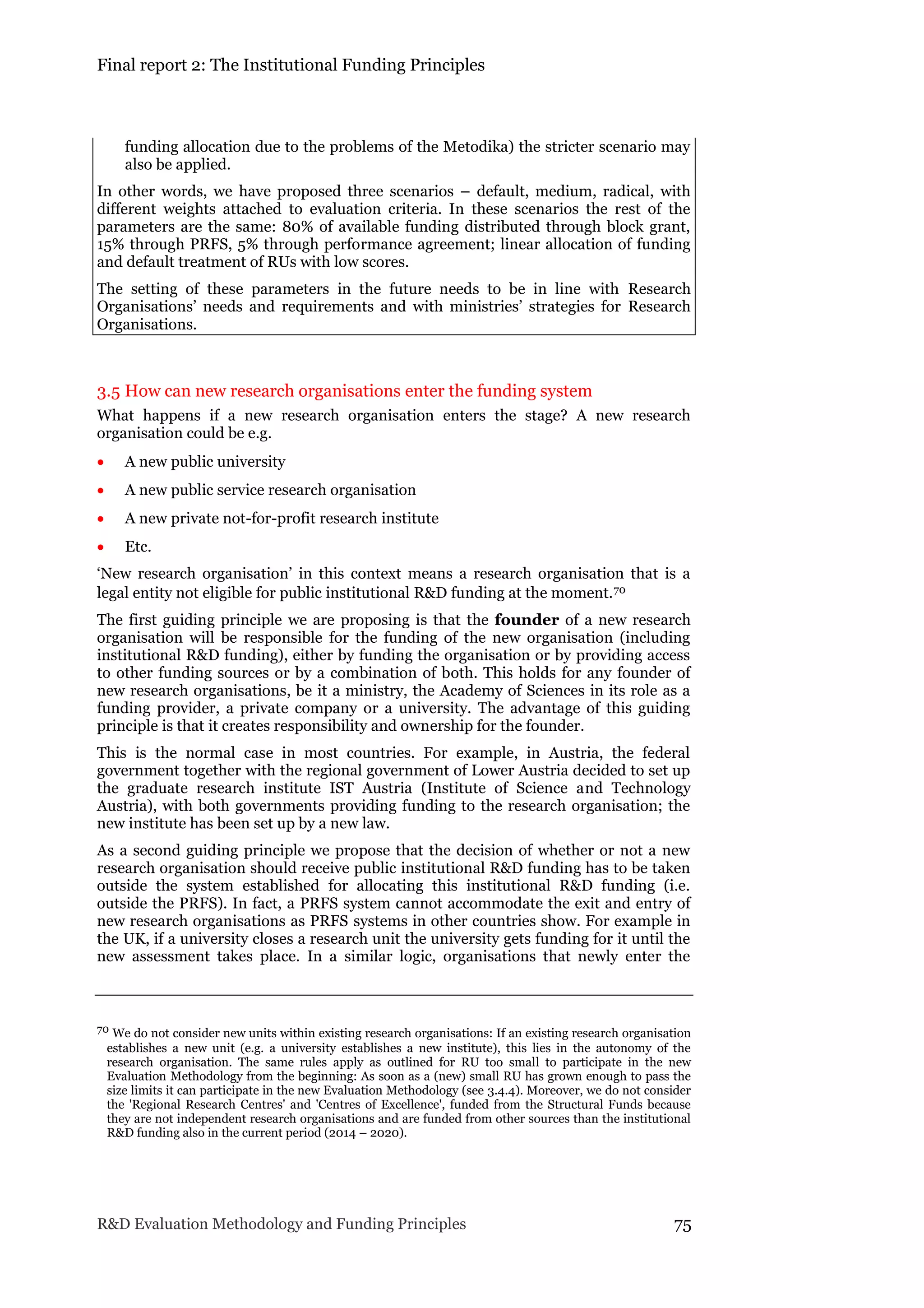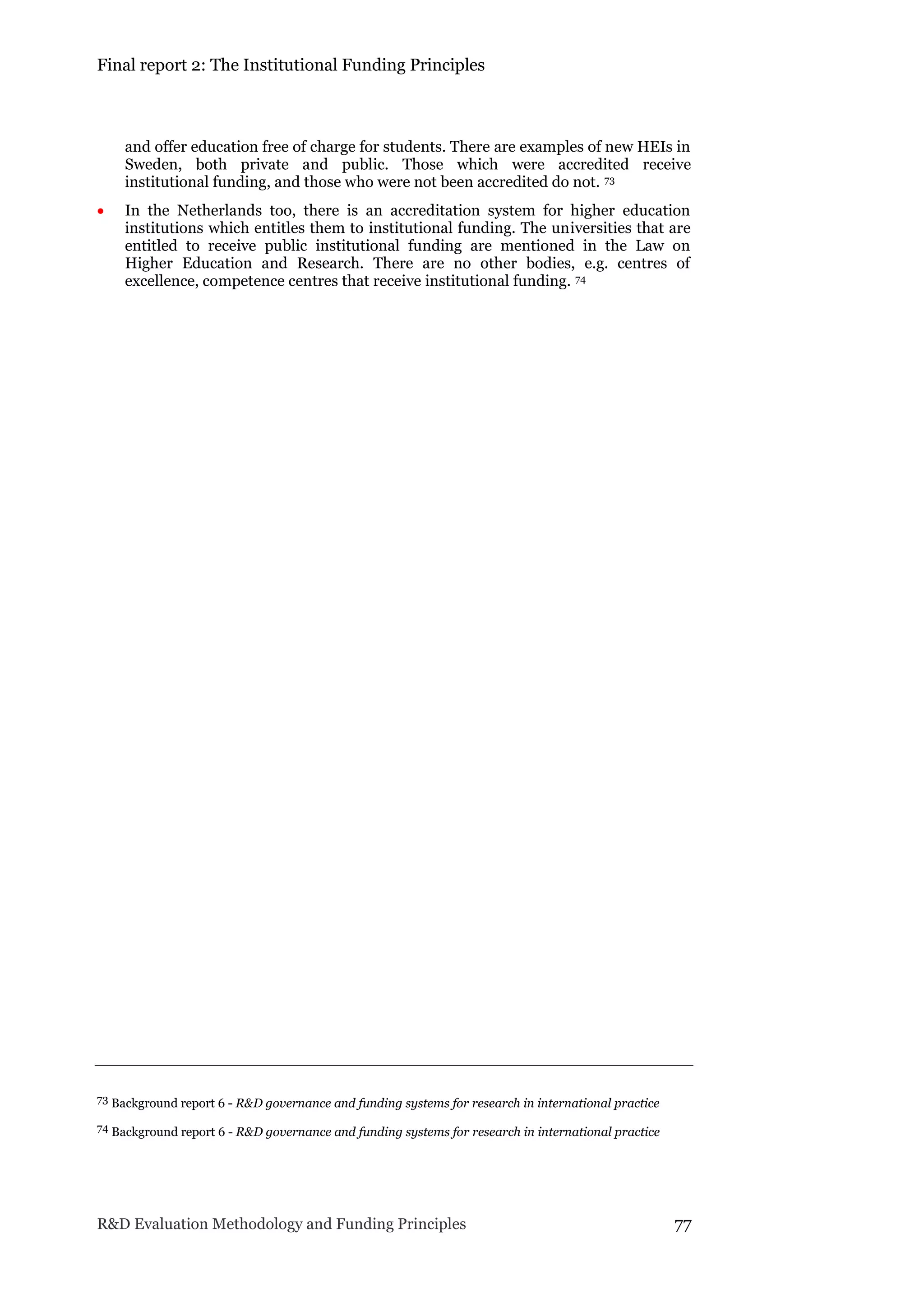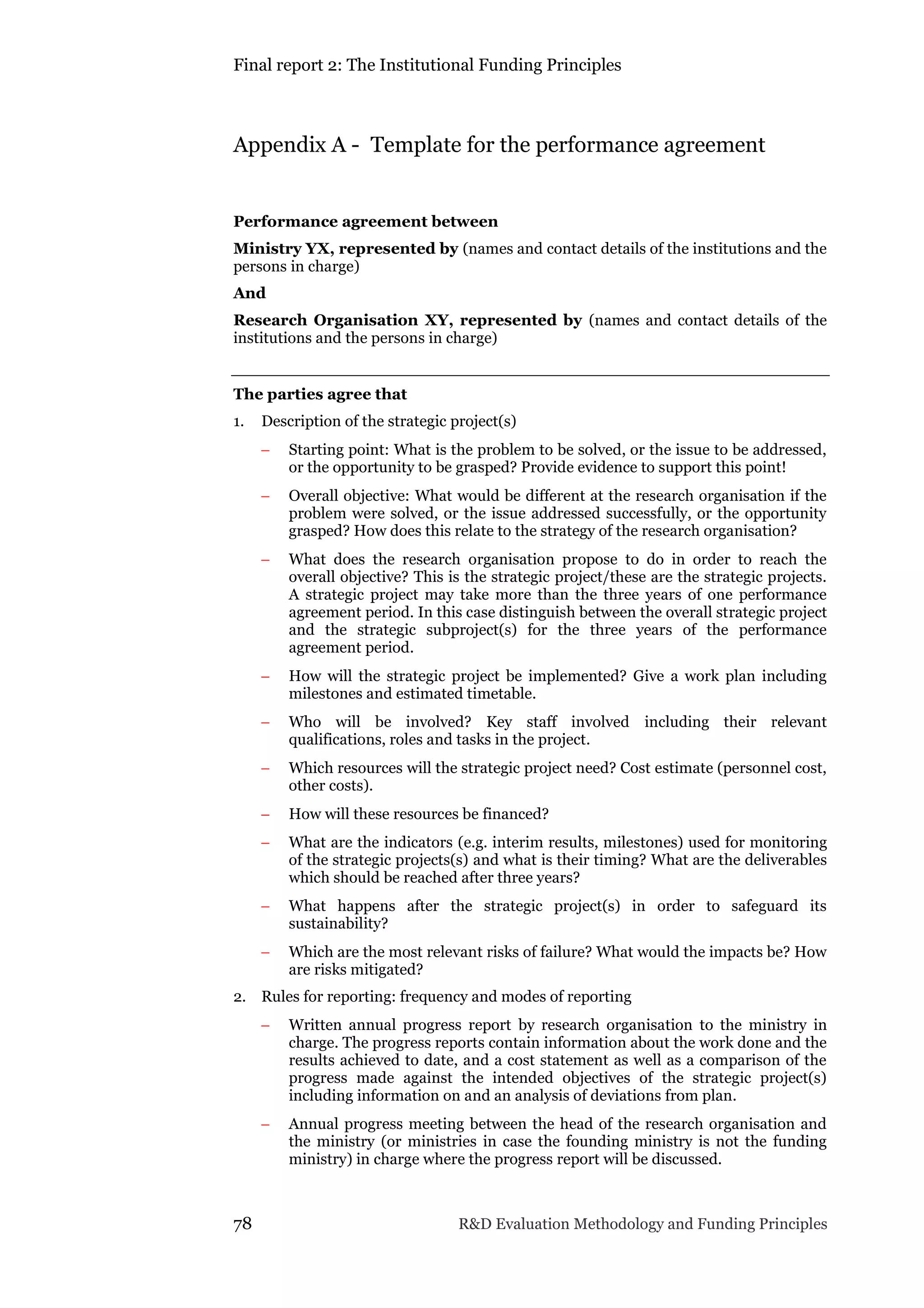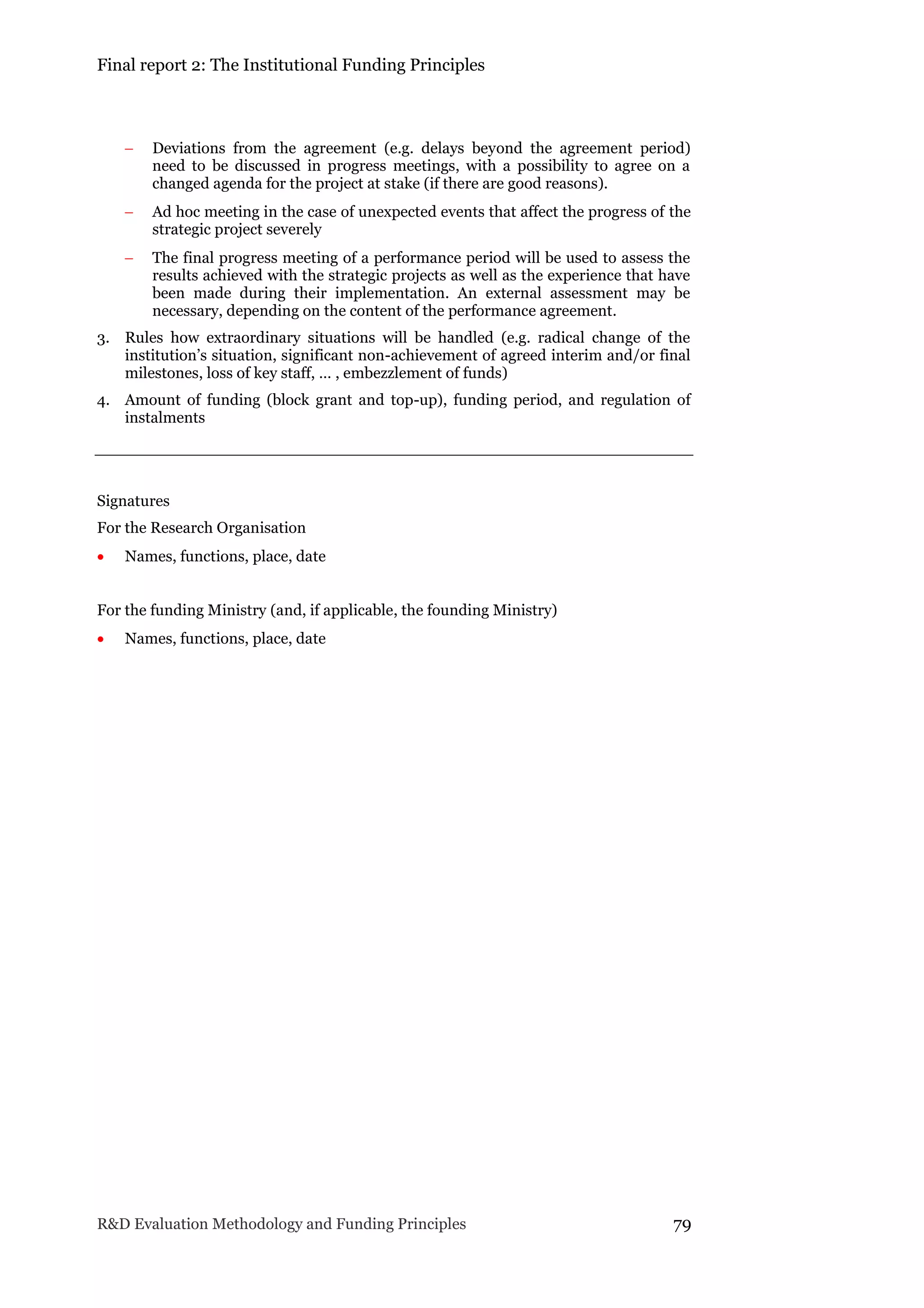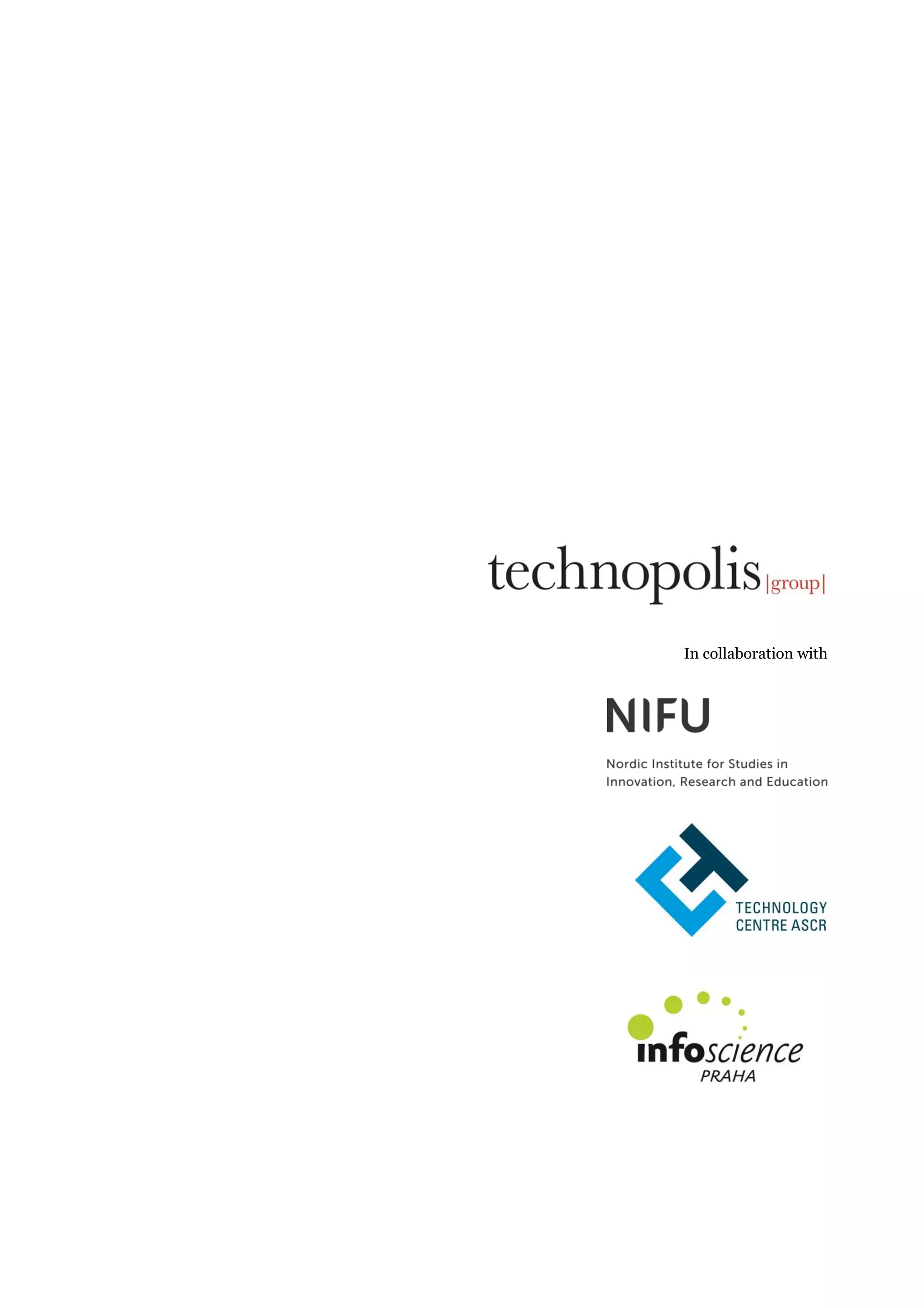The report outlines a methodology for evaluating and funding research and development (R&D) within the Czech Republic, aiming to enhance the system's efficiency and coherence. It emphasizes the need for distinct budget allocations for different types of research organizations, advocates for a mix of block grants and performance-based funding, and highlights the importance of aligning funding principles with the missions of these organizations. The recommendations include gradual implementation of the new funding framework to support institutional development while minimizing disruption.

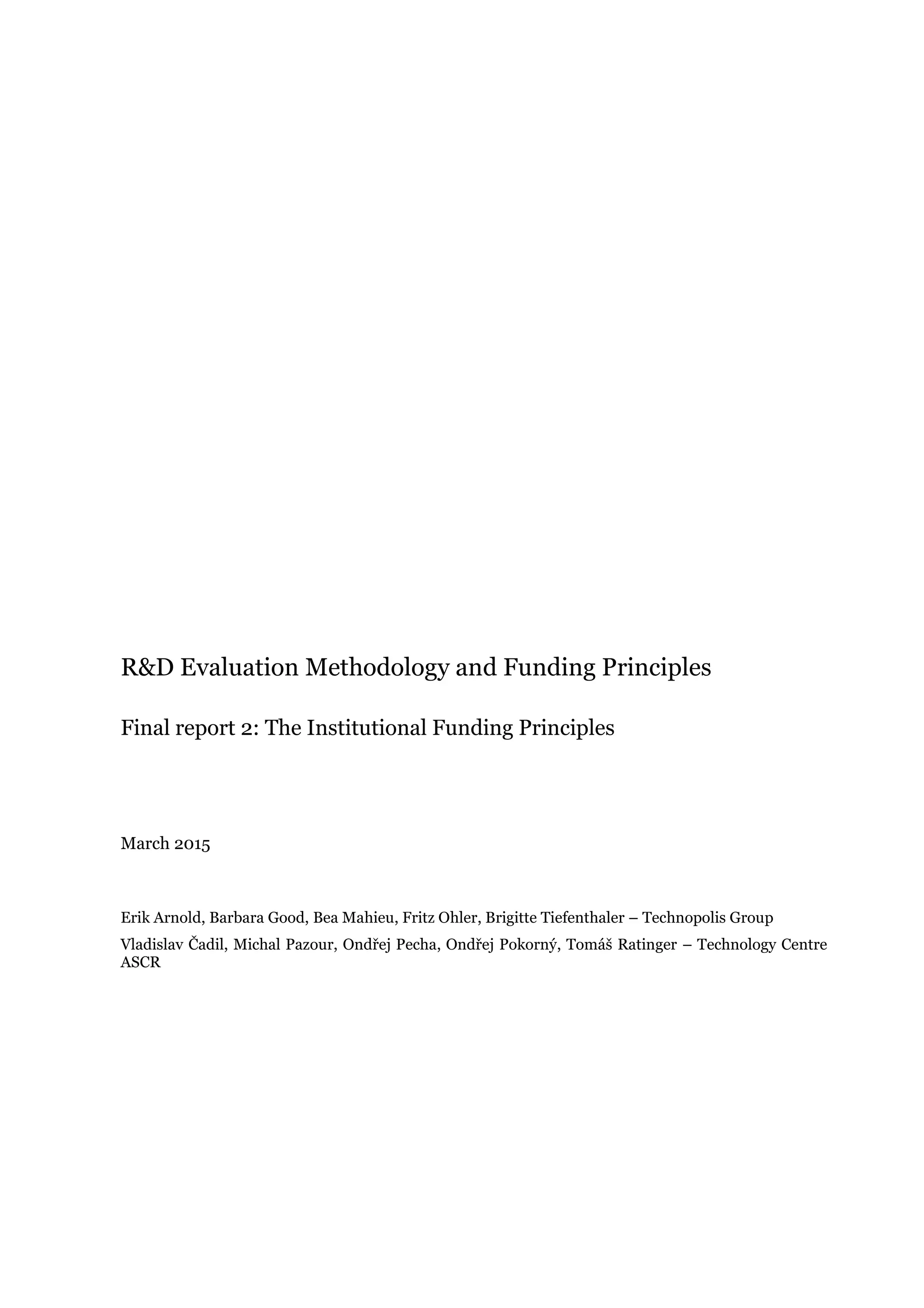
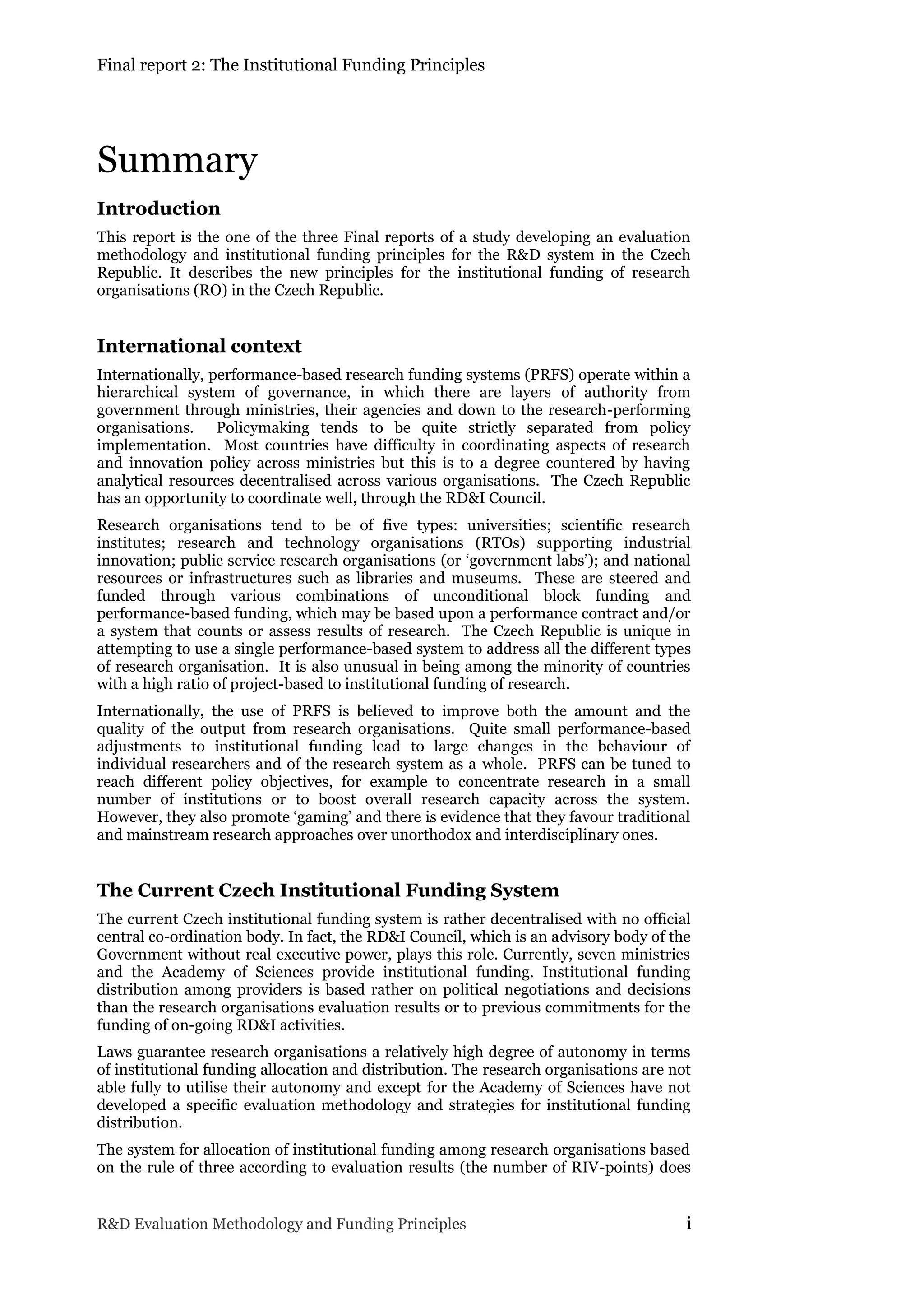

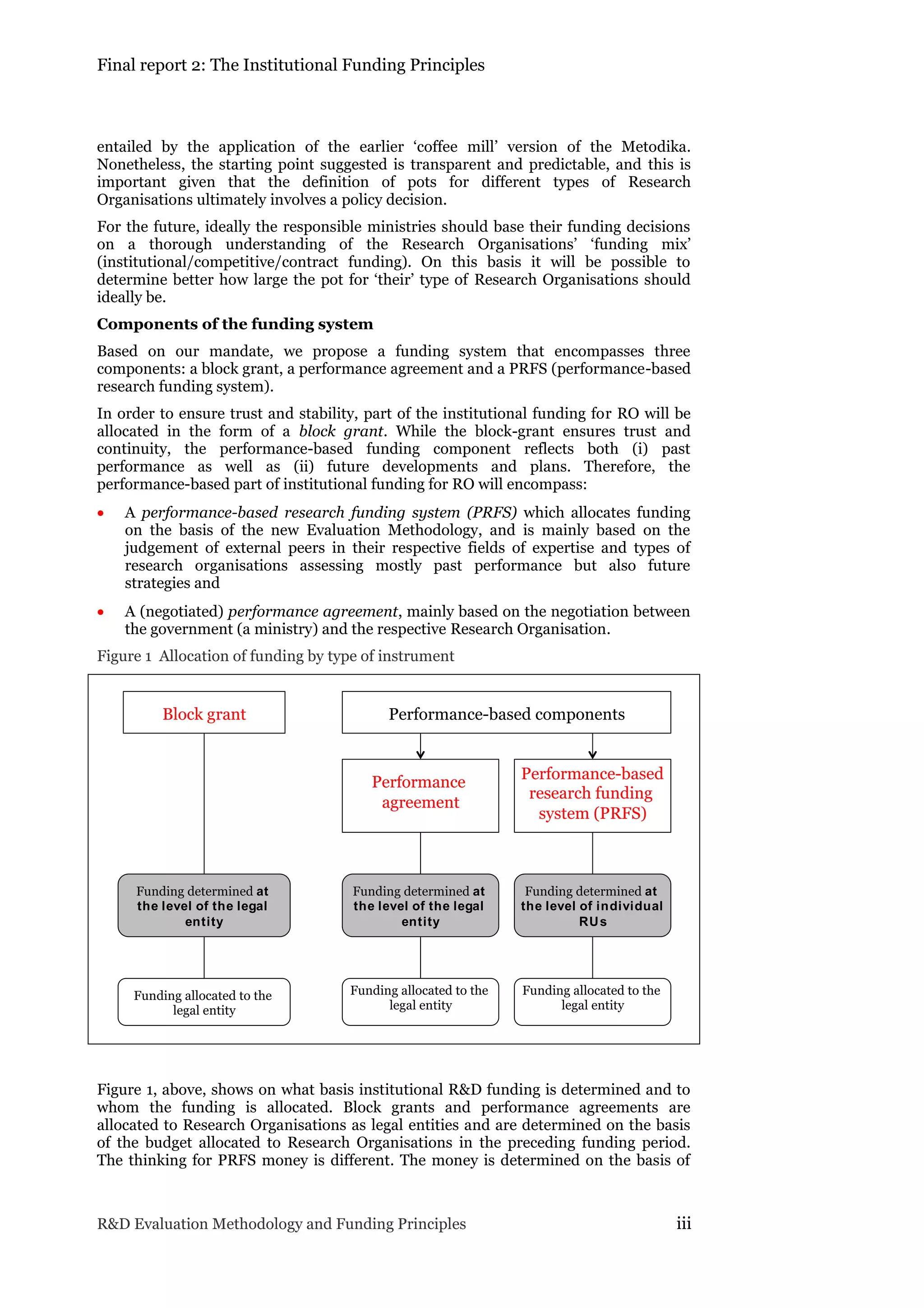
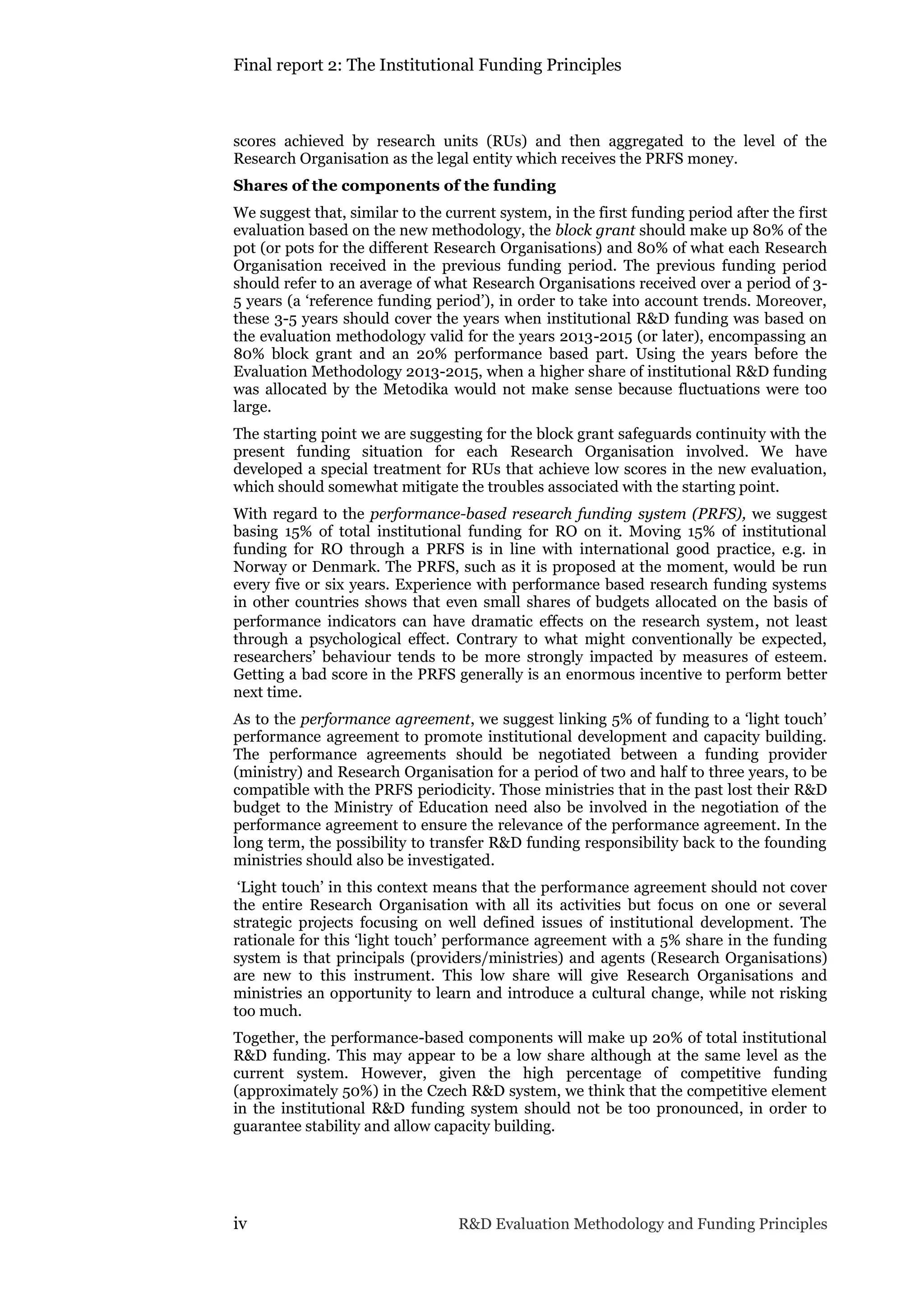

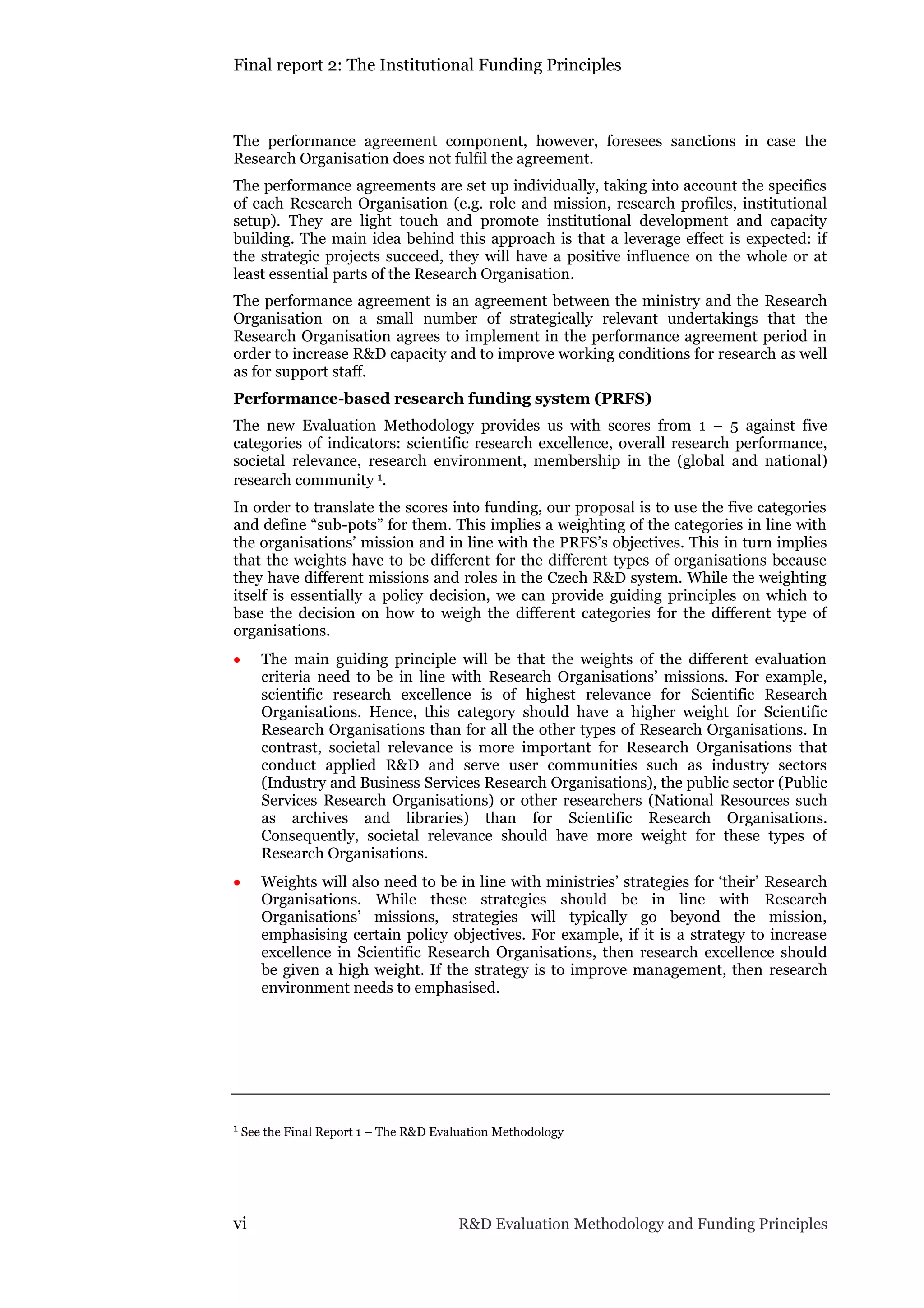
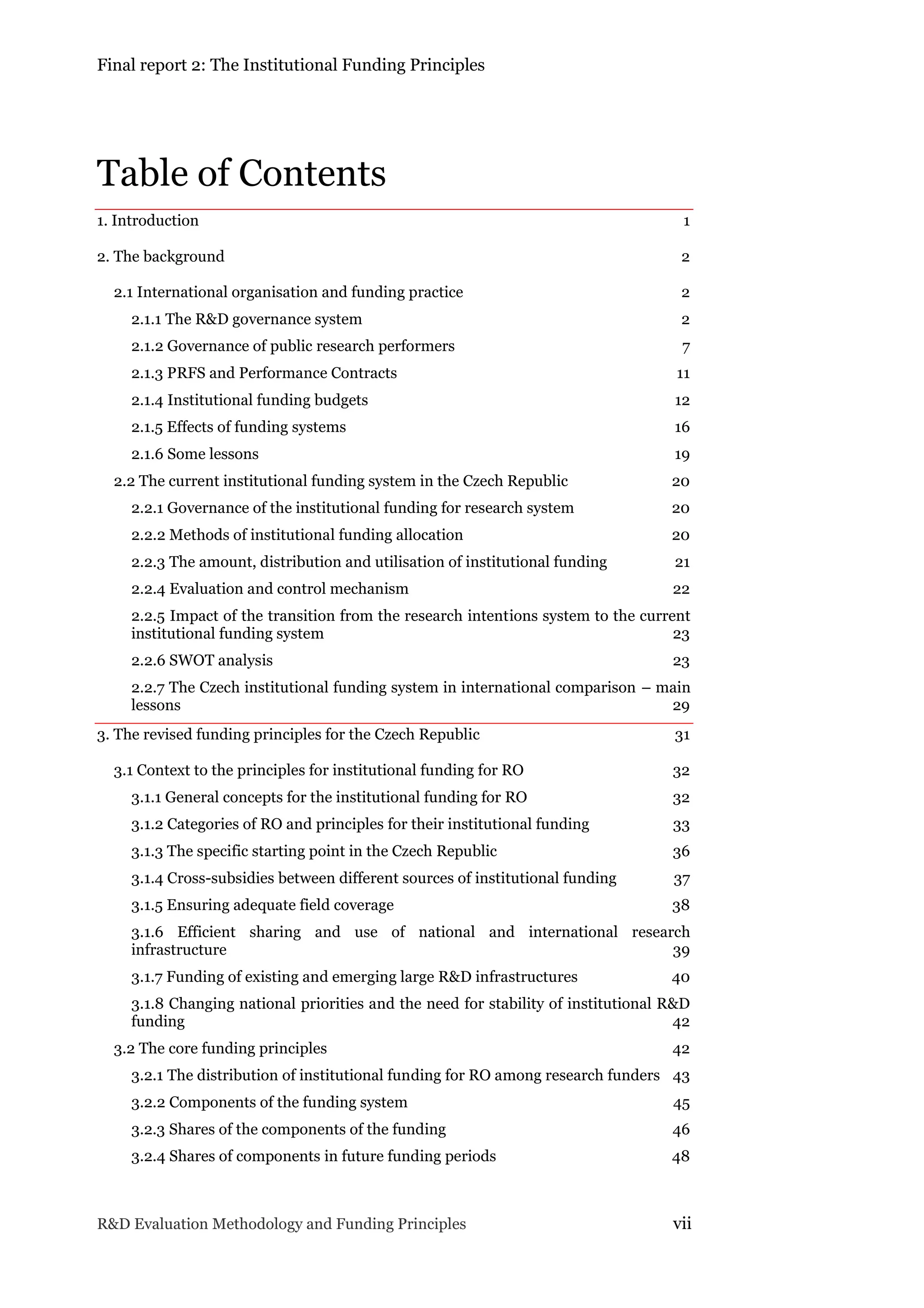
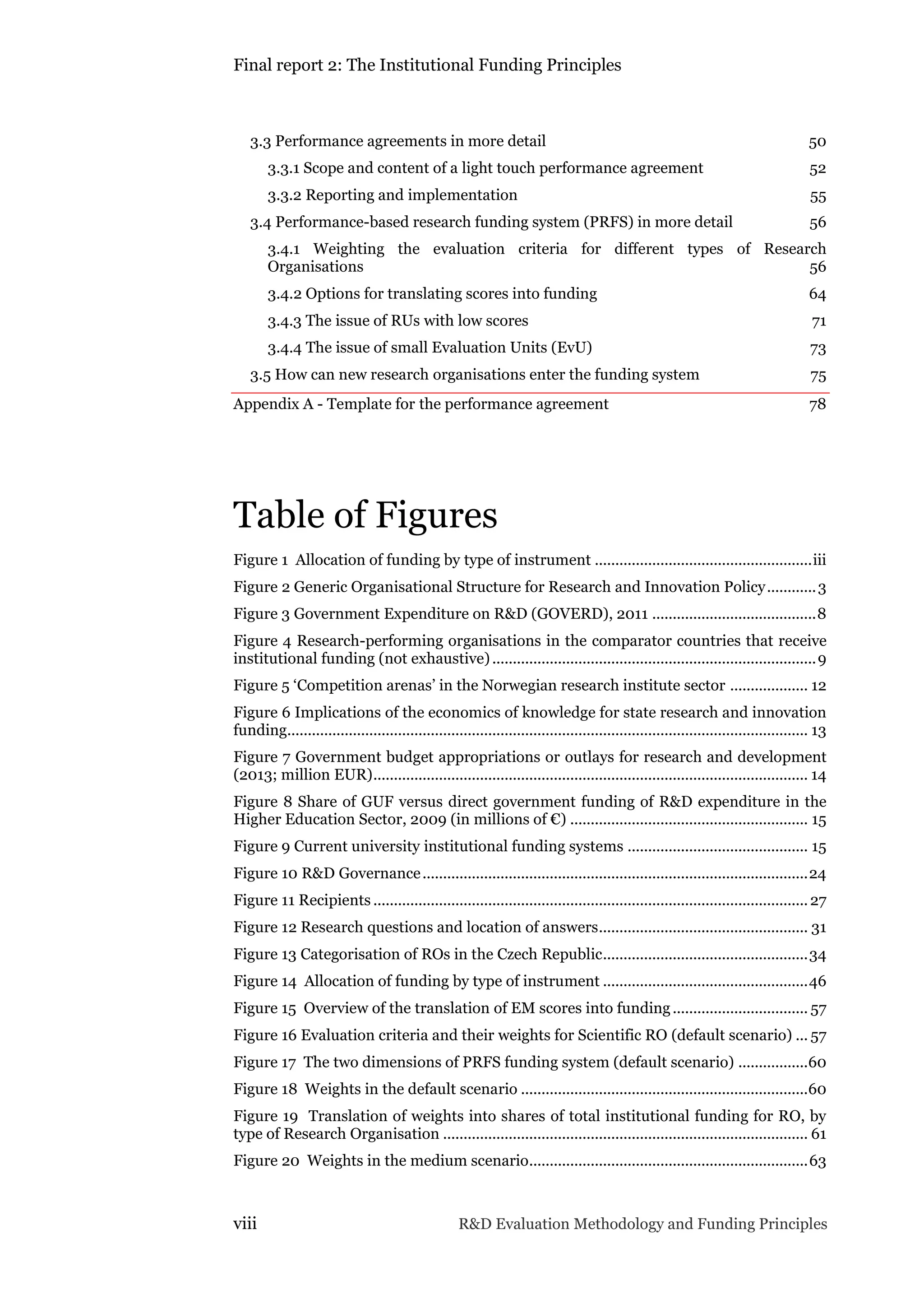

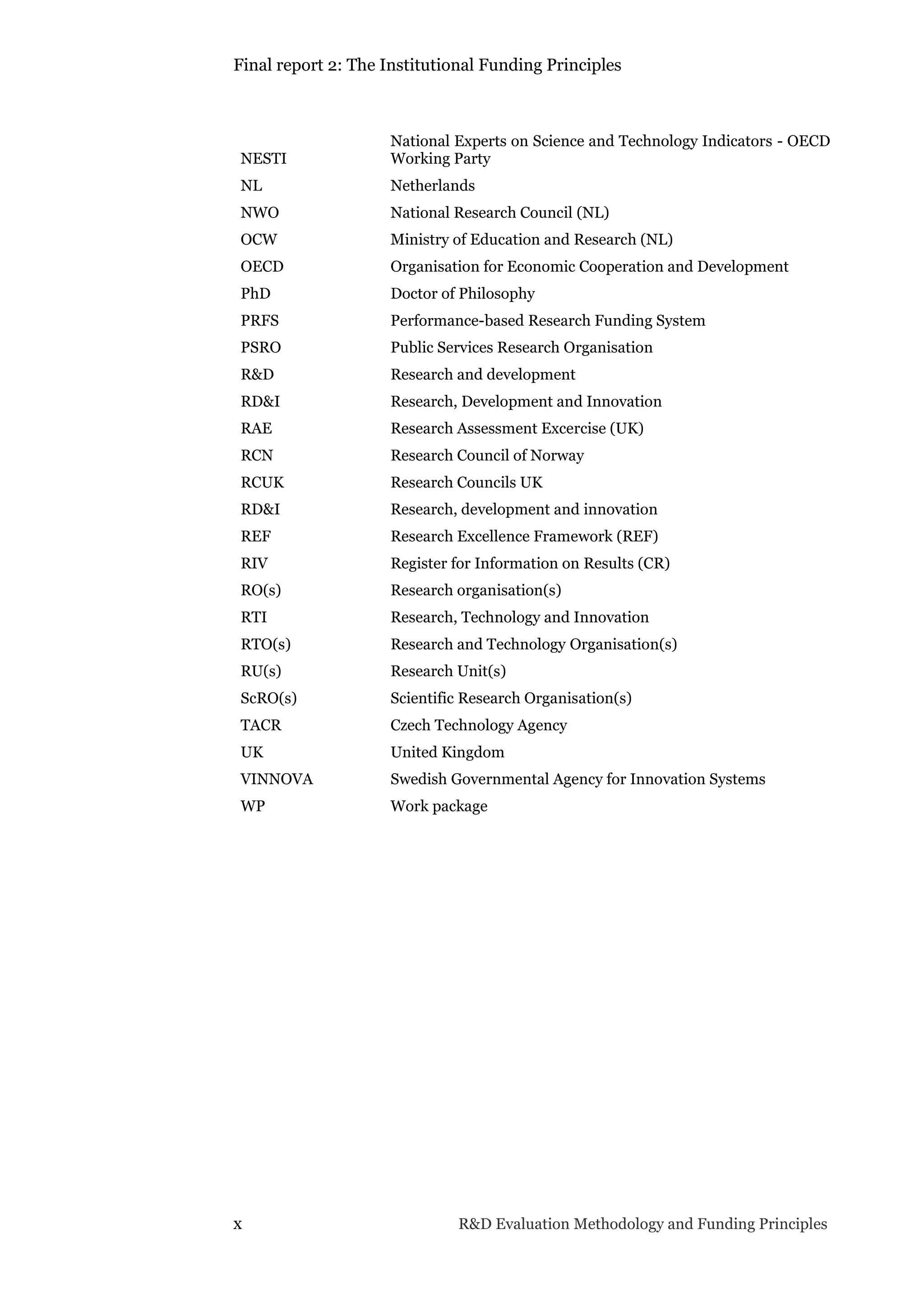
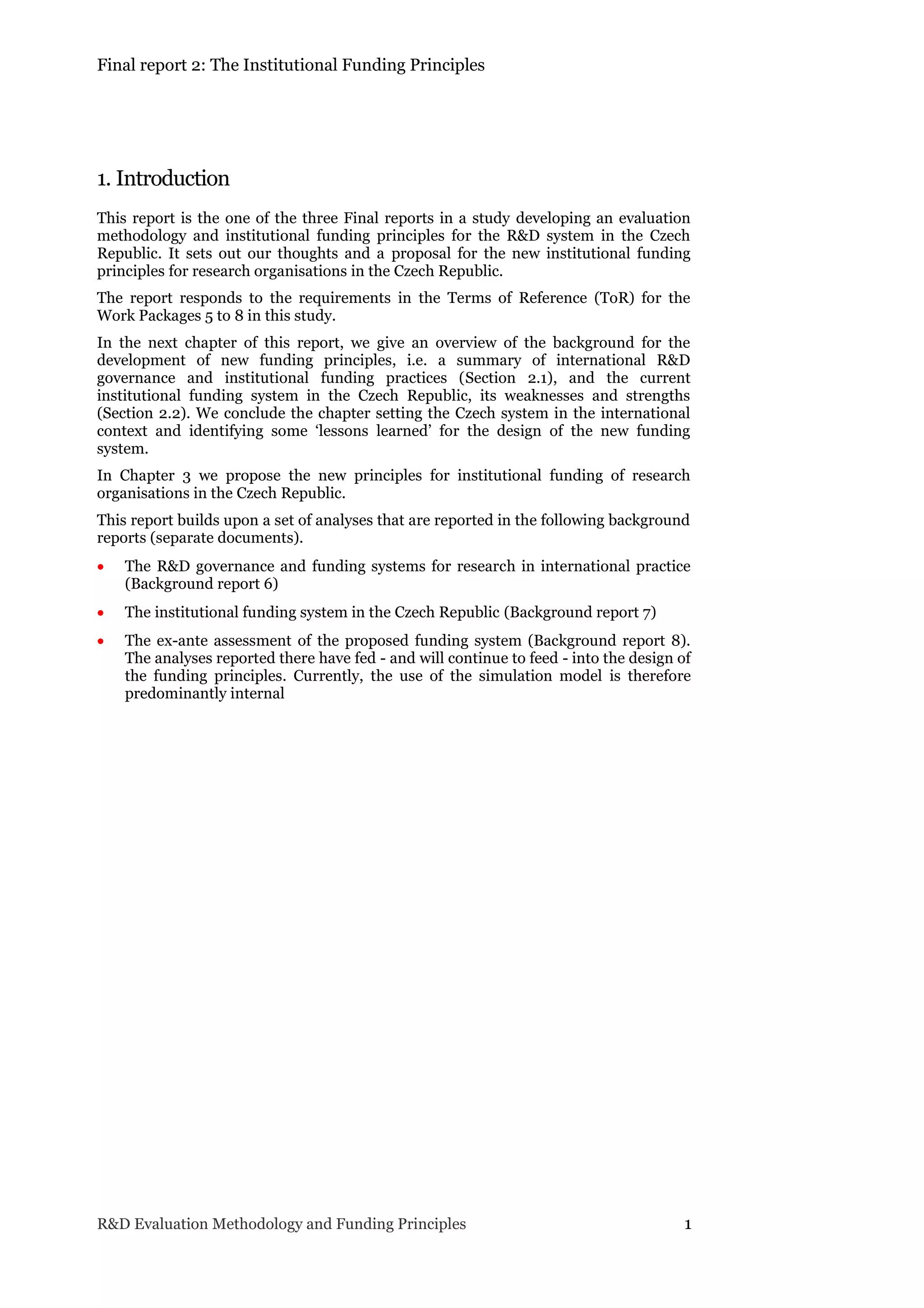
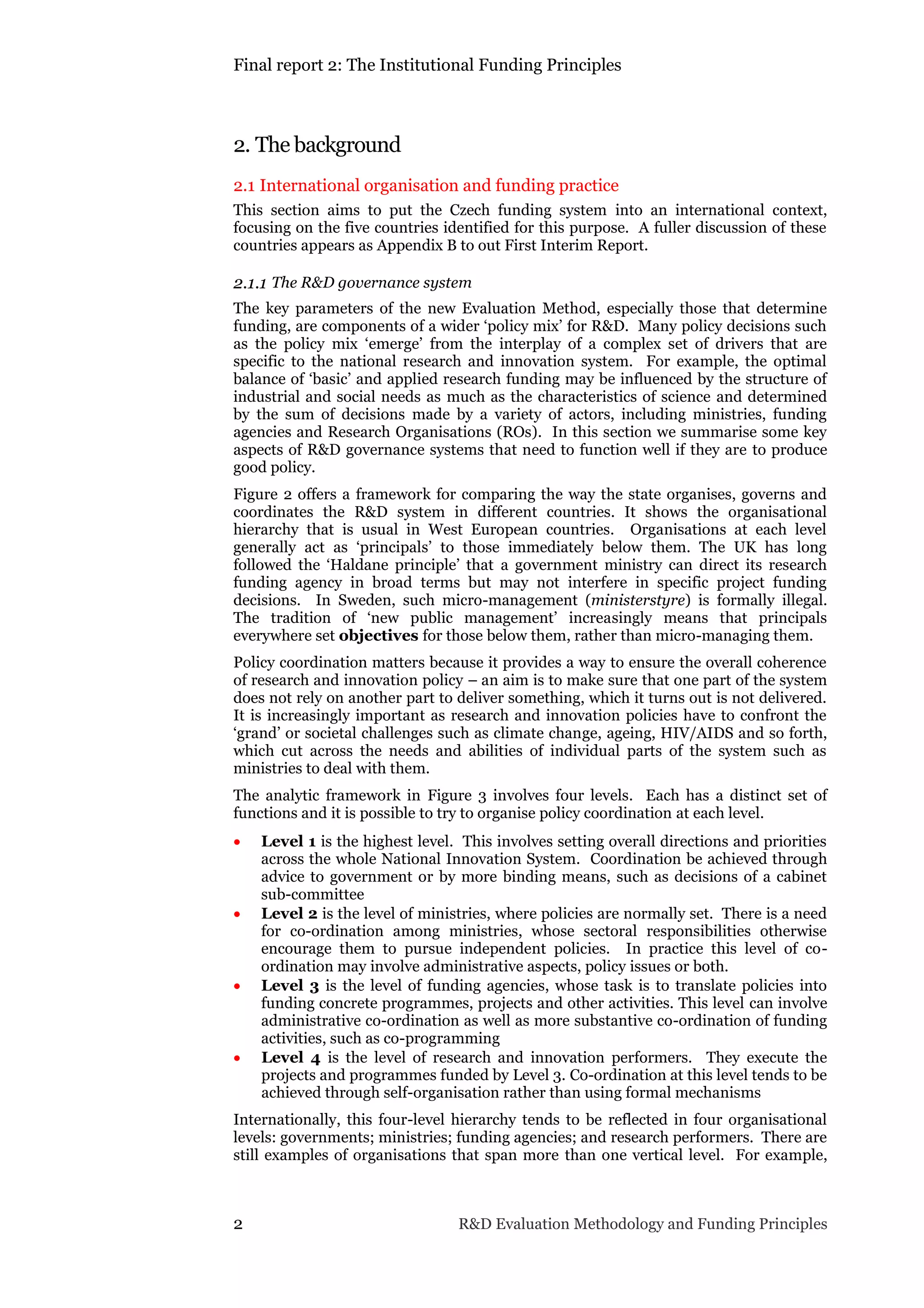
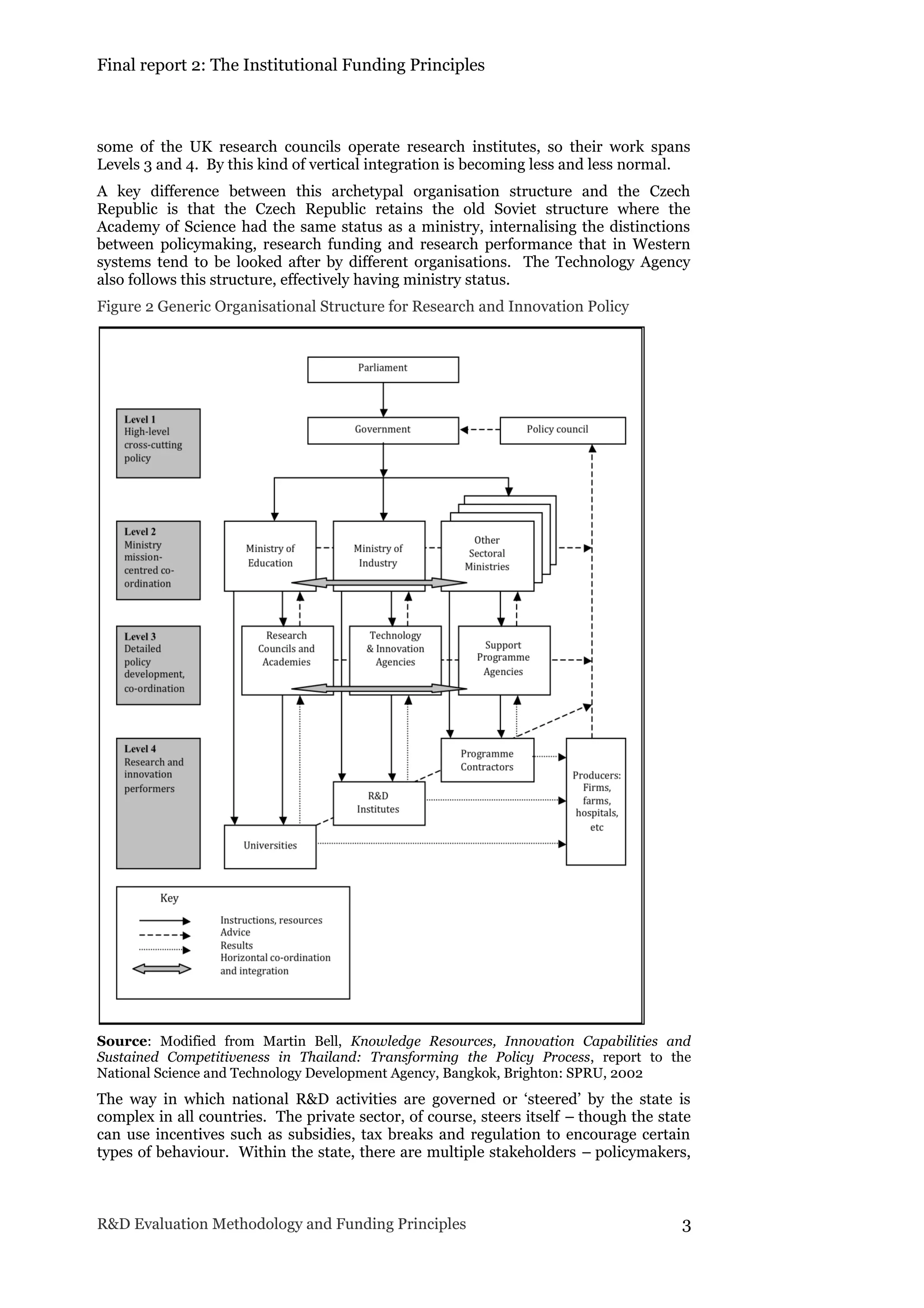
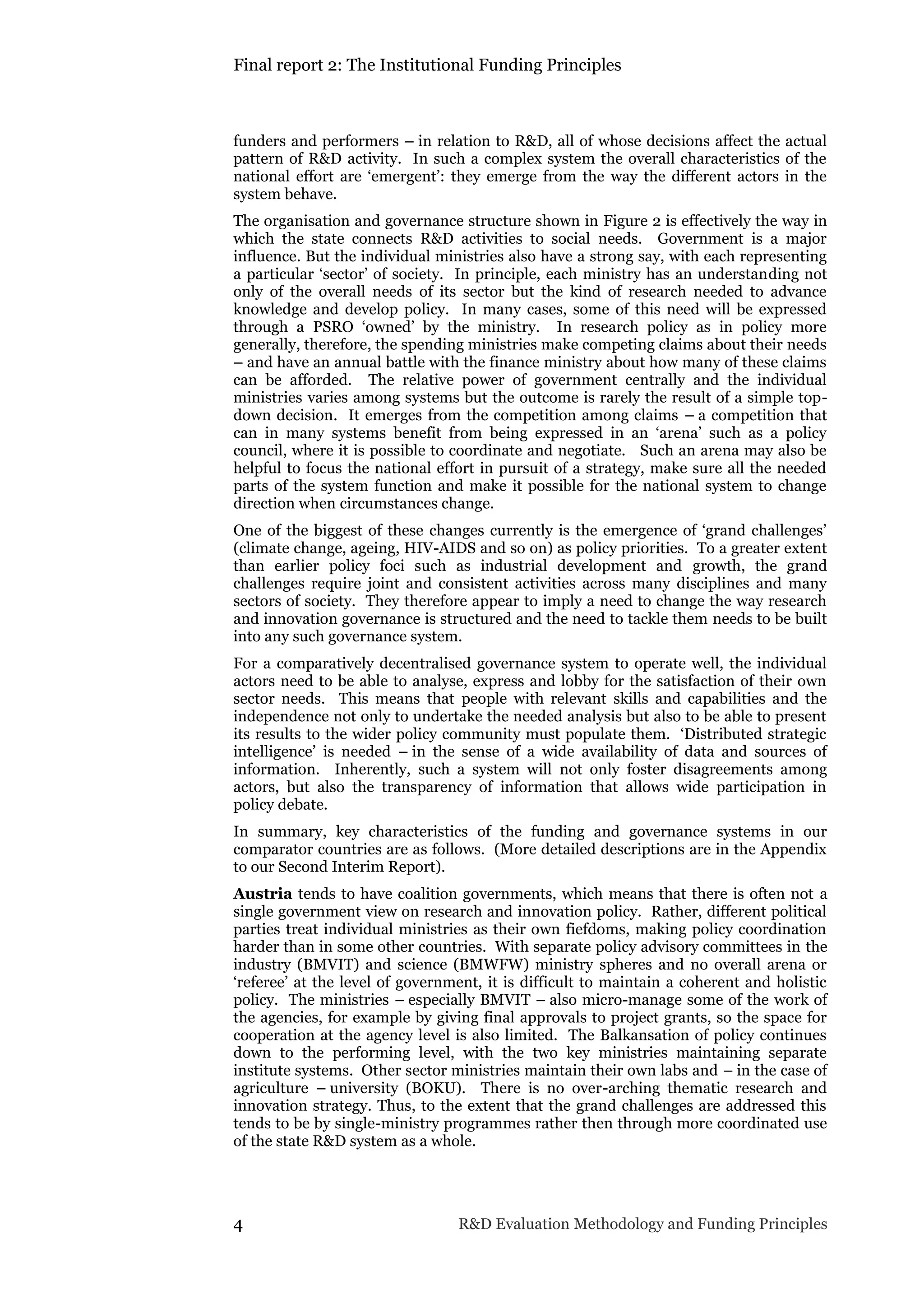
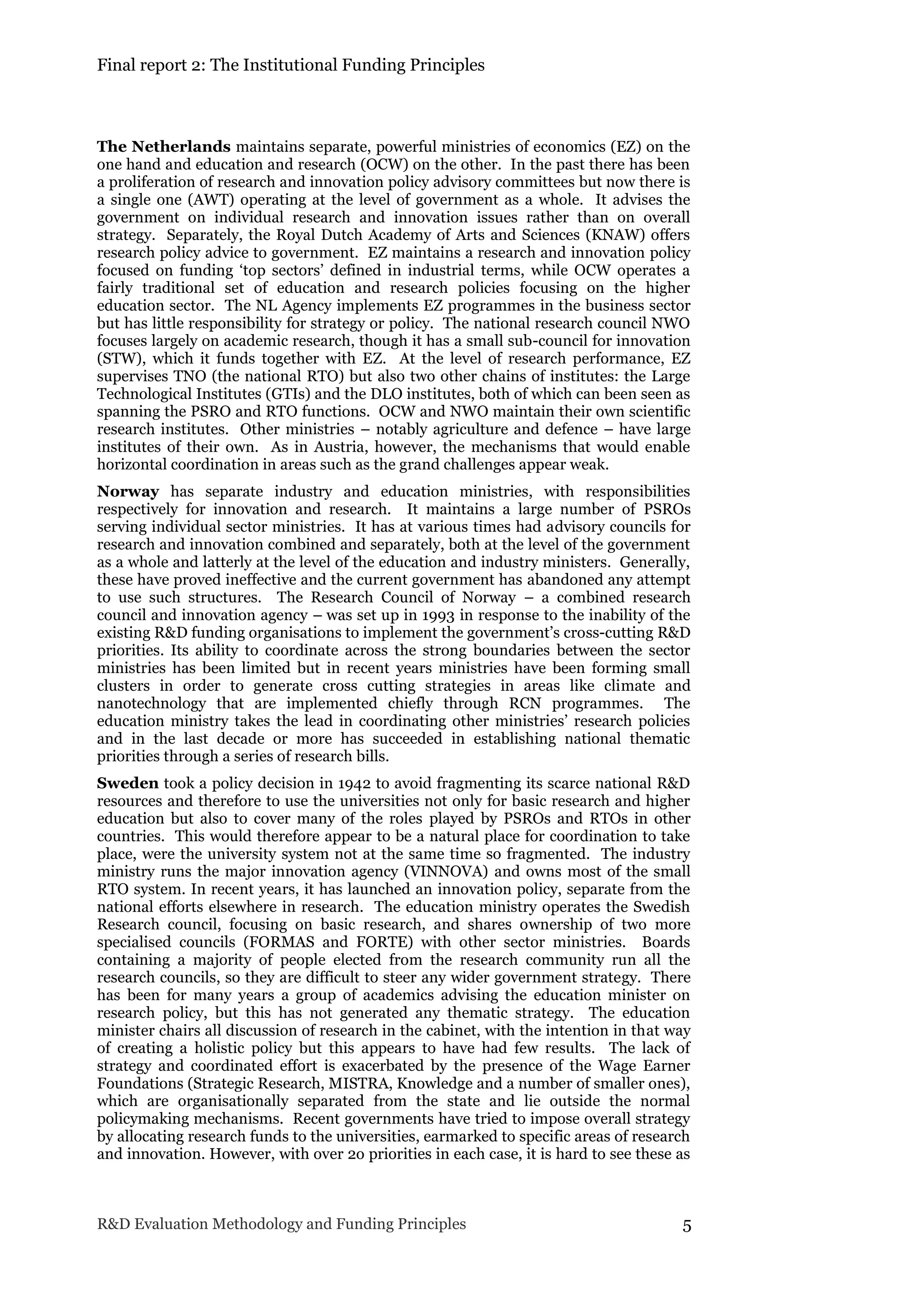
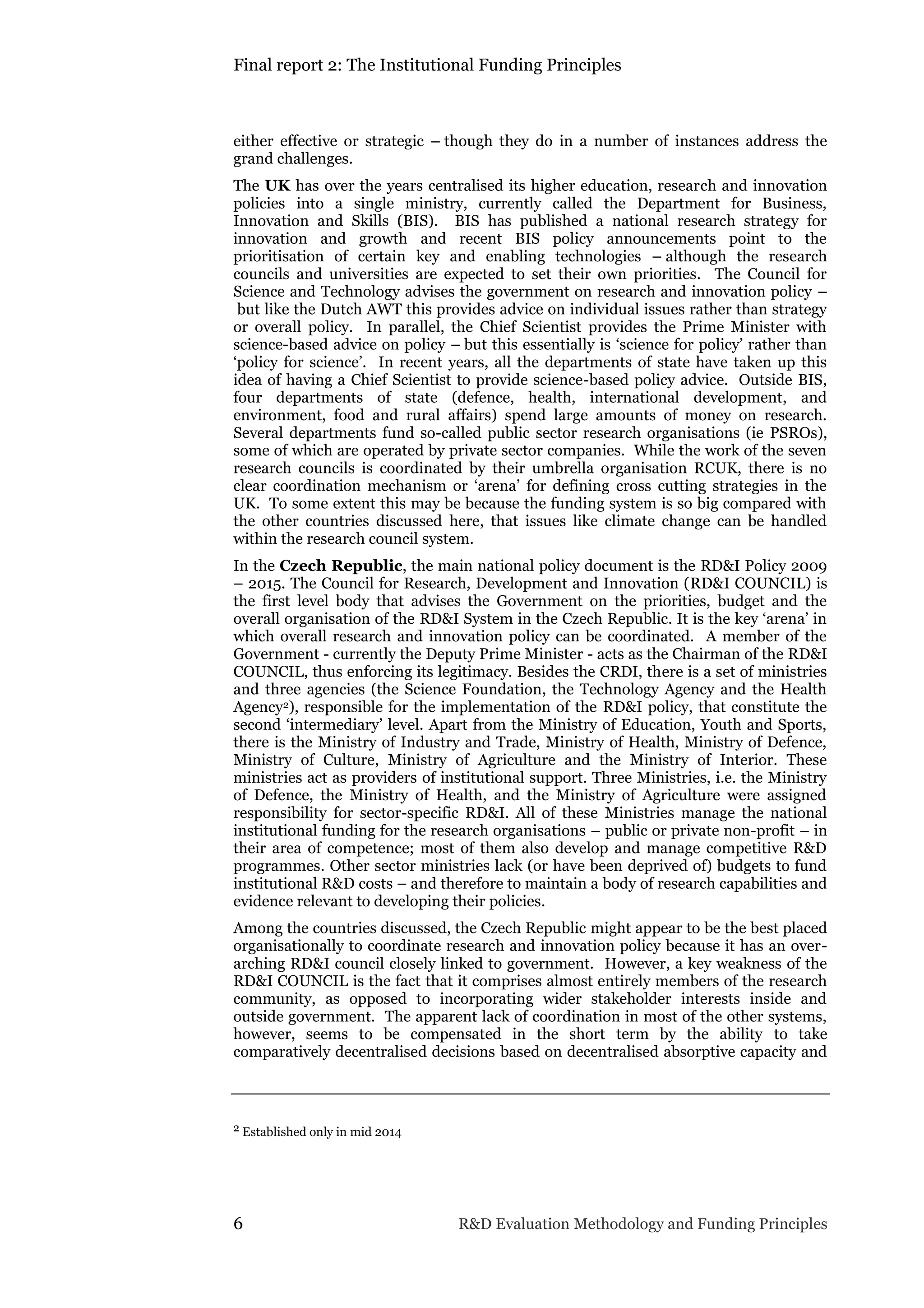
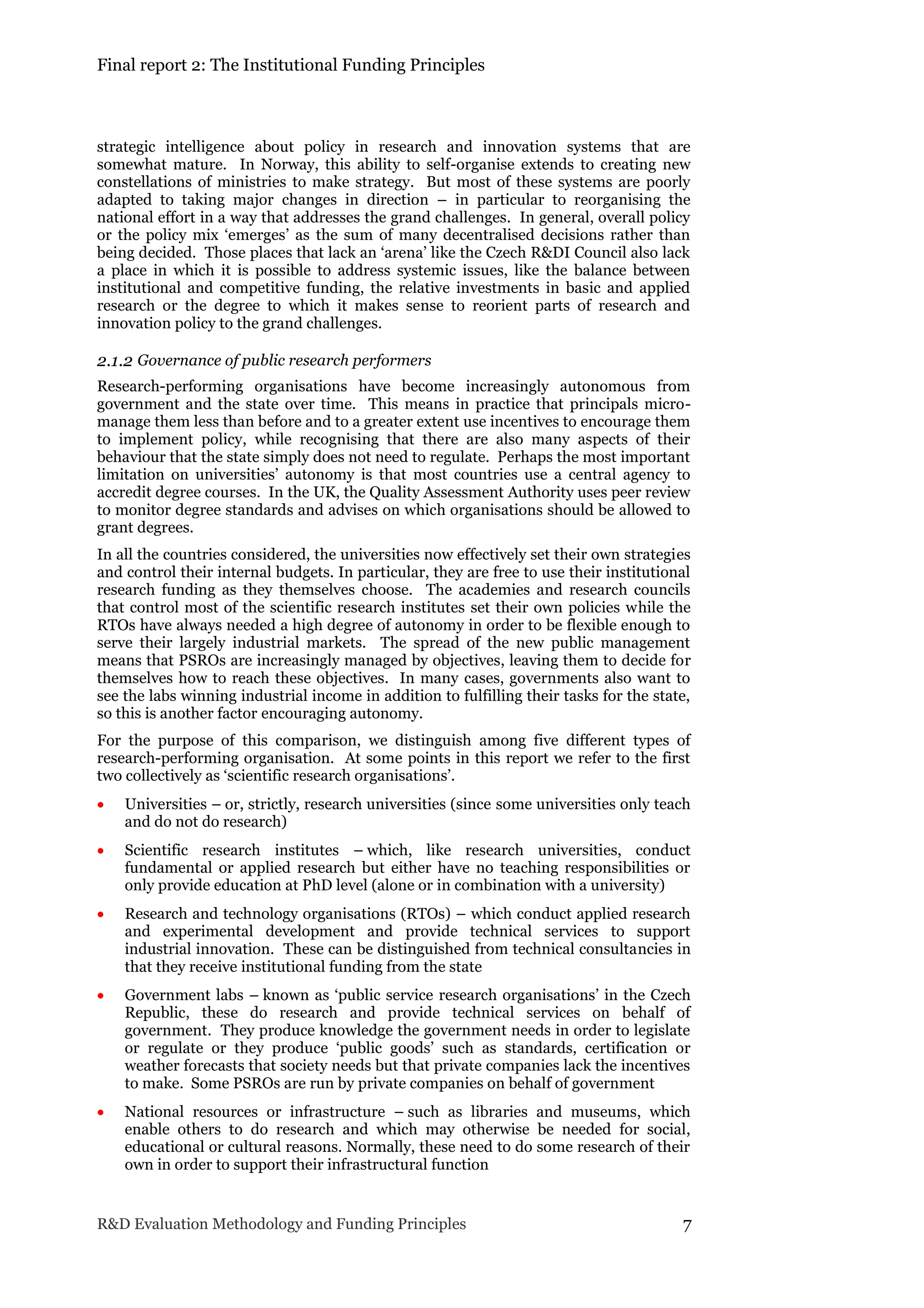
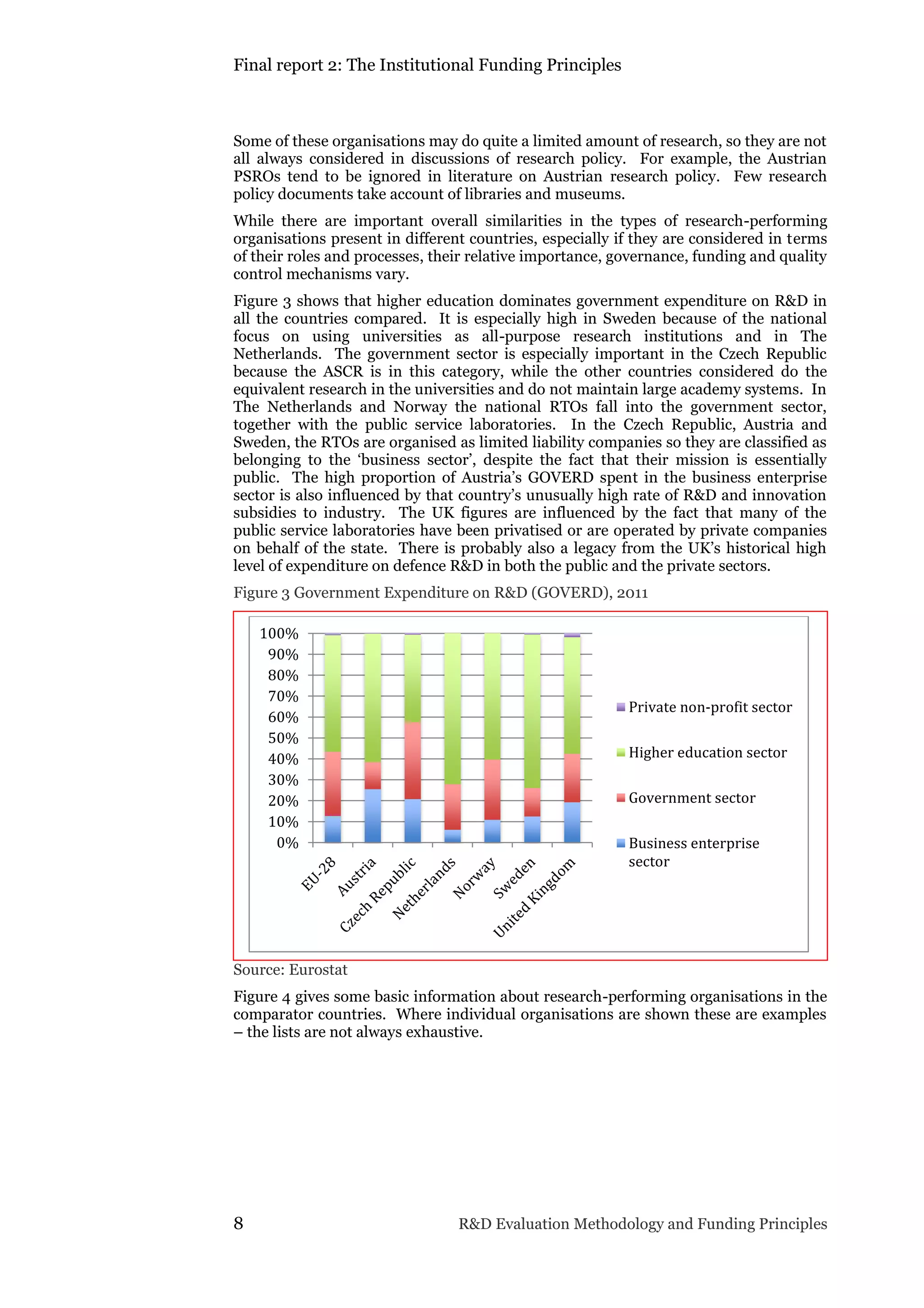

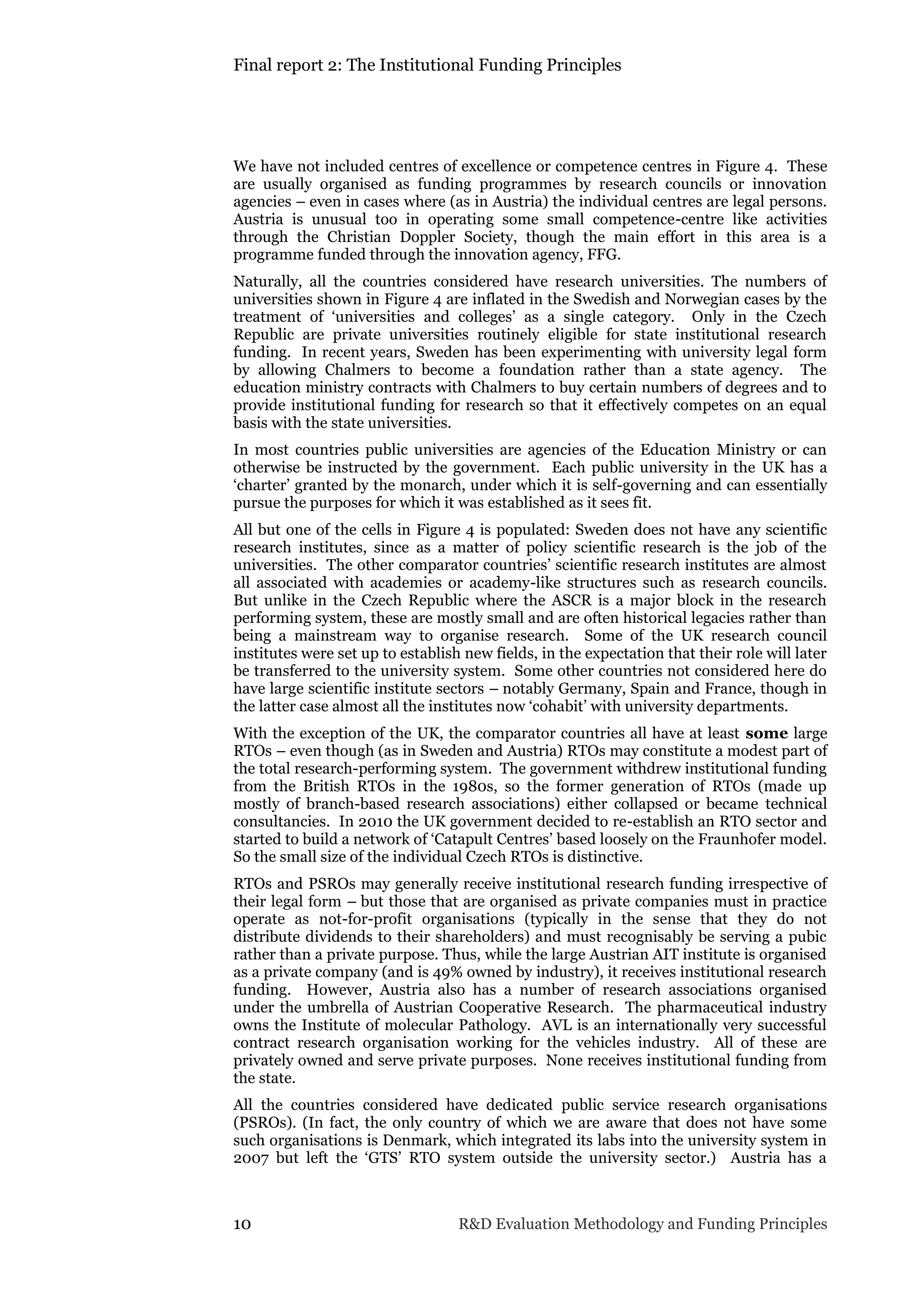
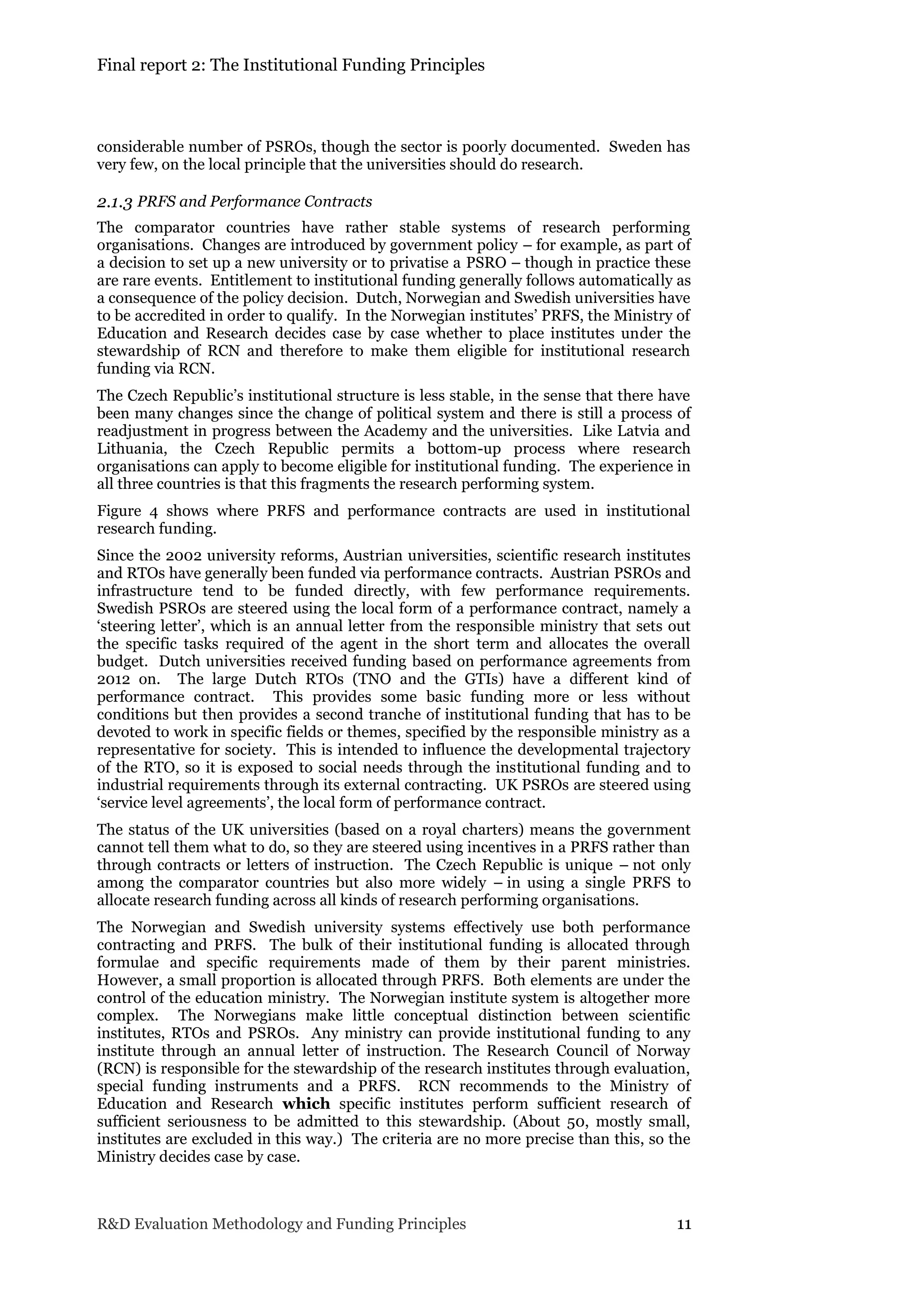
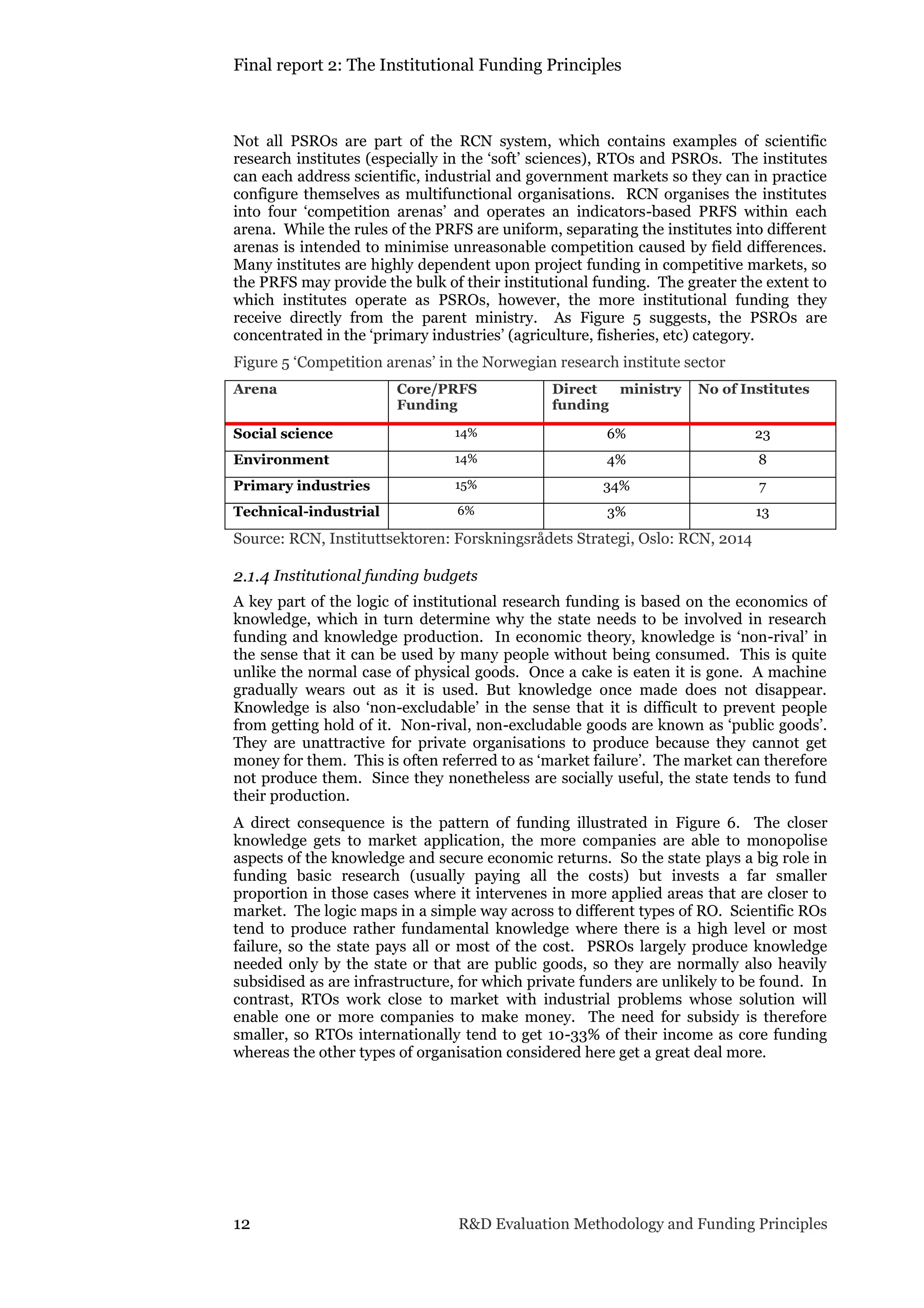

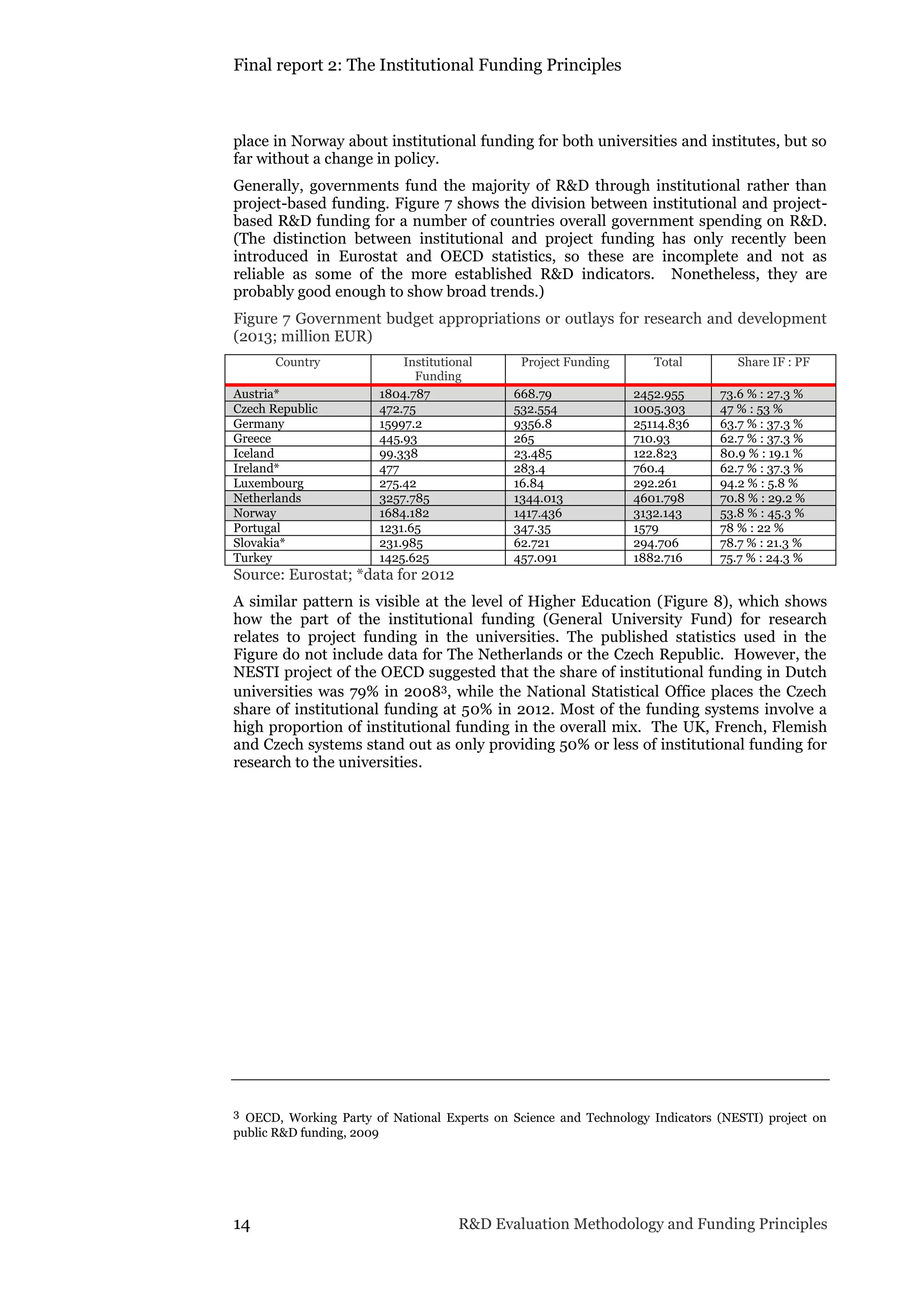
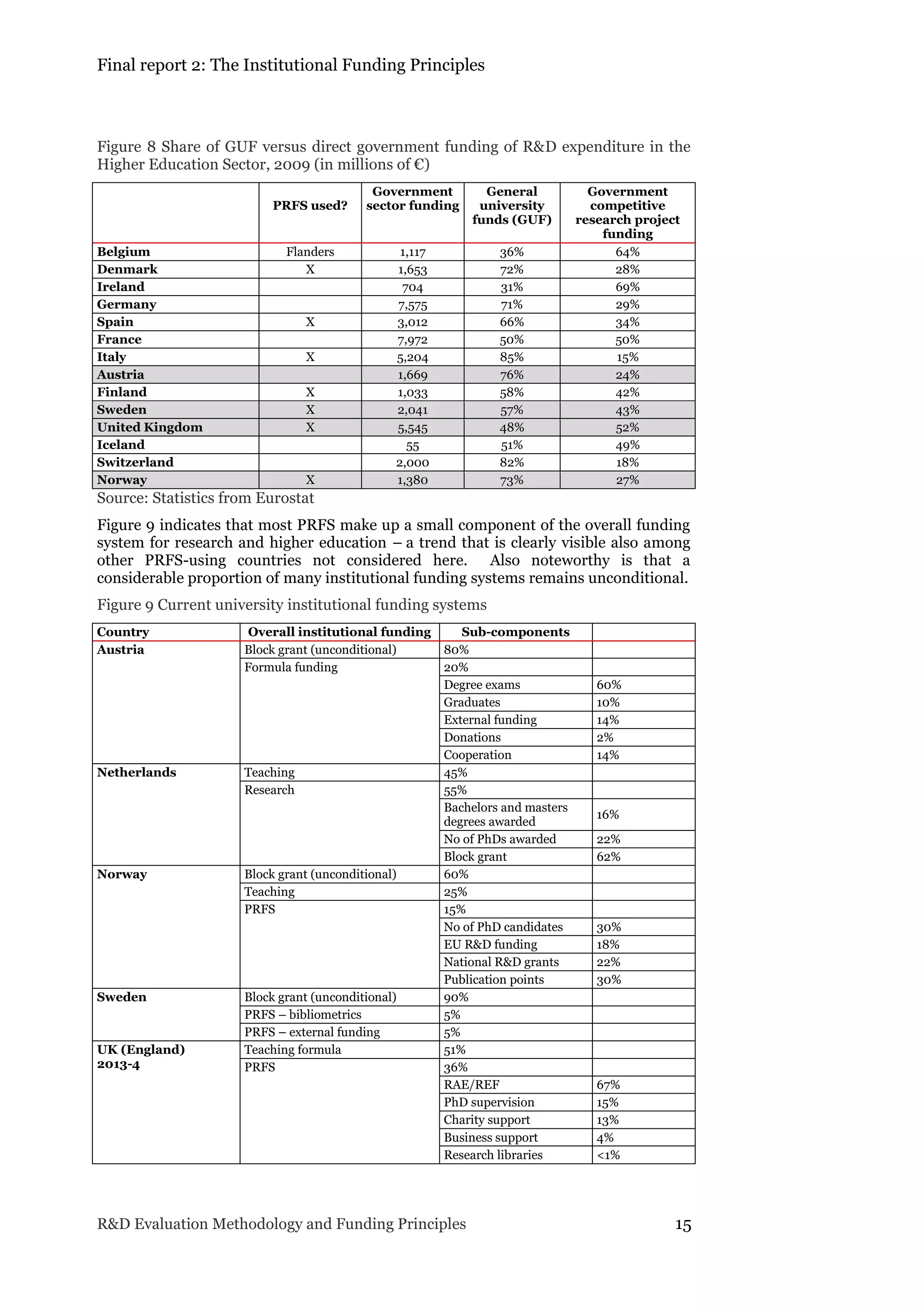
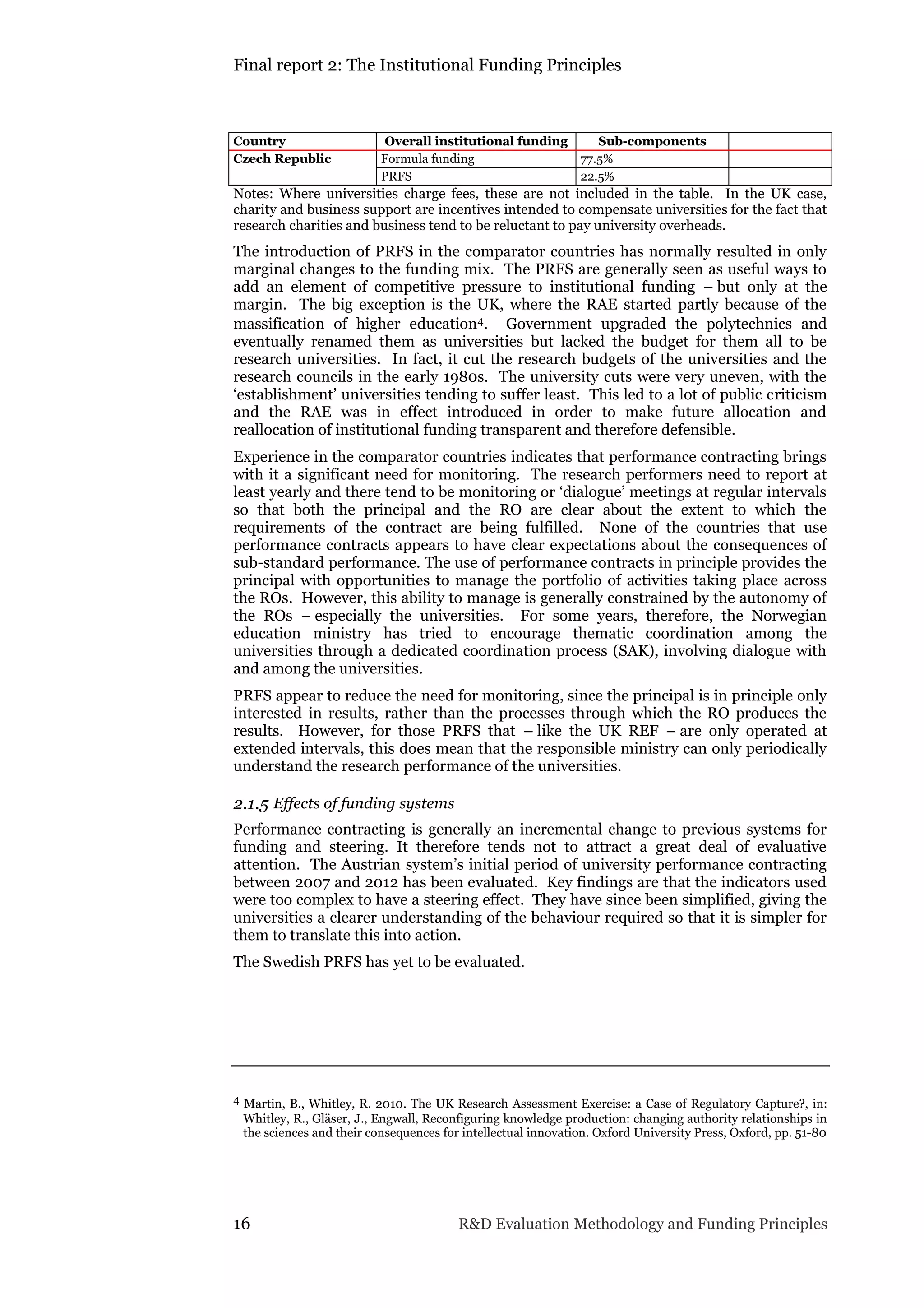
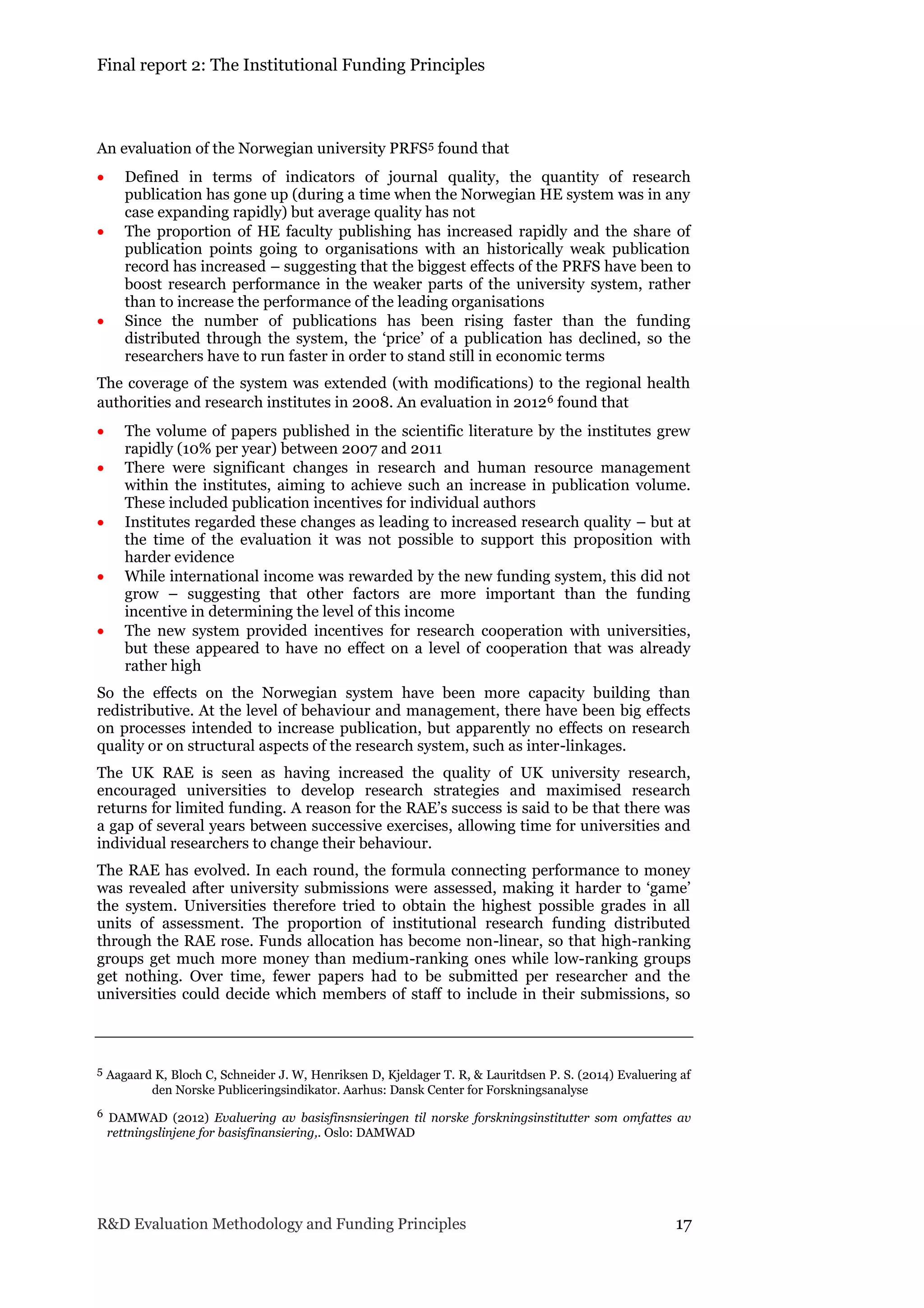
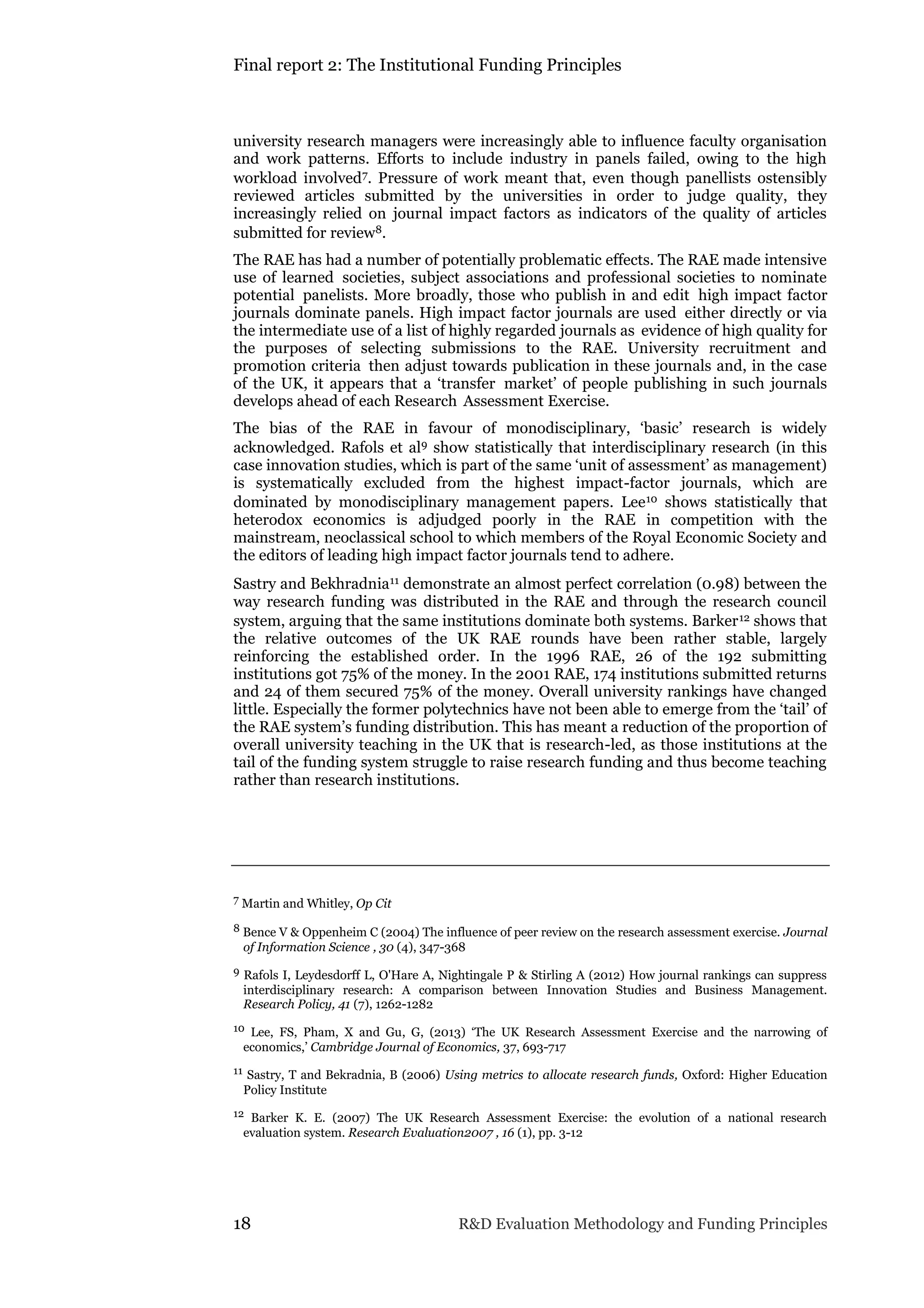
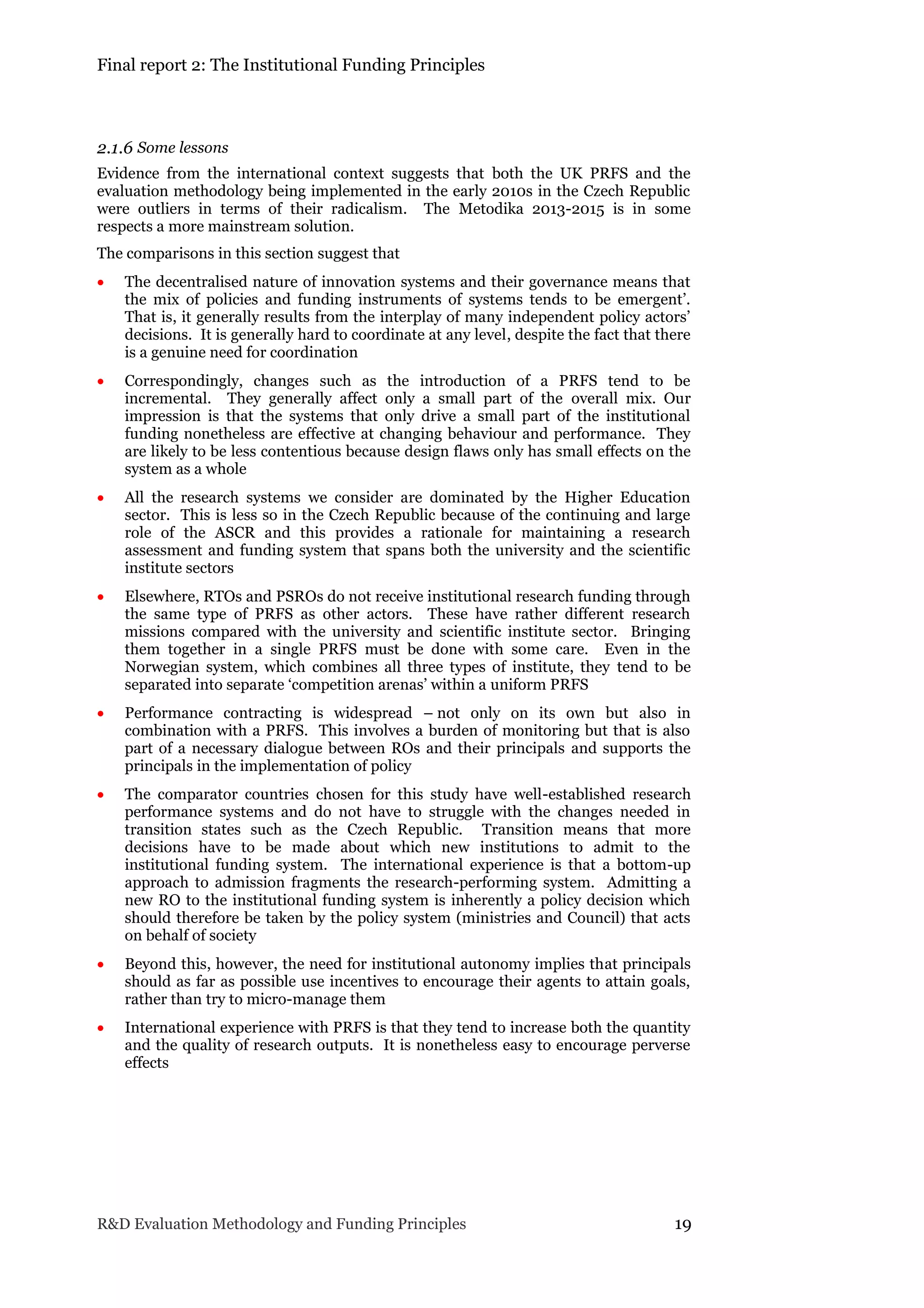
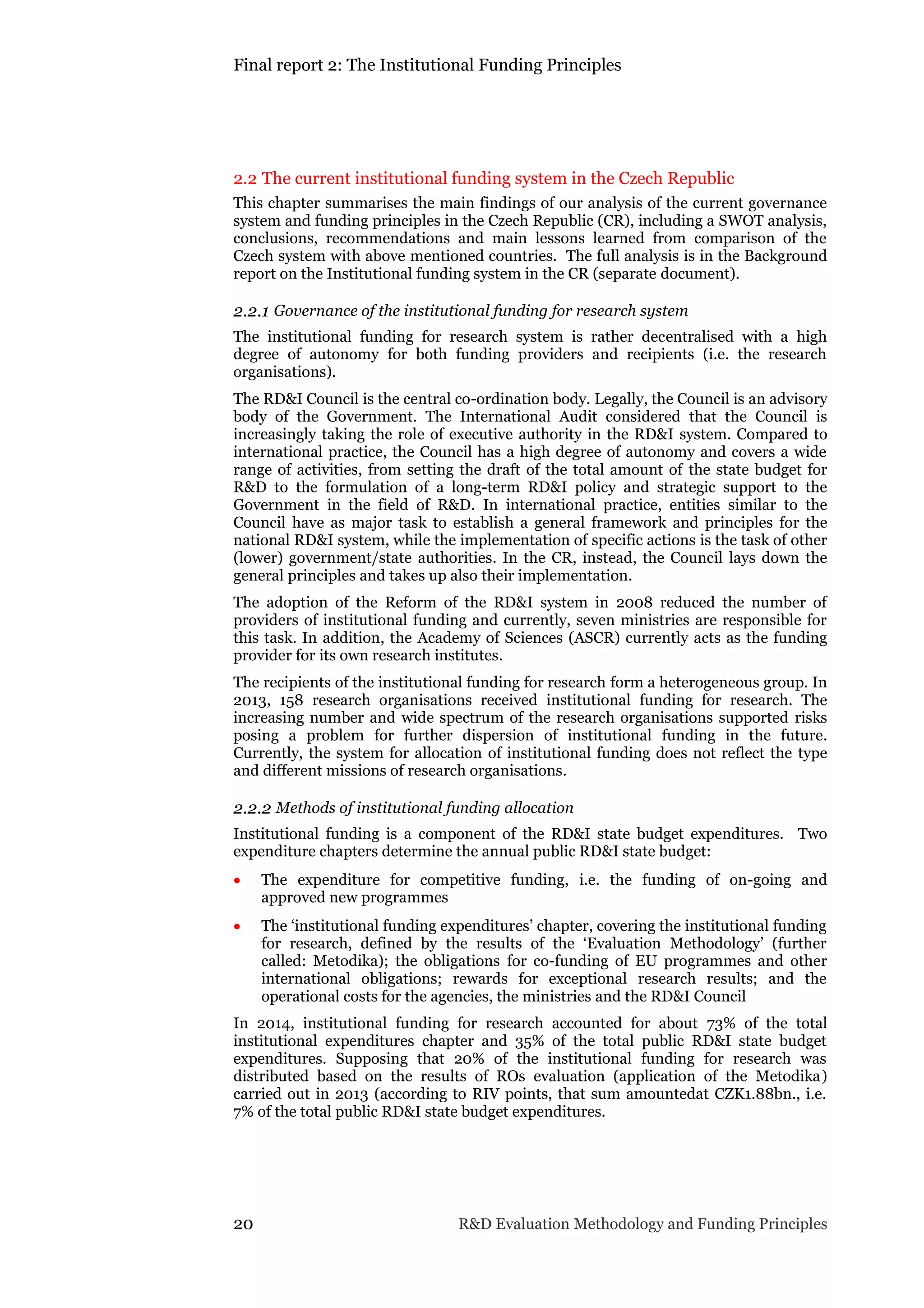
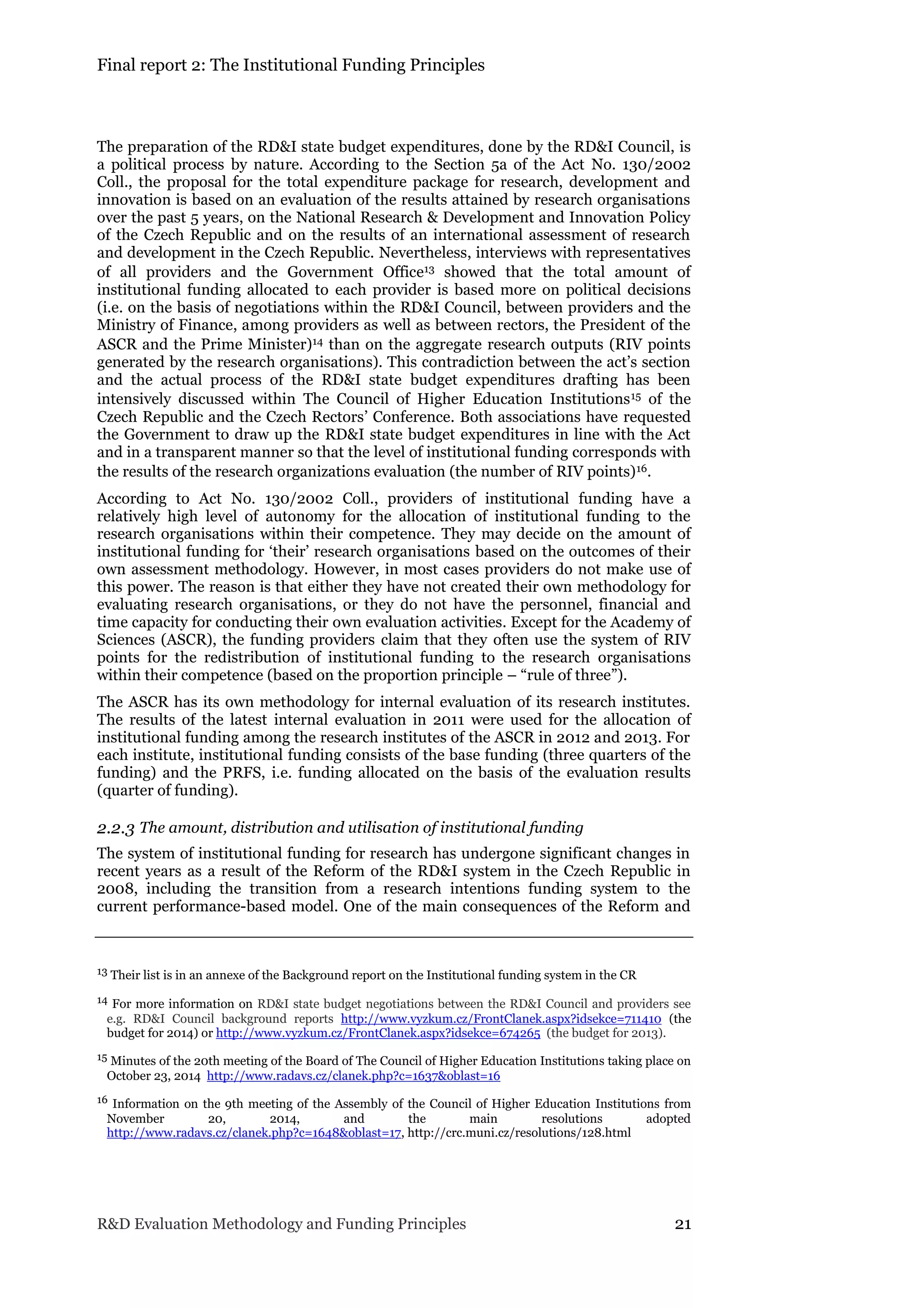
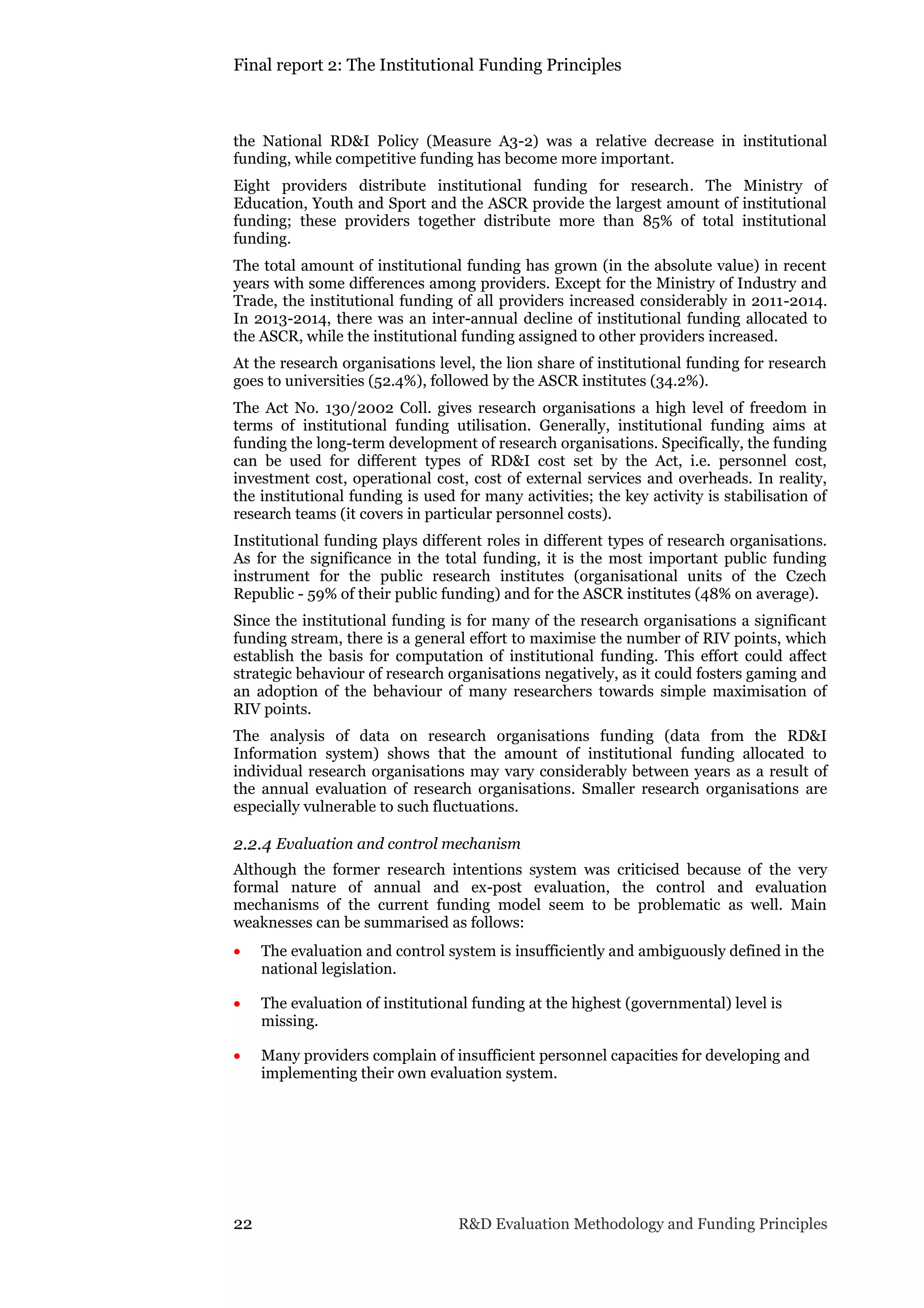
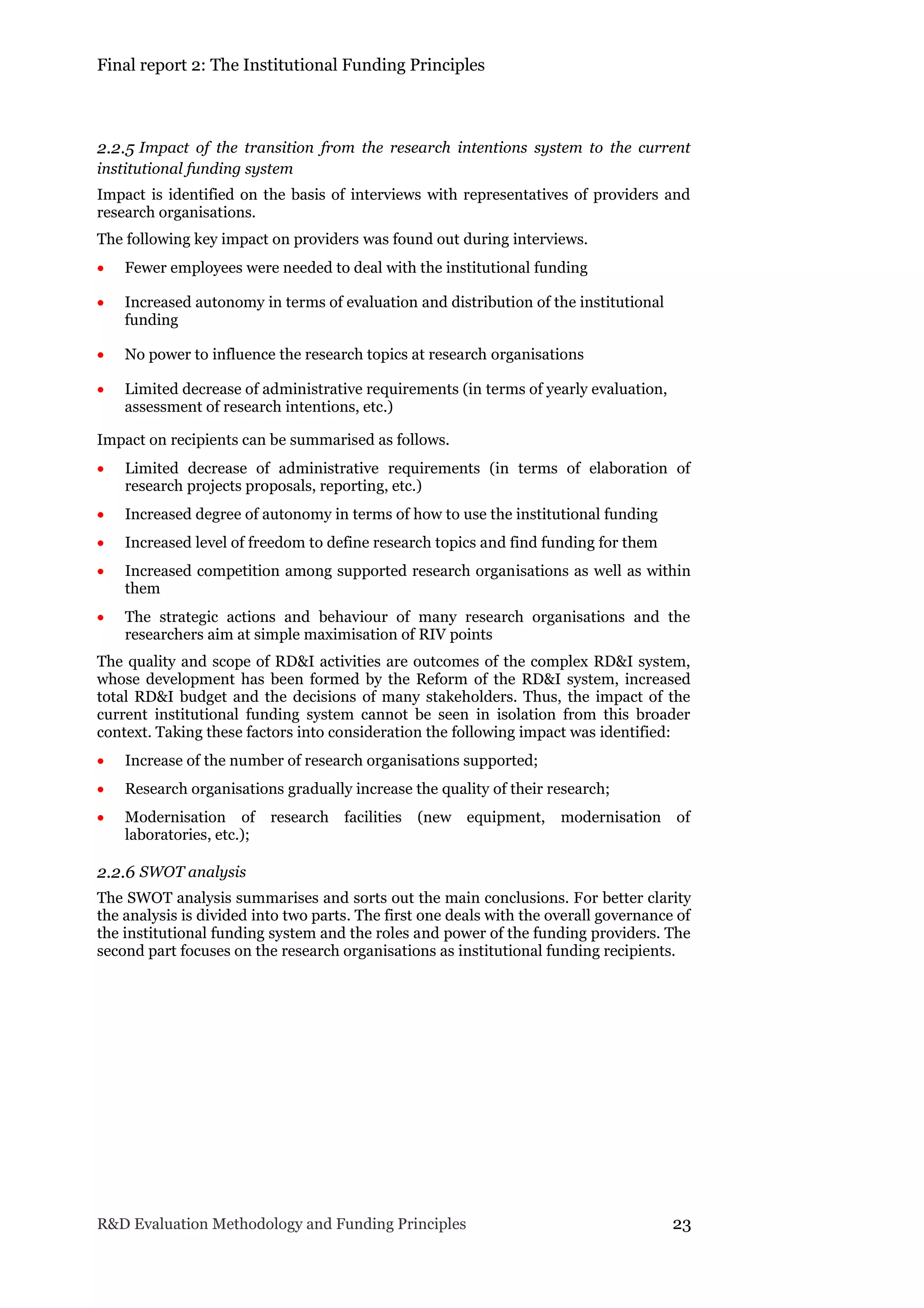

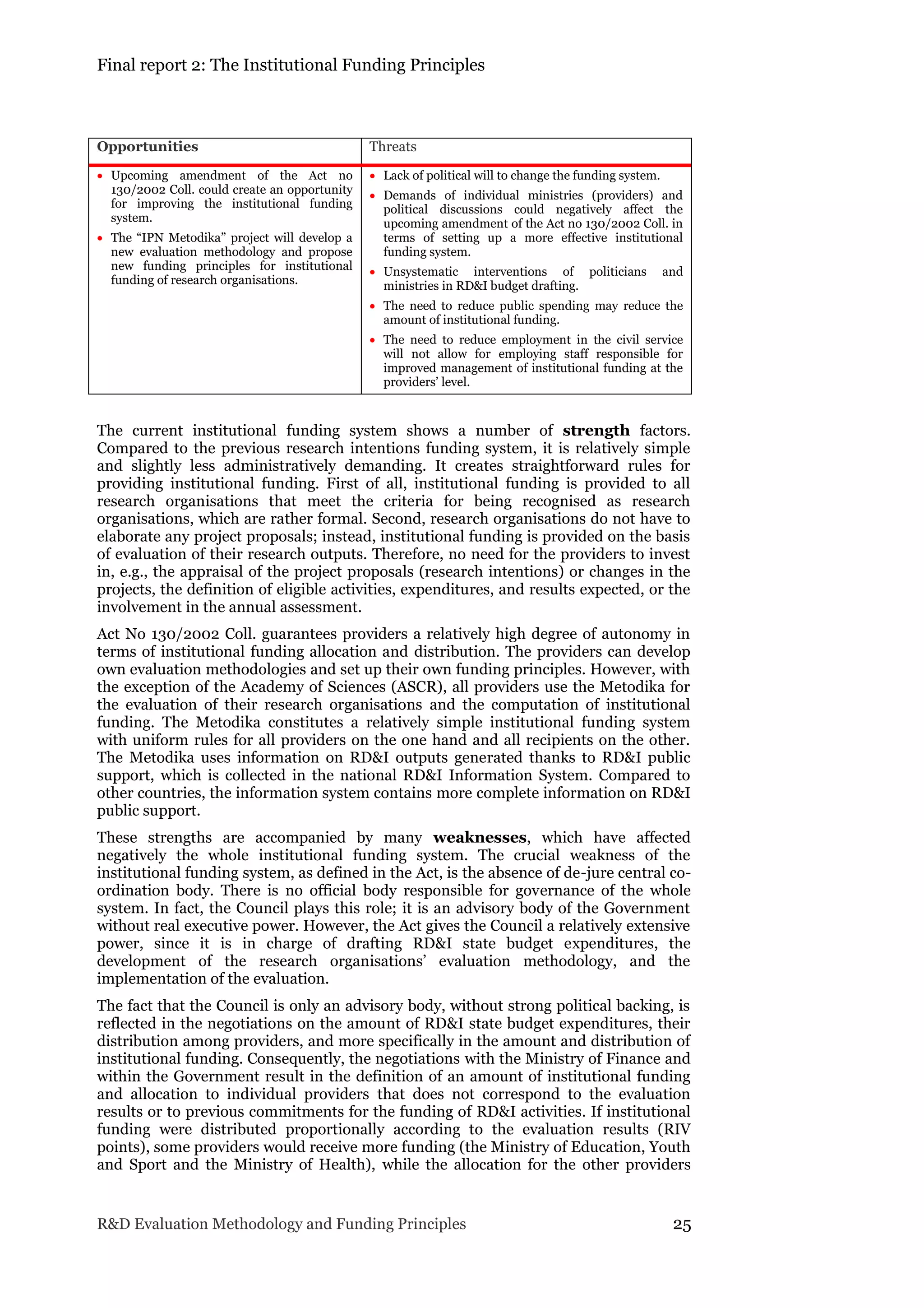
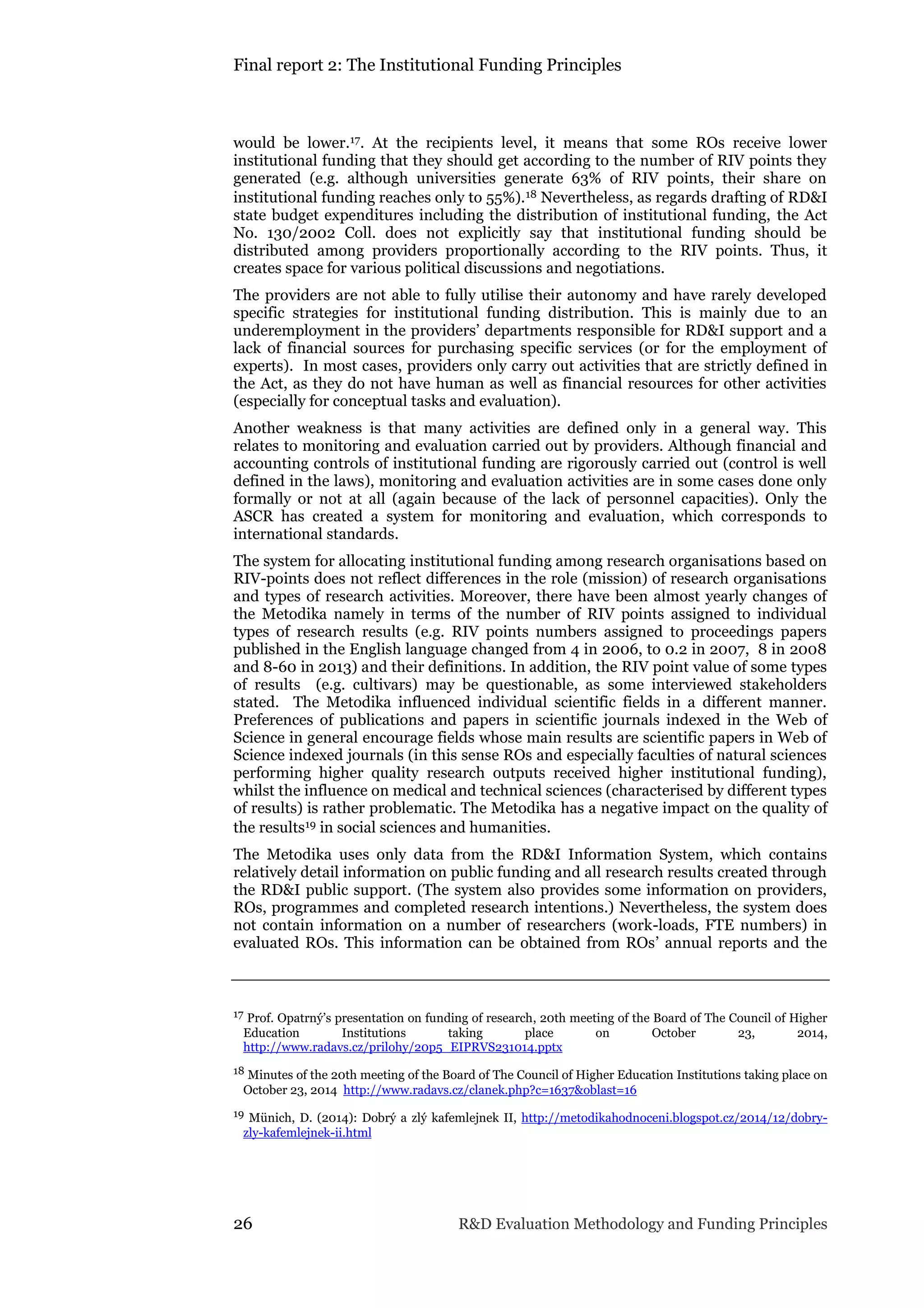
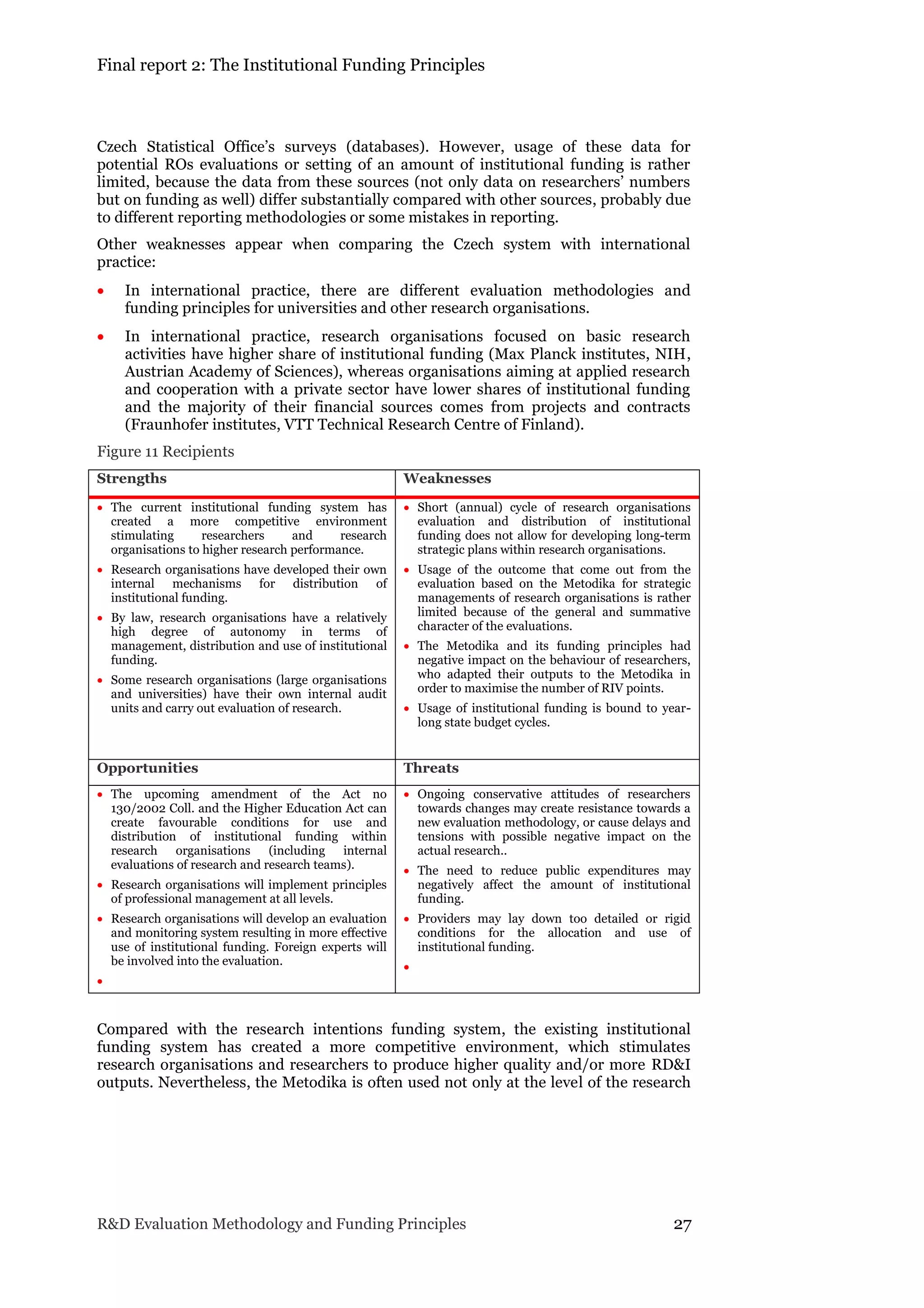
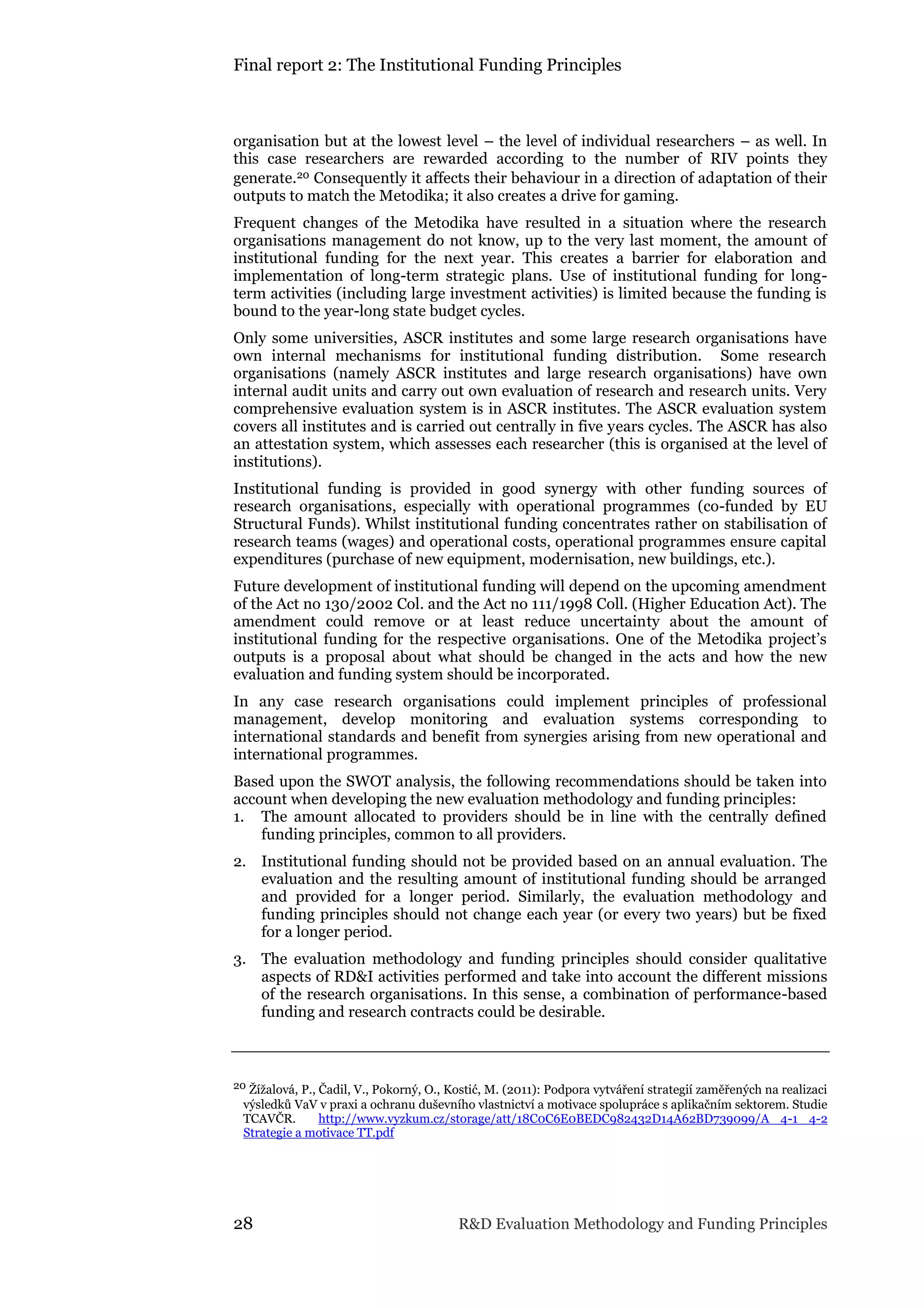



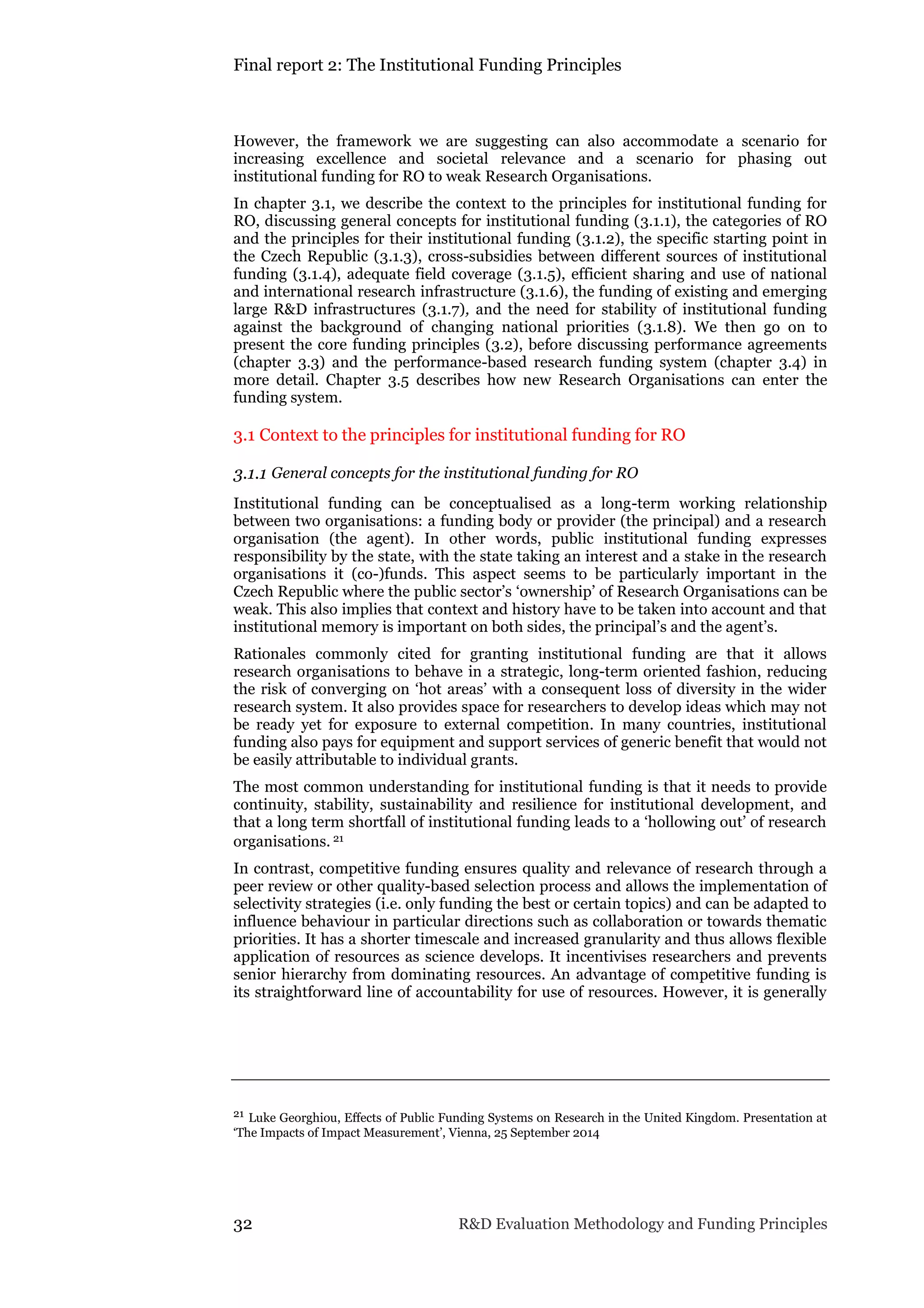
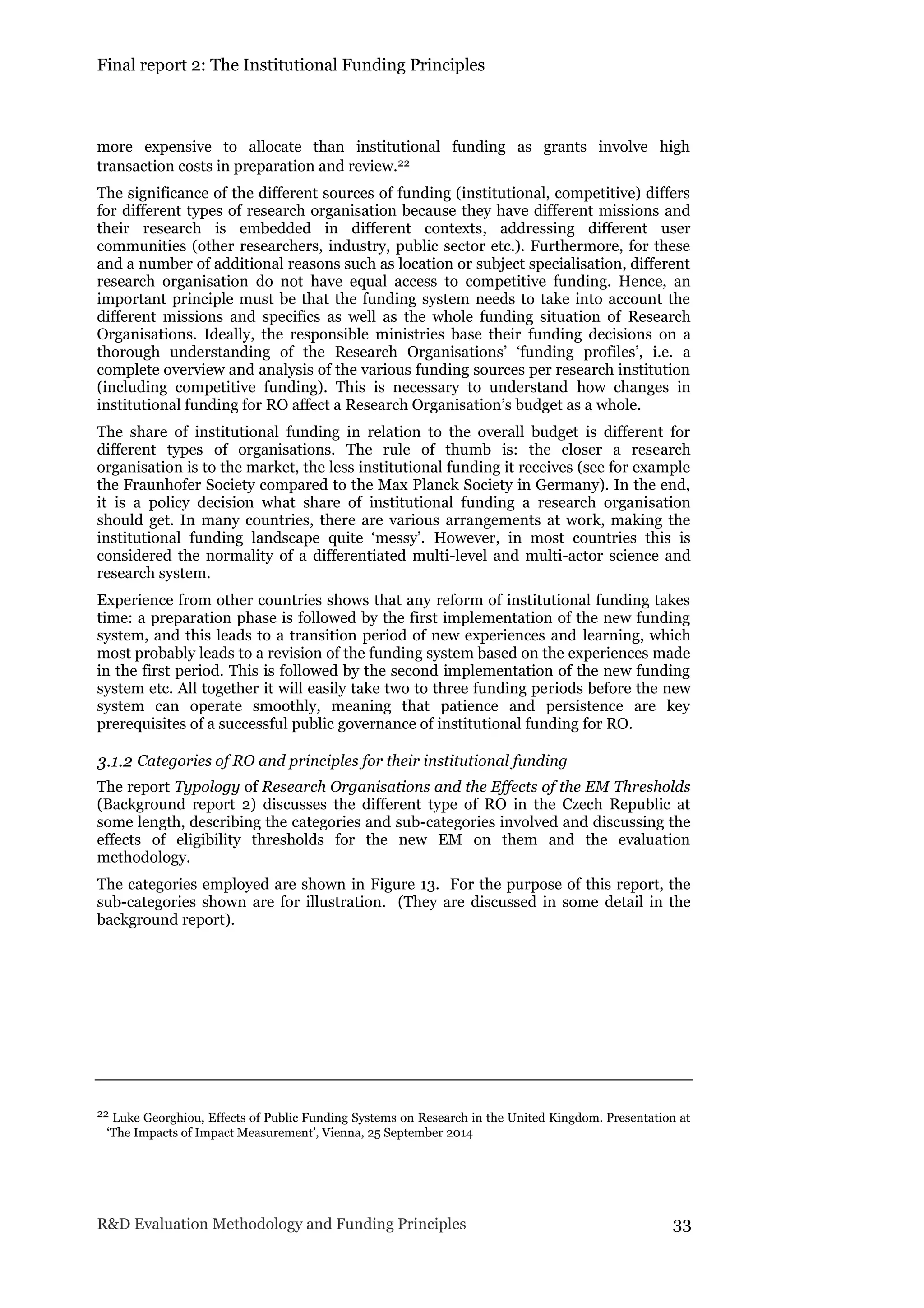
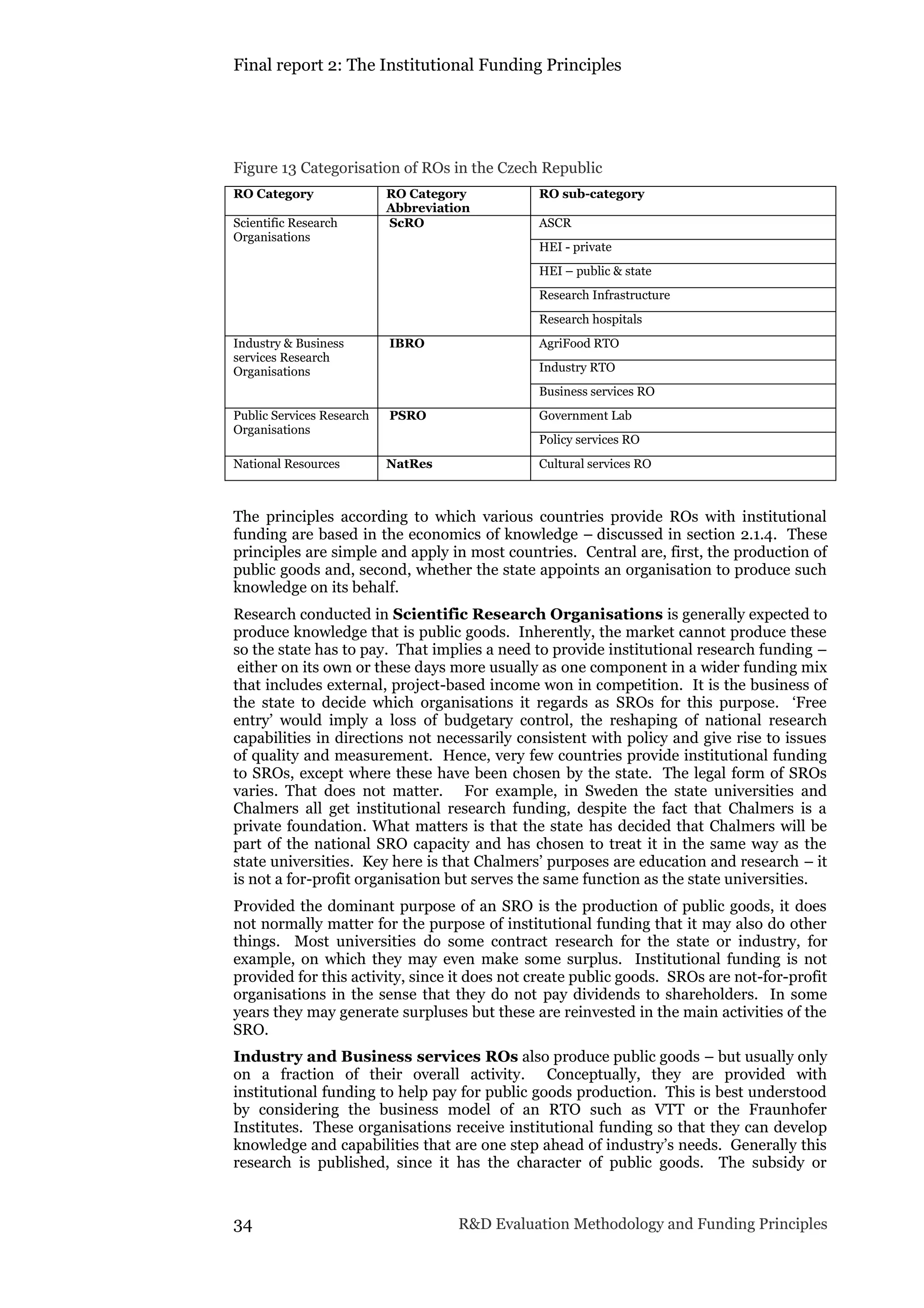
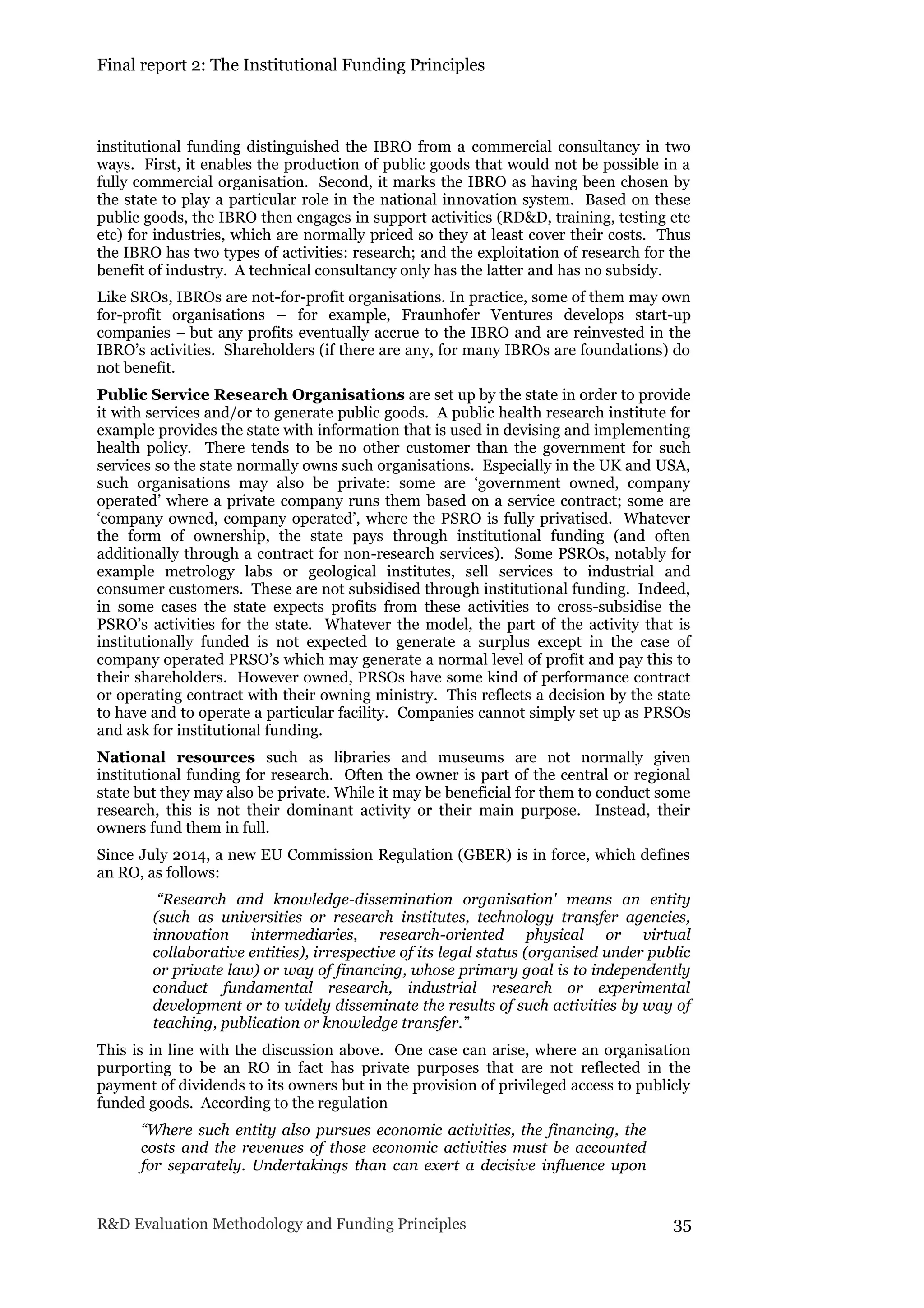
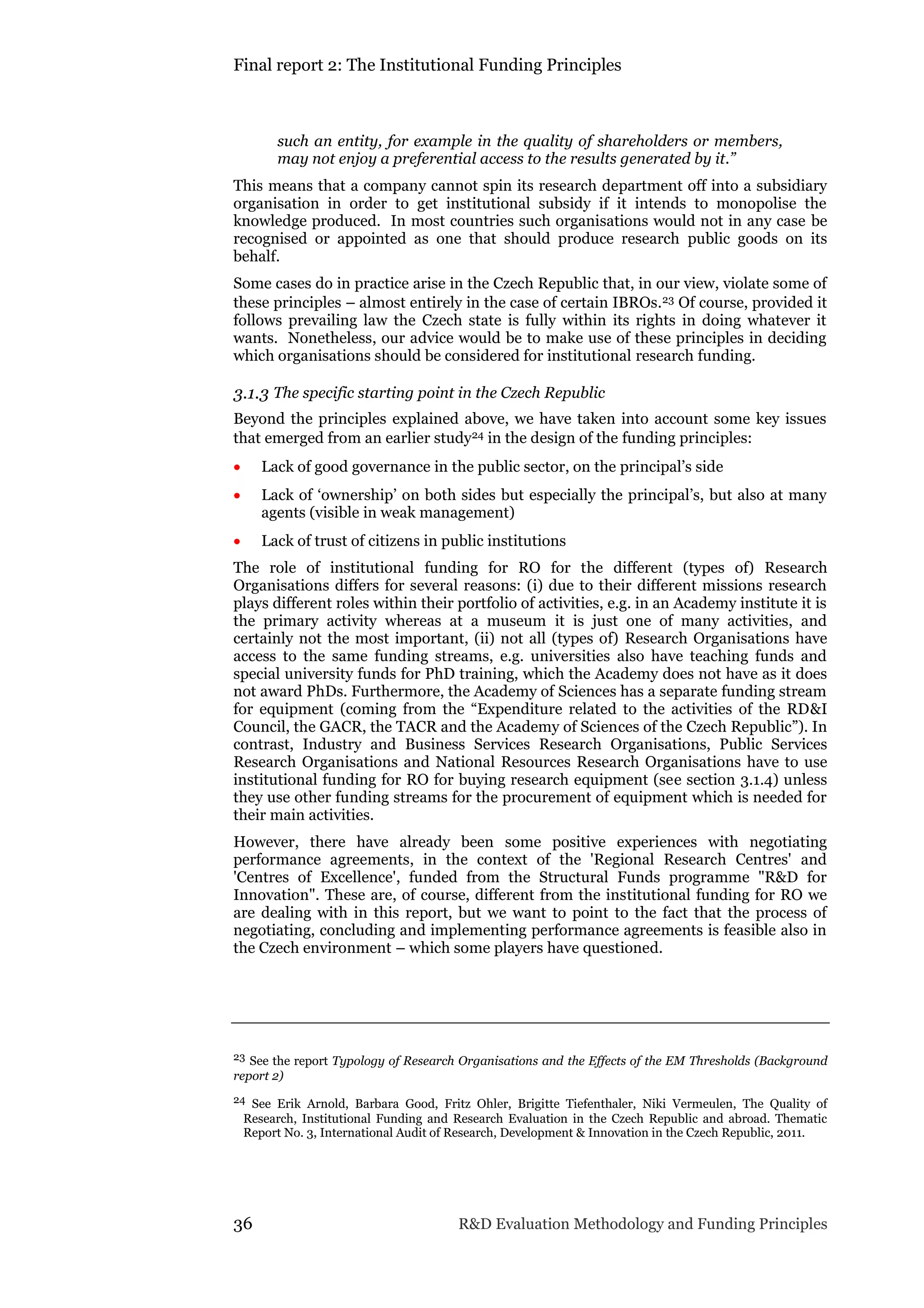
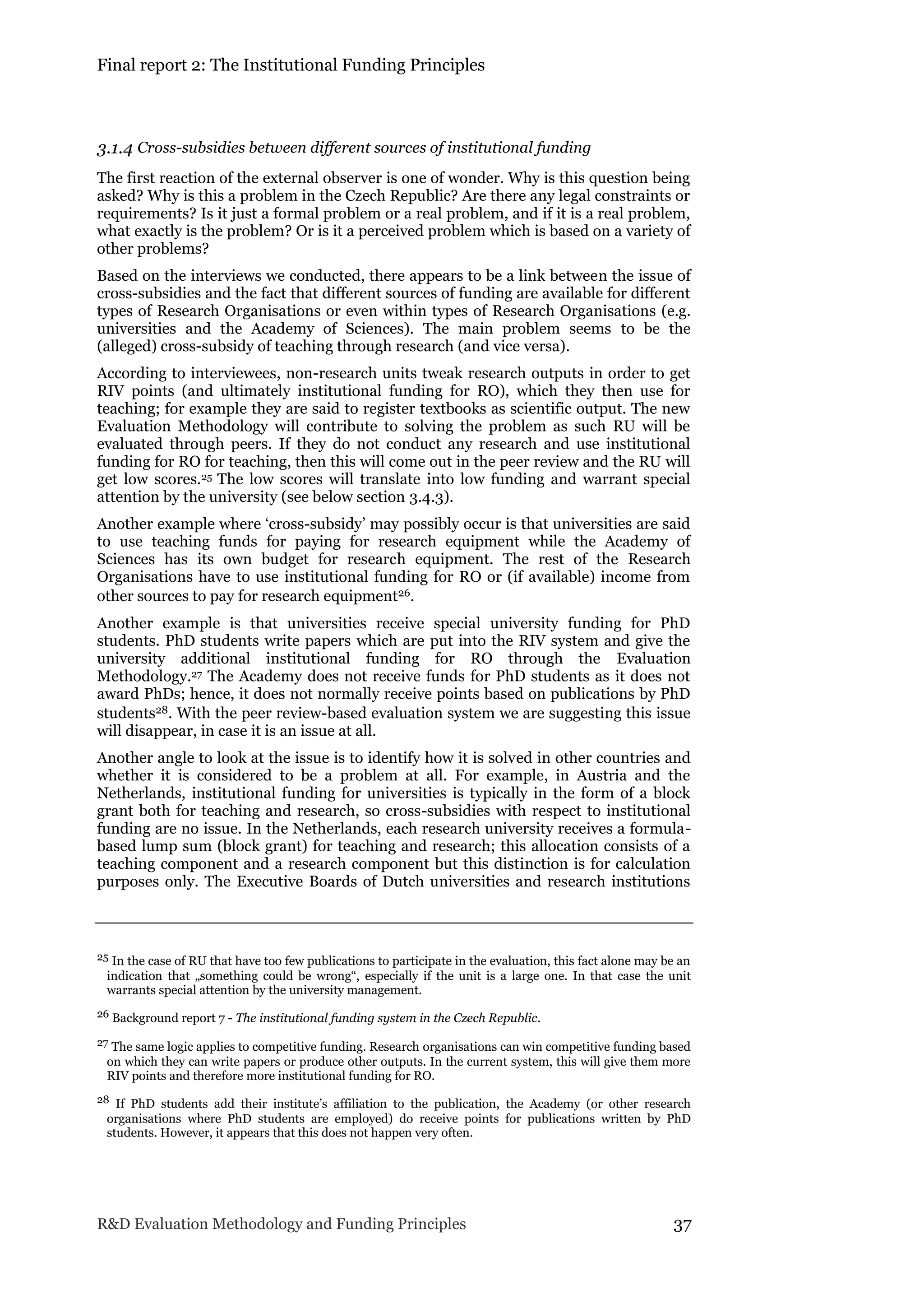
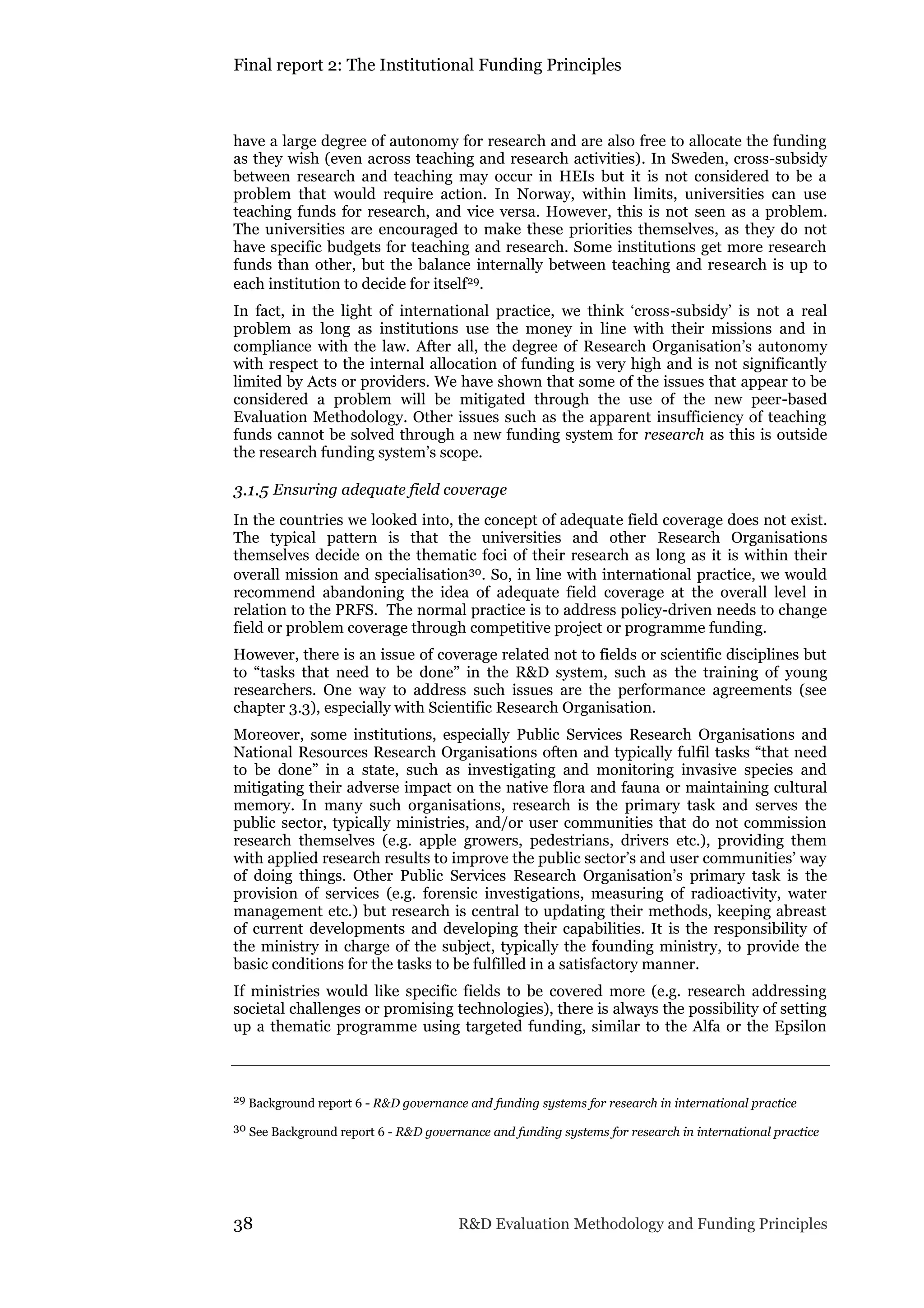
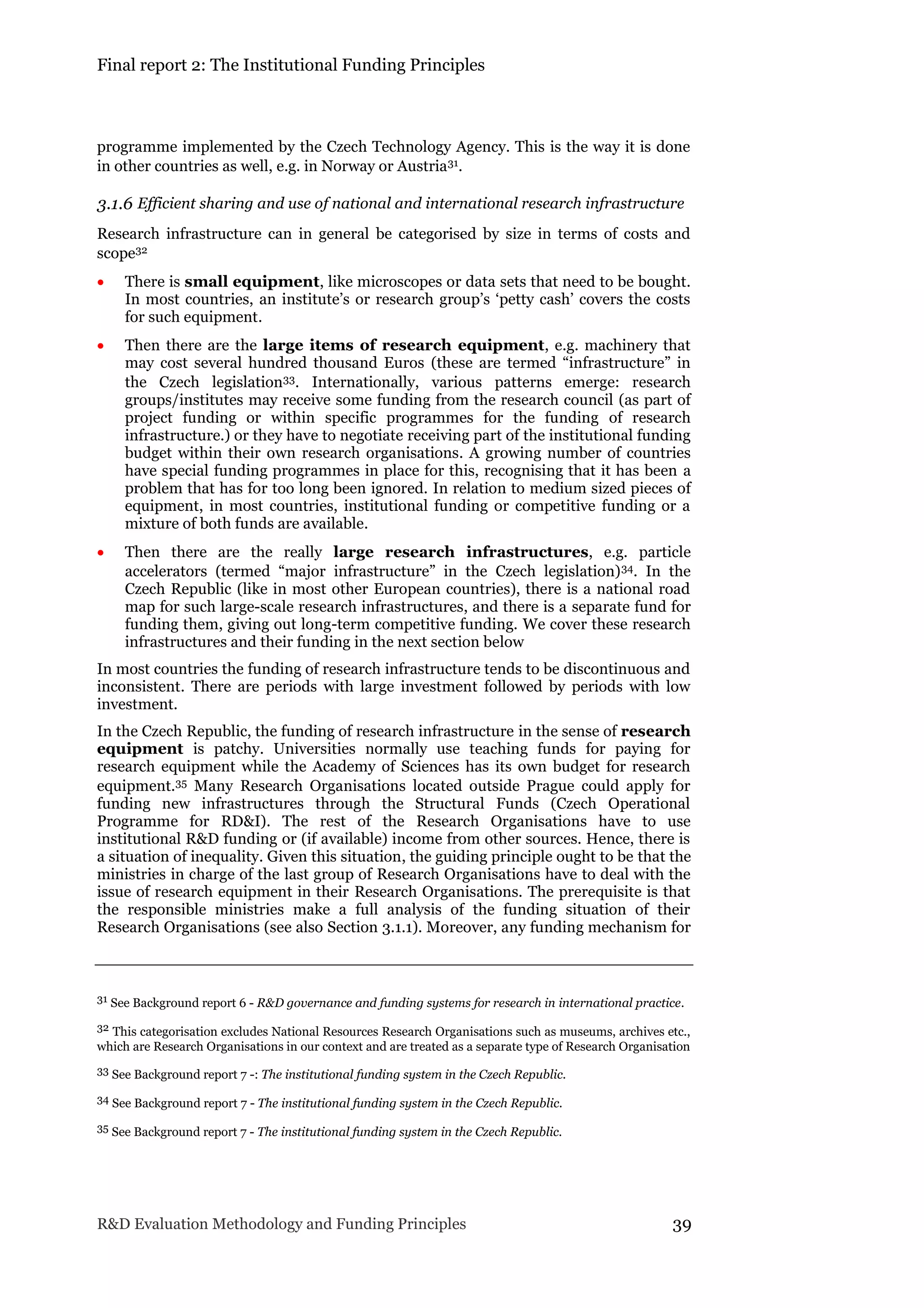
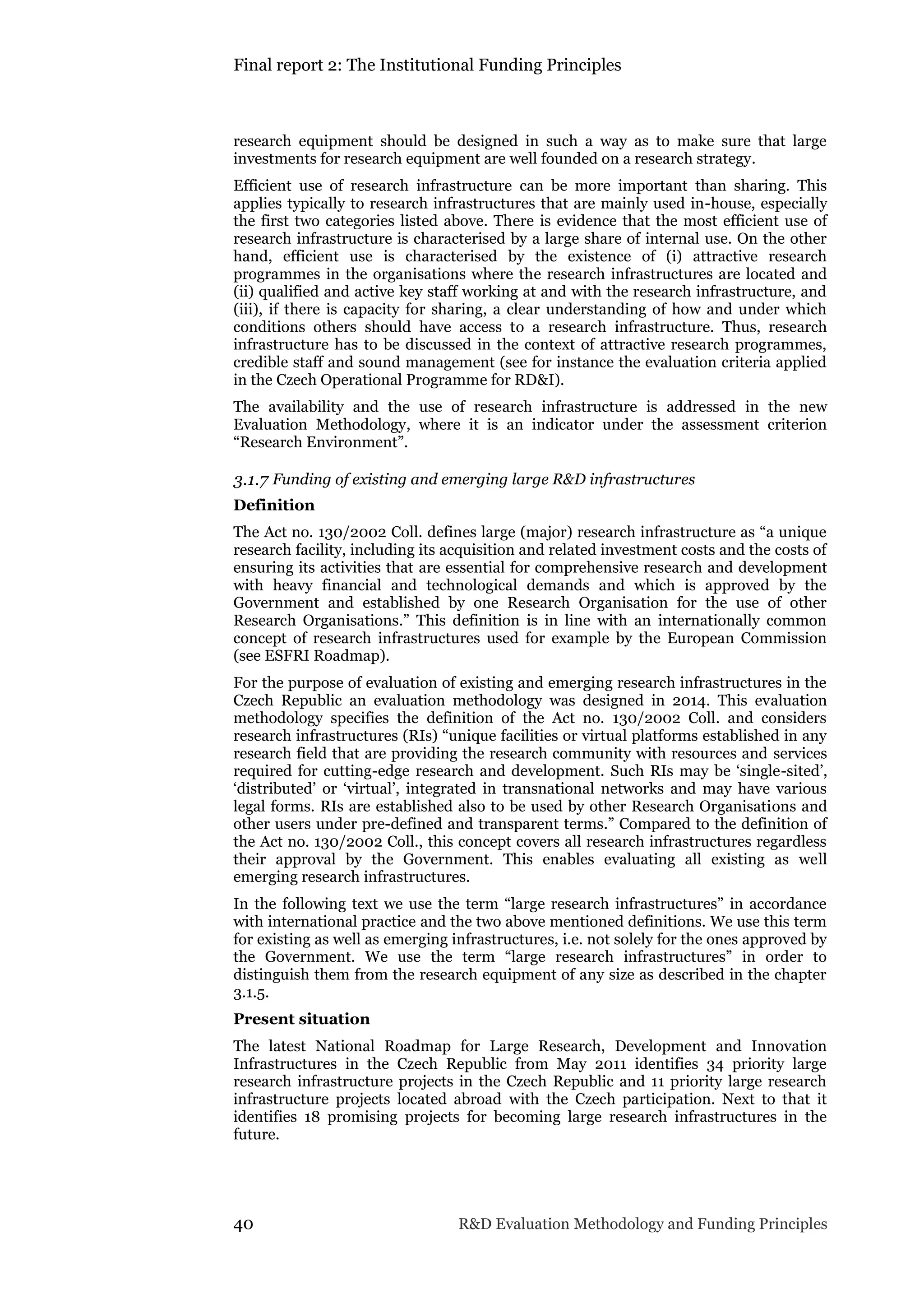
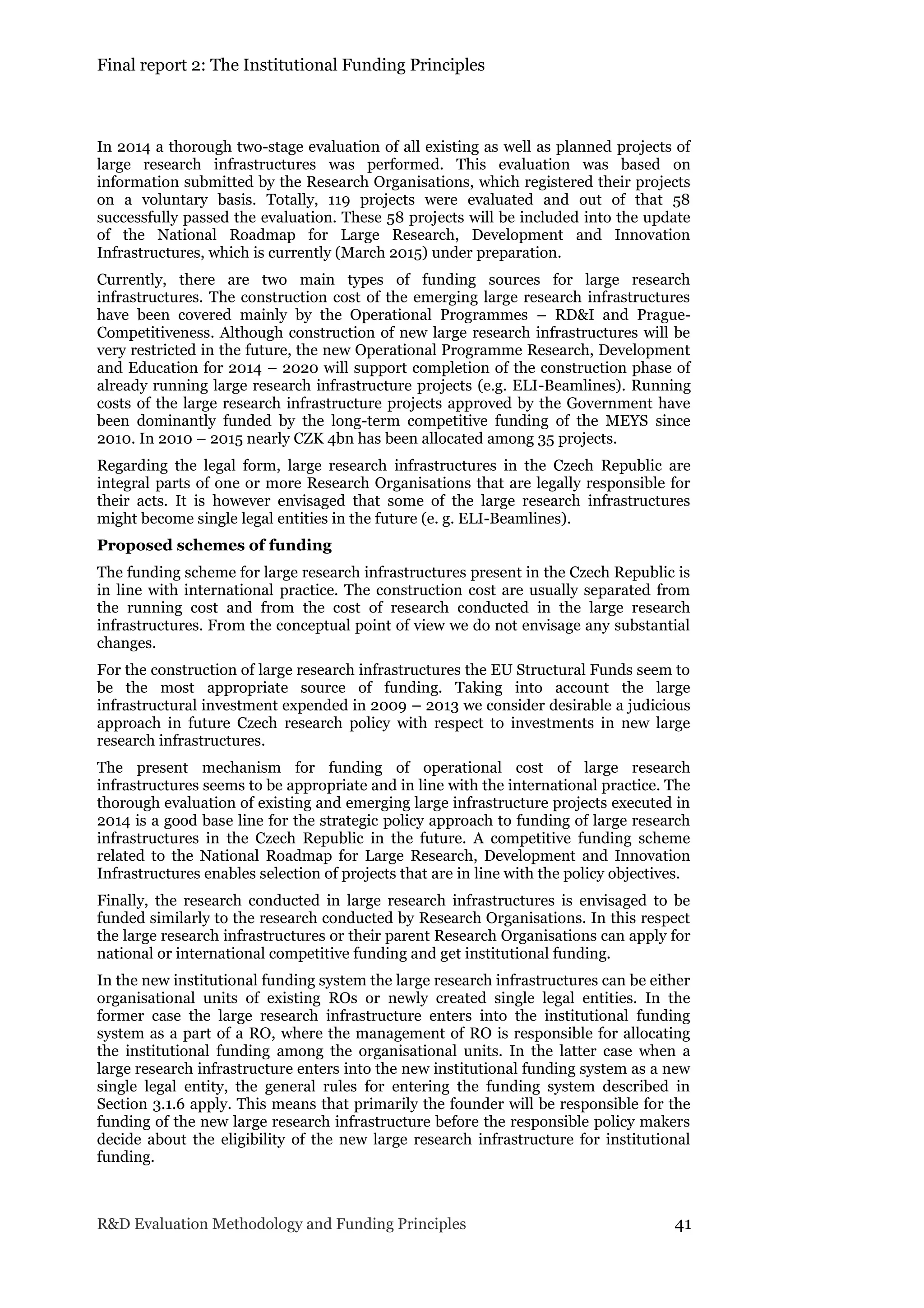
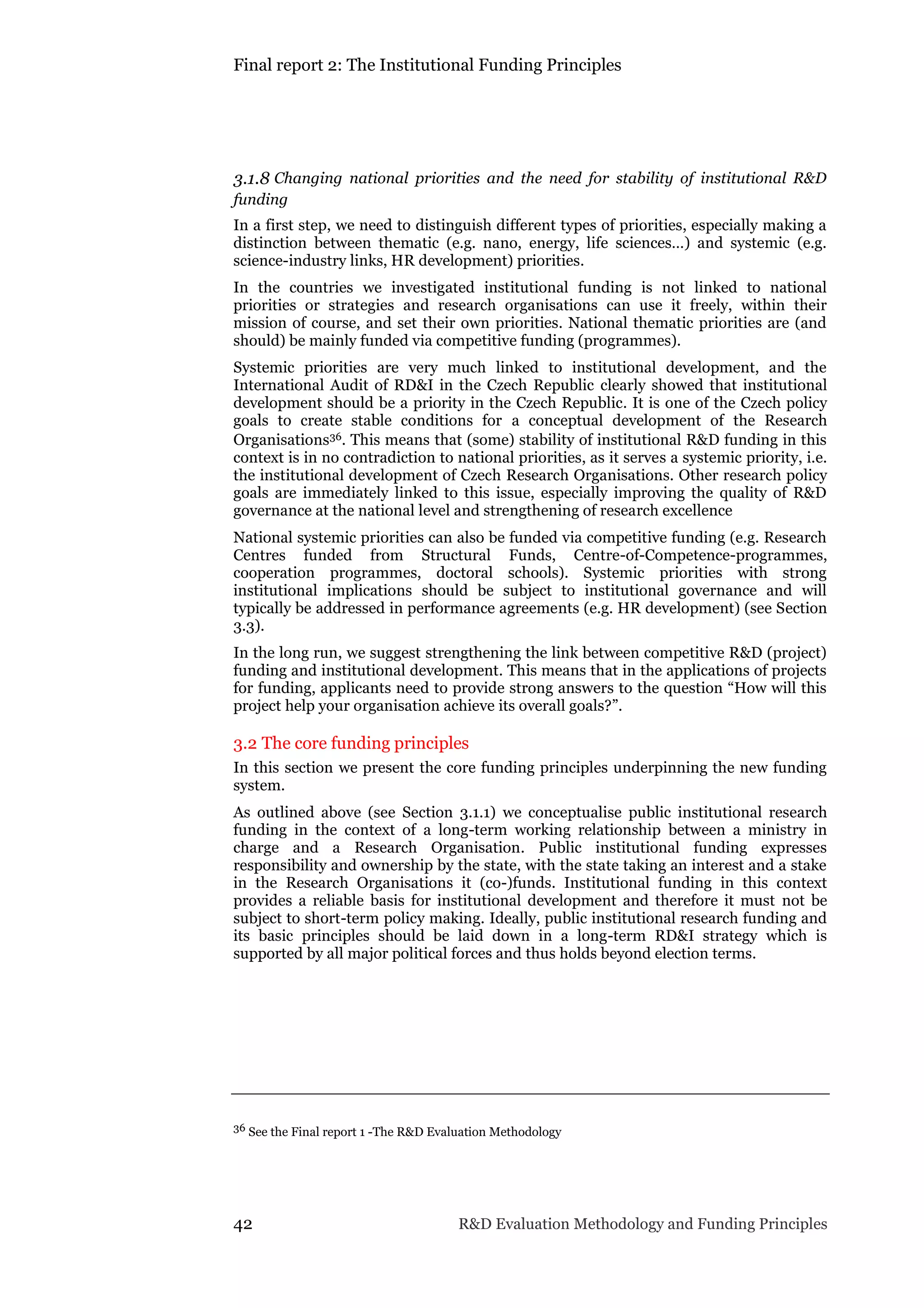

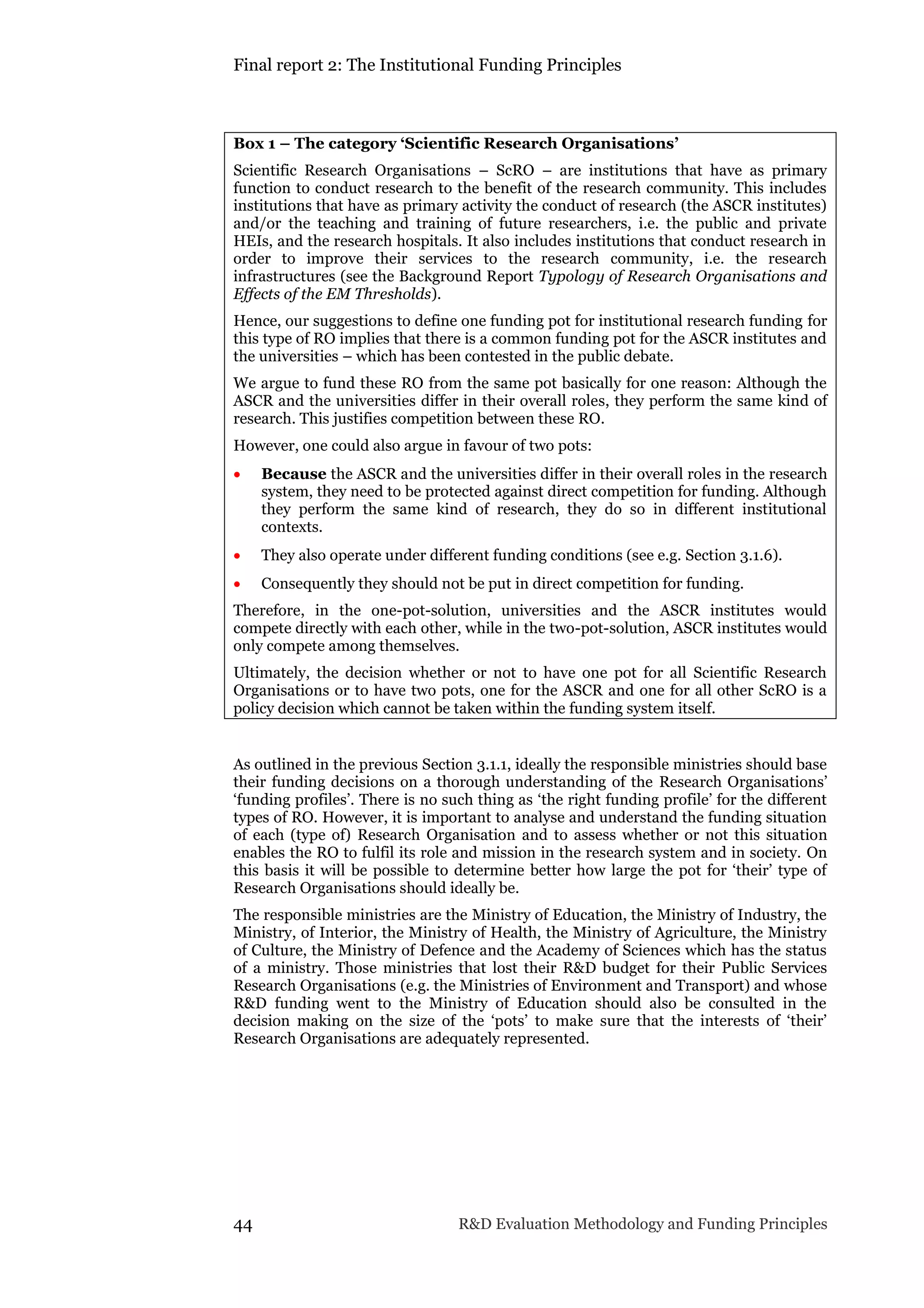
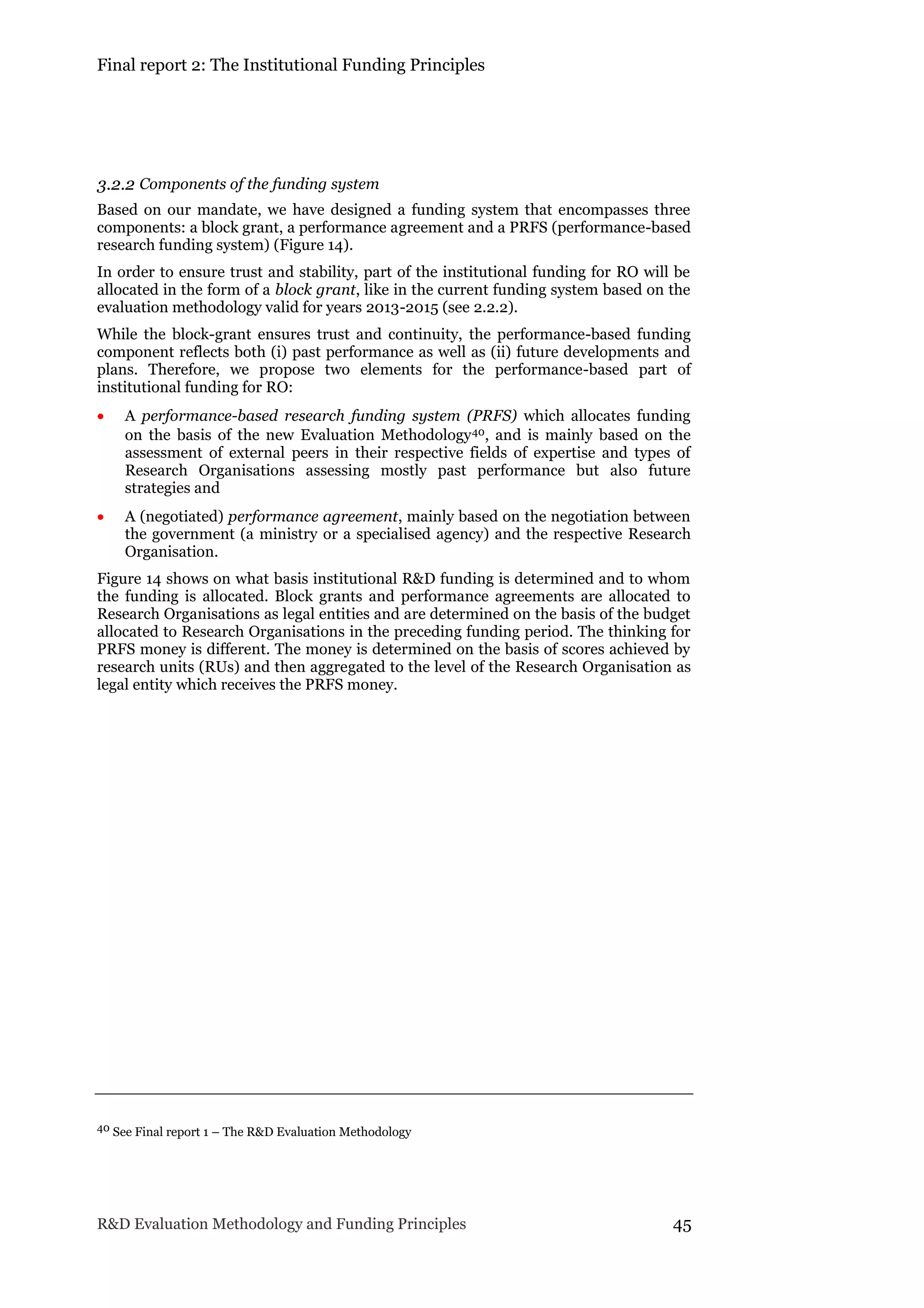


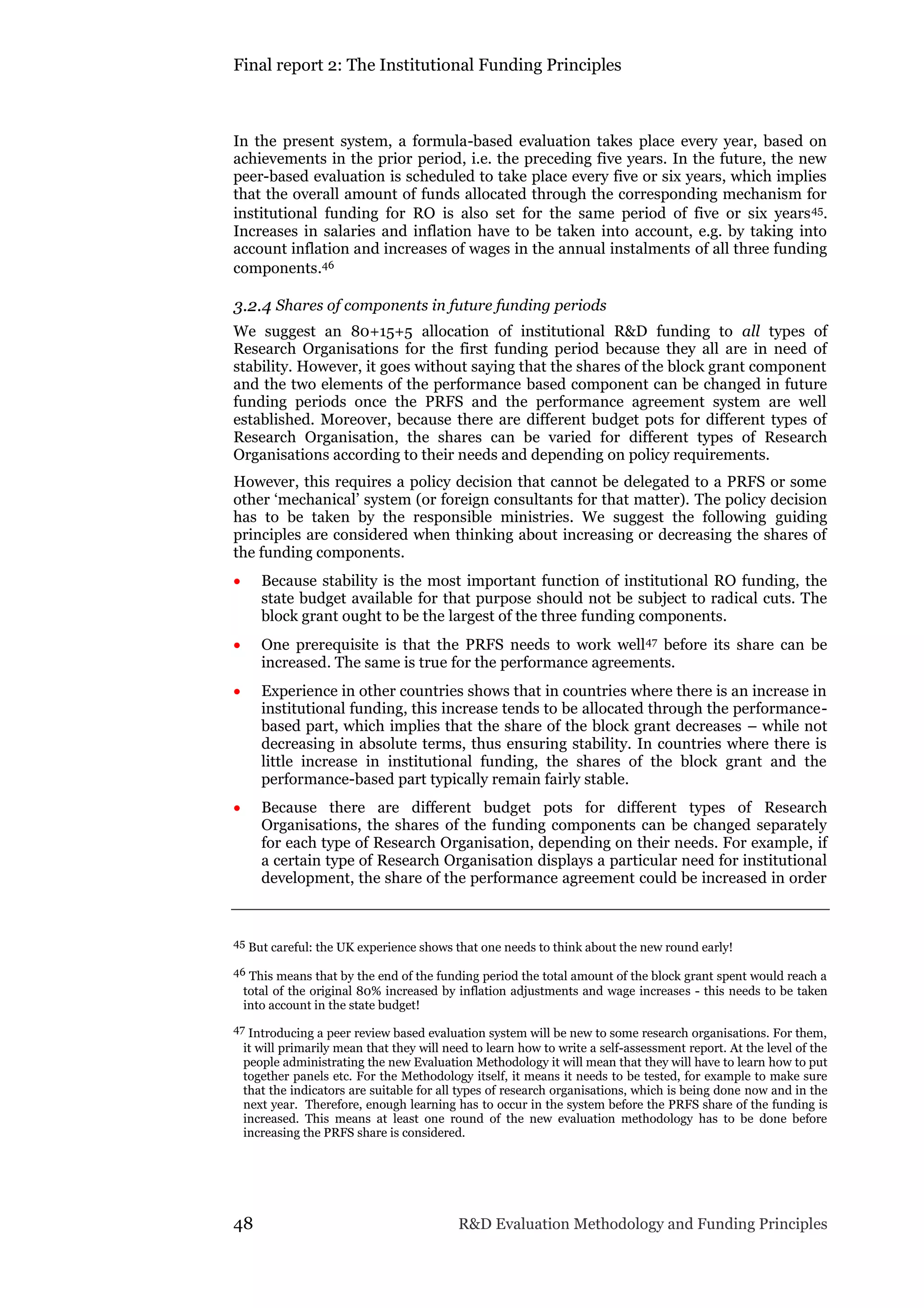

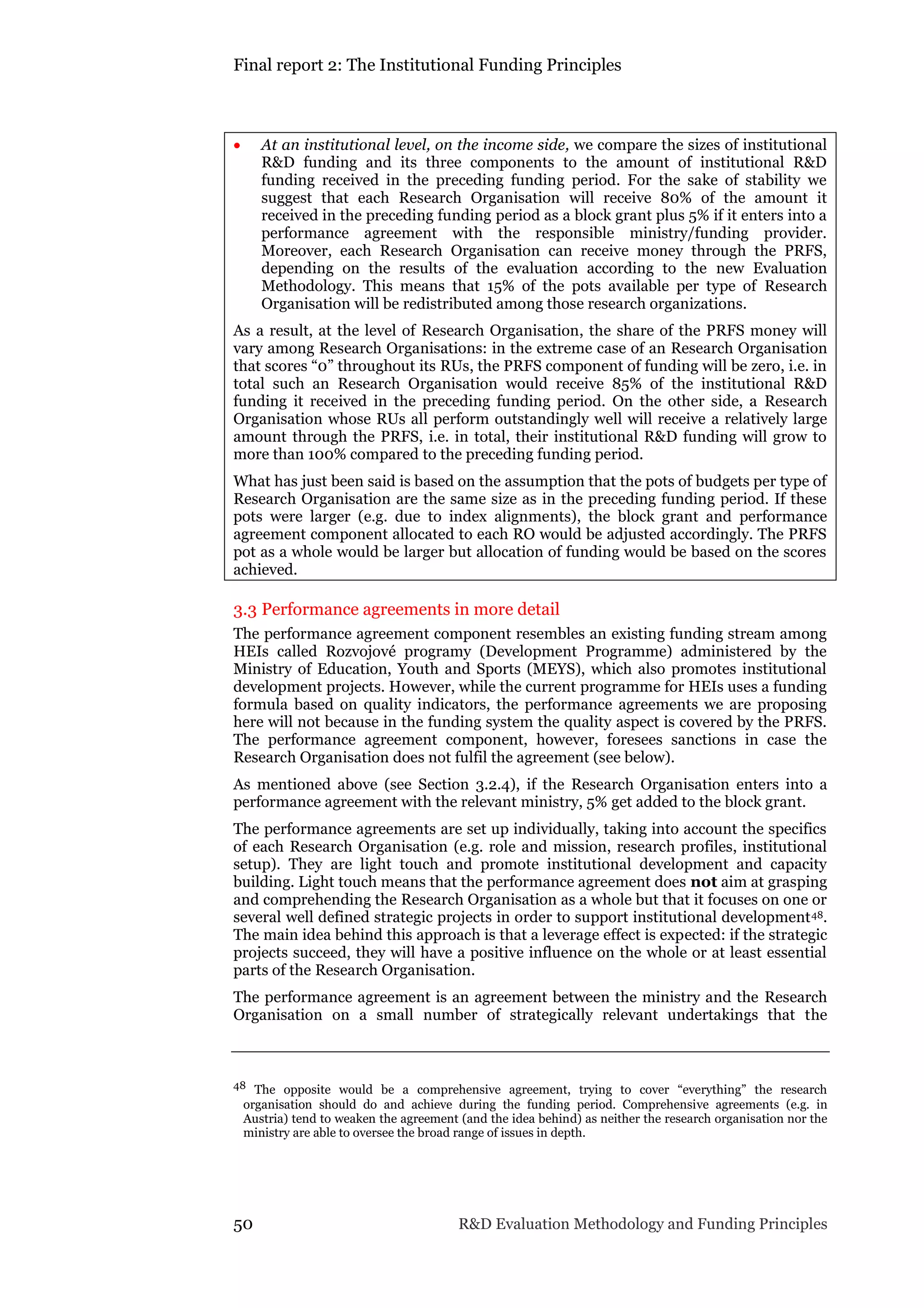

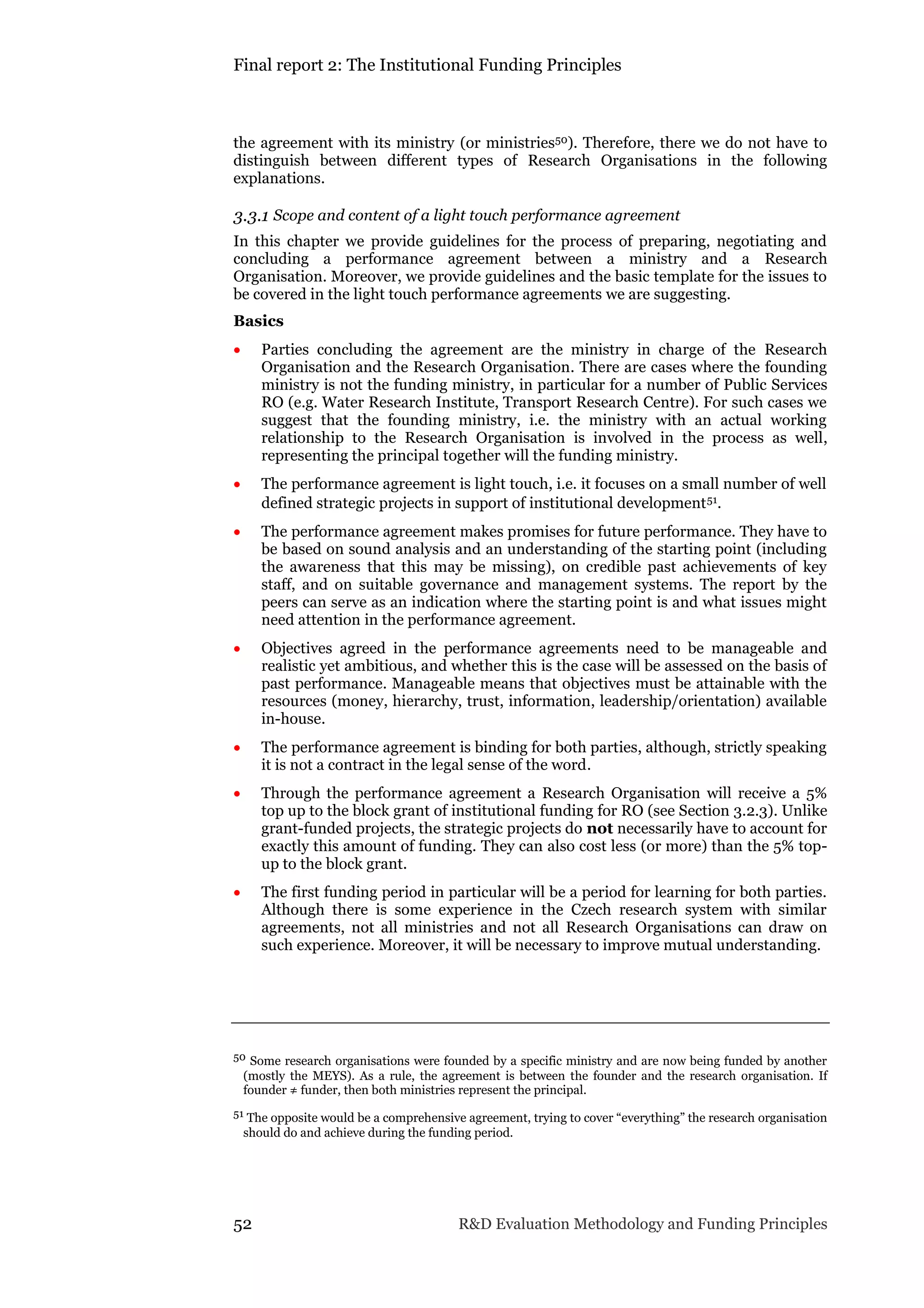
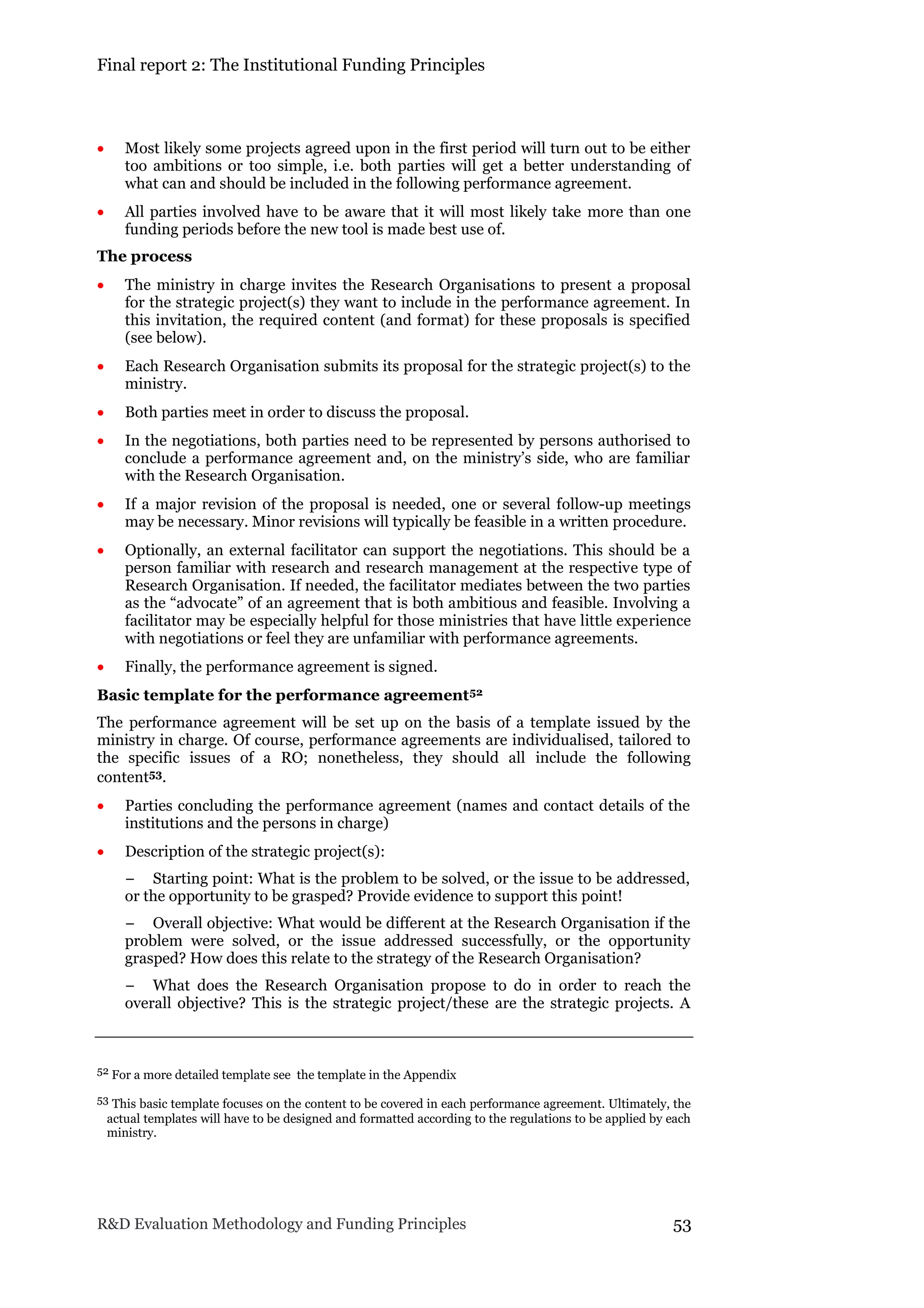
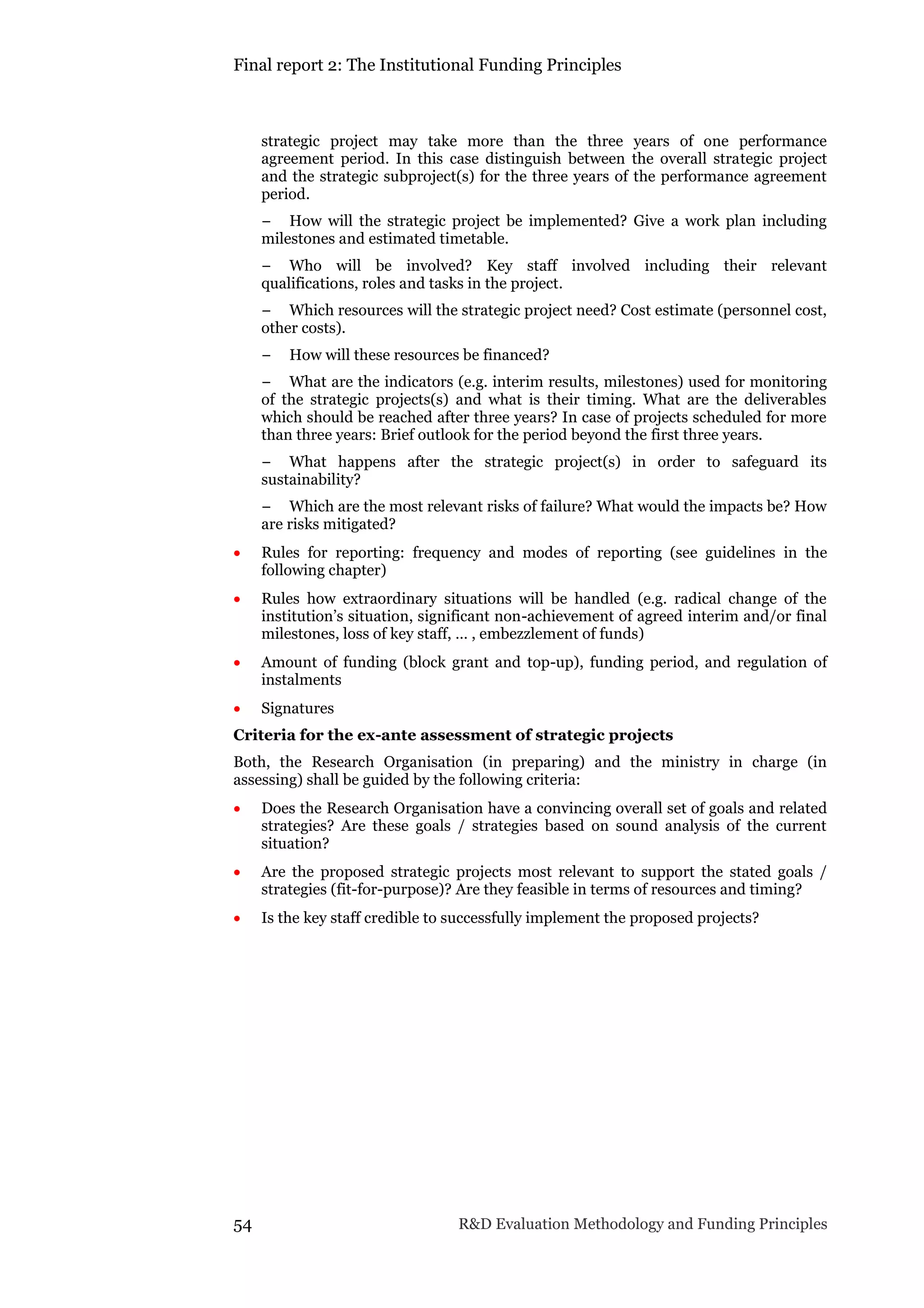
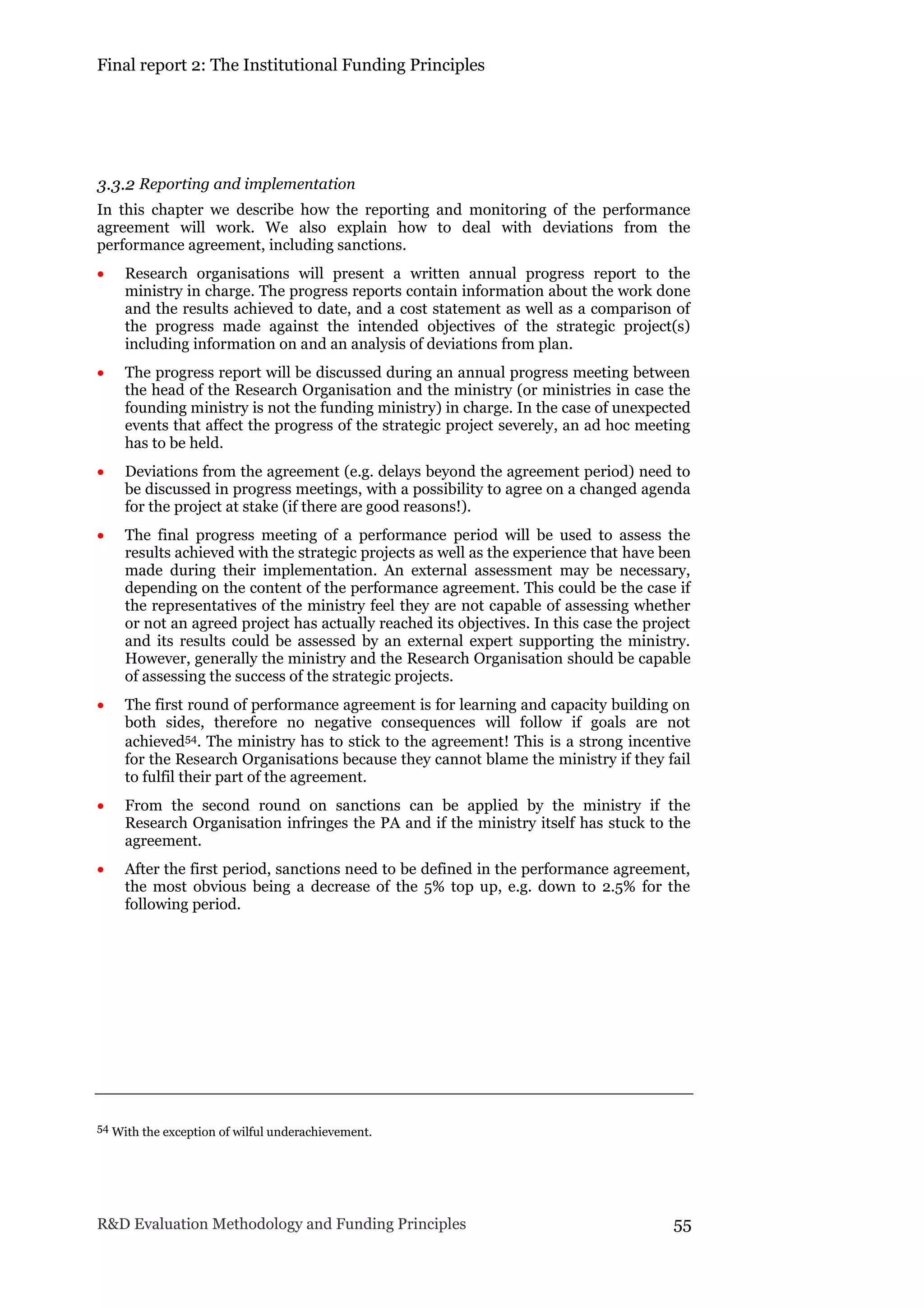
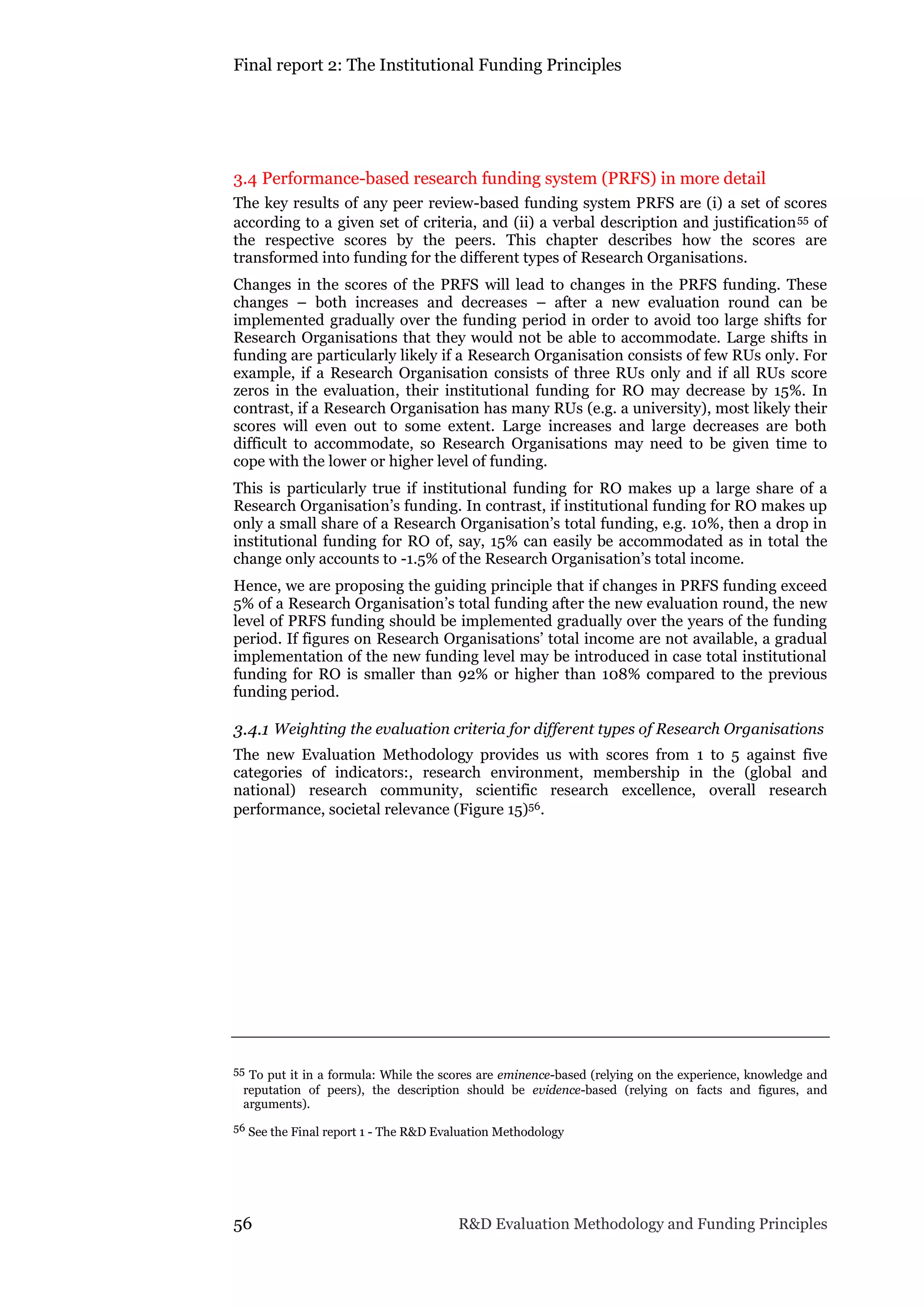
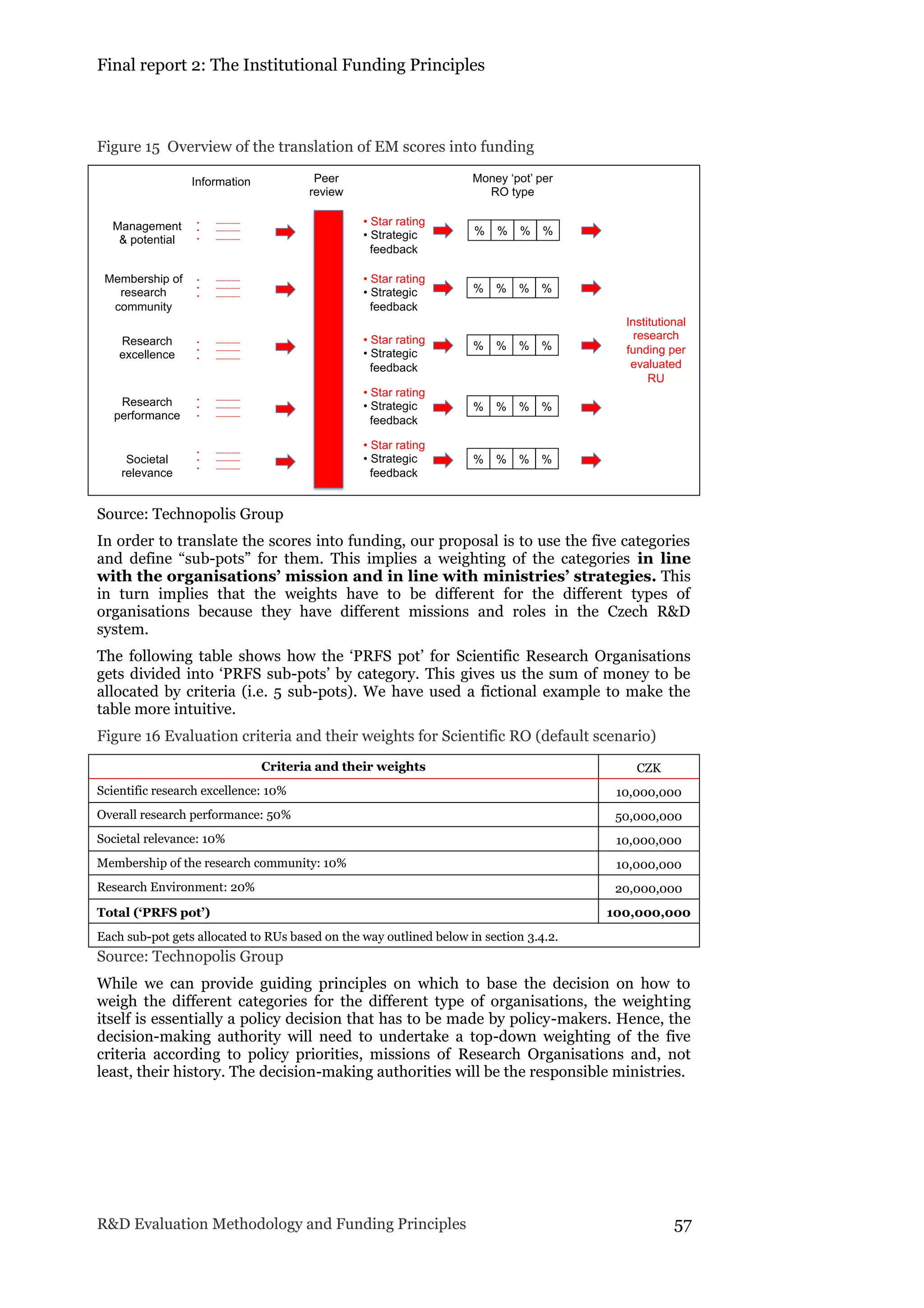
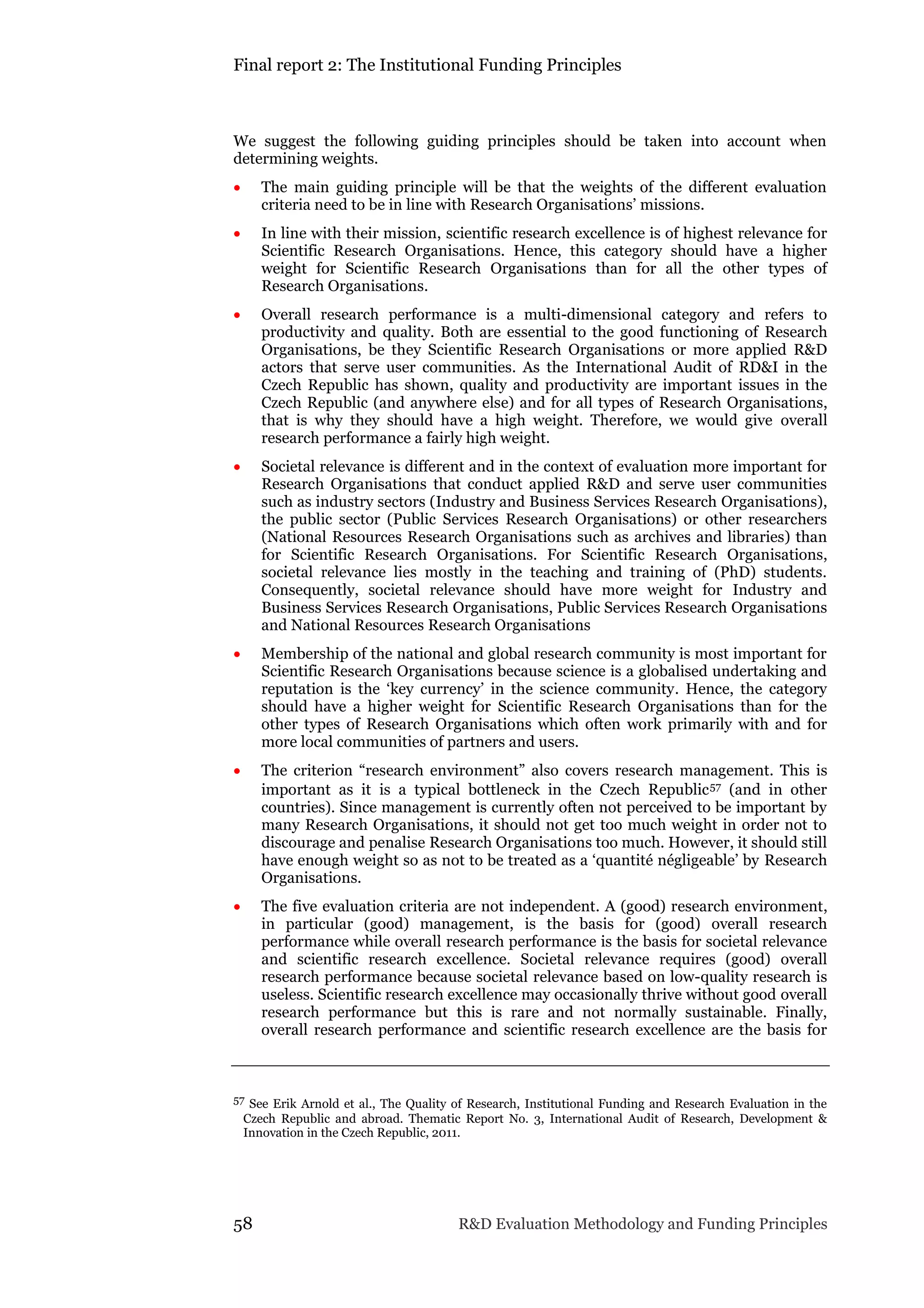
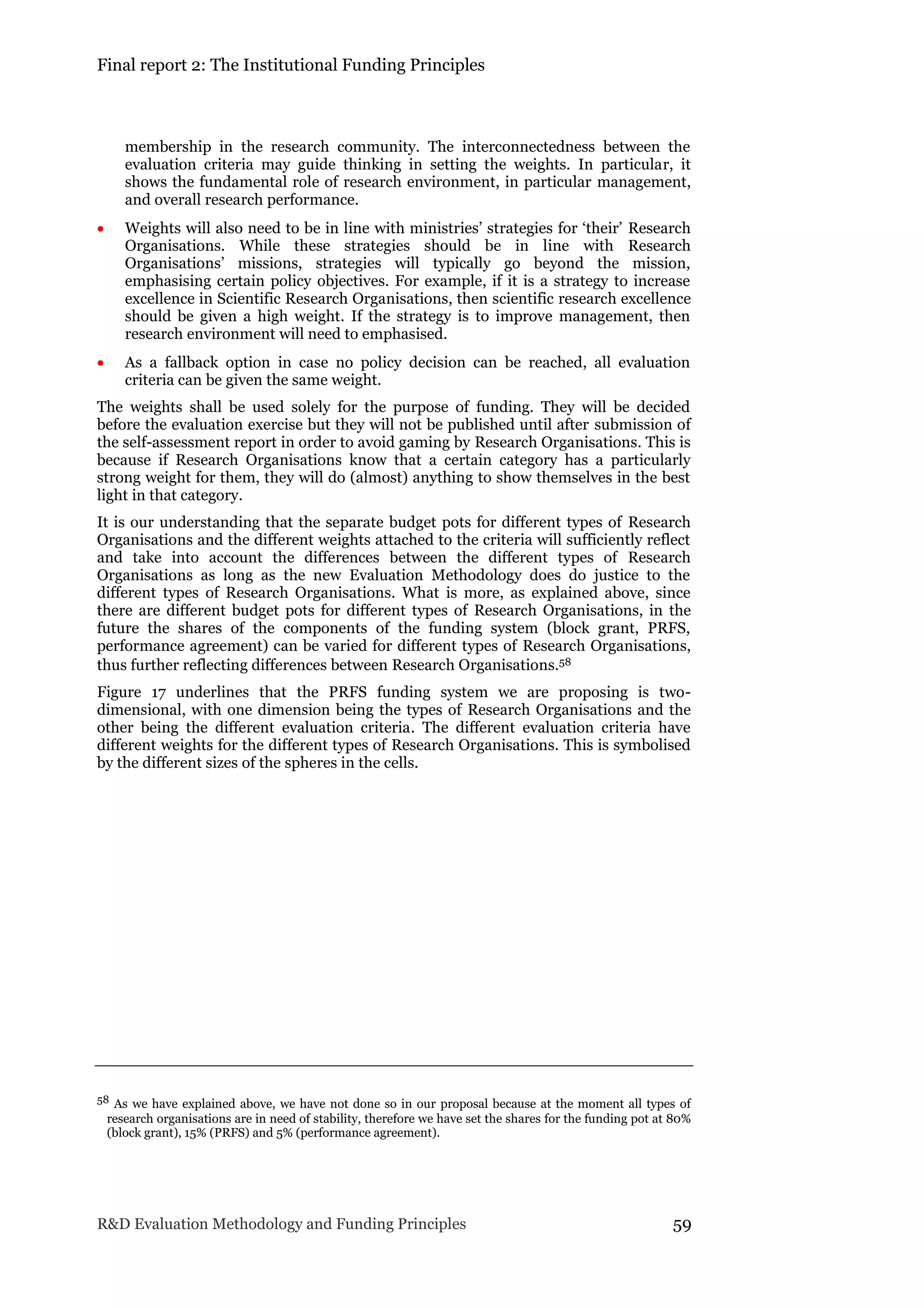
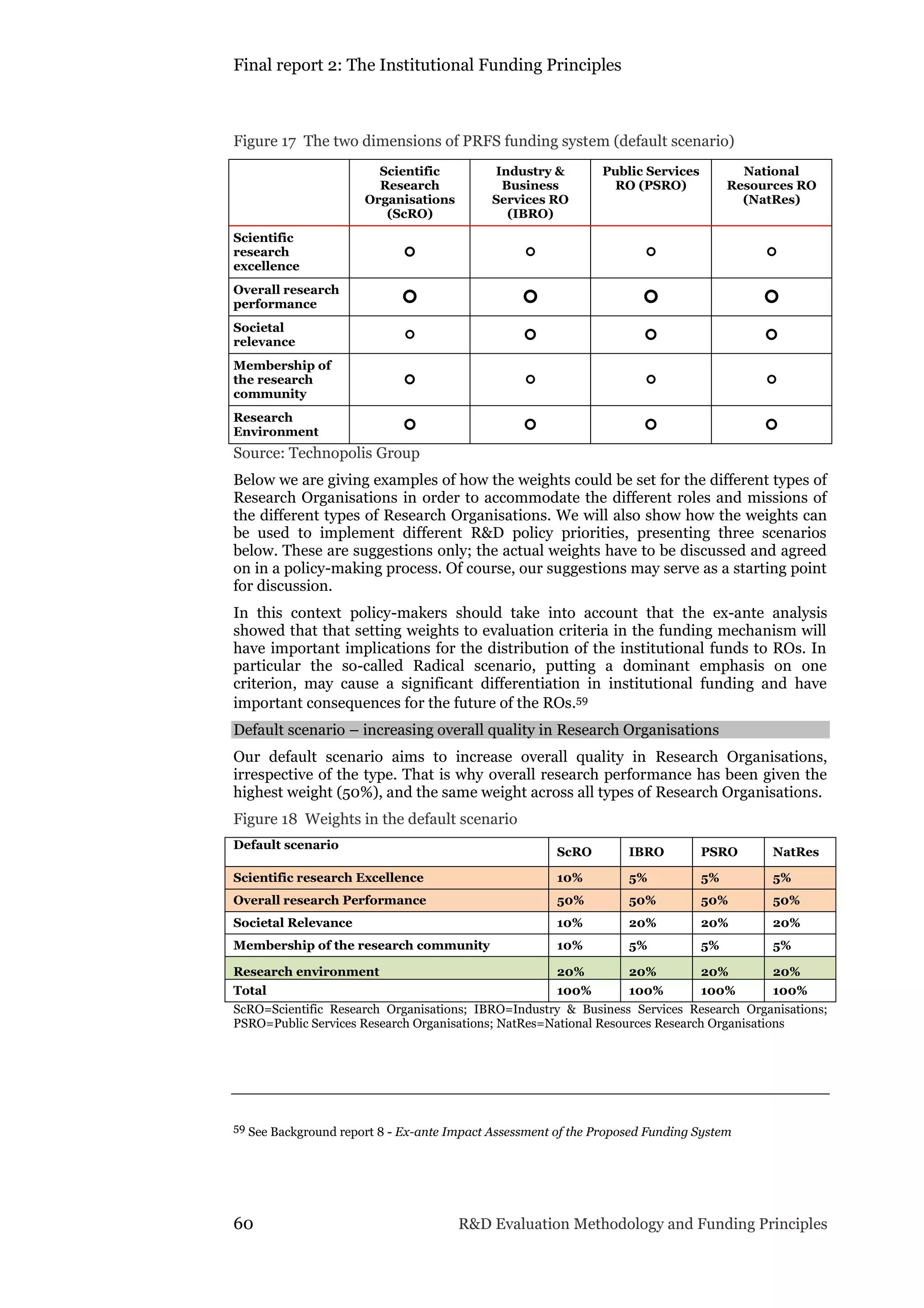
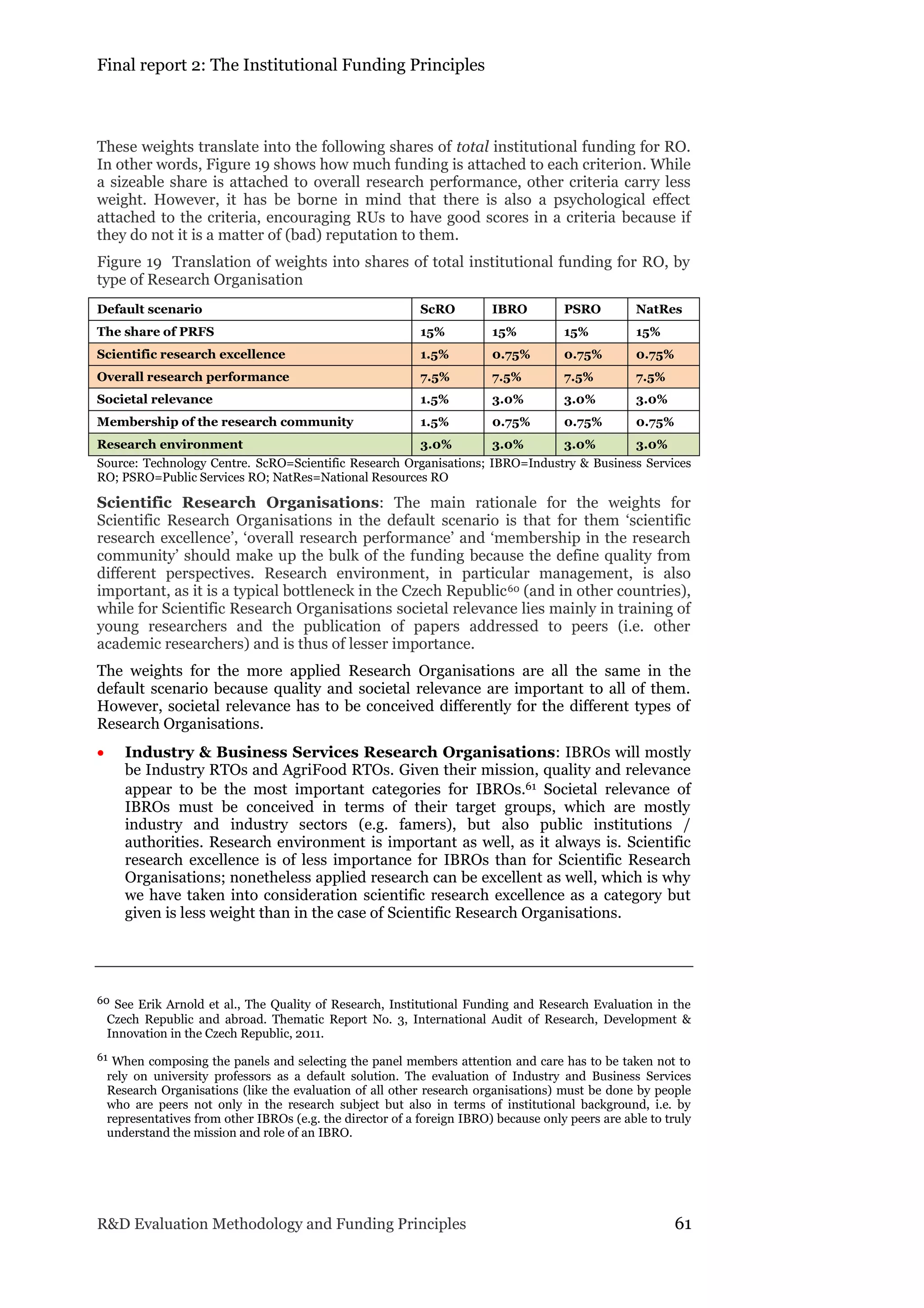
![Final report 2: The Institutional Funding Principles
62 R&D Evaluation Methodology and Funding Principles
Public Services Research Organisations: PSROs are typically governed by specific
ministries (such as the Ministry of Defence or the Ministry of Interior). In the
Czech Republic, some of them have been transferred to the responsibility of
MEYS. Given that public service Research Organisations have the public
administration as key target group, they ought to be tied more closely to ‘their’
specific ministry again62. This also means that they ought to be appropriately
funded and governed. The funding system proposed here does not define an
appropriate level of funding for Research Organisations because that is a decision
that can only be made policy-makers. So it is up to the founding ministries to
make sure that their public Research Organisations receive a level of institutional
funding that ensures their long-term sustainability and institutional development.
PSROs fulfil a specific mission in the Czech system which goes beyond the ‘pure’
production of research. Typically, their primary task is to provide expert services
essential to the state (e.g. criminal fire investigations), and research is done for
capability development. Other Public Services Research Organisations do
primarily conduct research but have as beneficiaries/applicants the public sector
and/or user communities that would never commission research on their own
(e.g. people living in flood areas). Hence, to some extent, Public Services Research
Organisations ought to be protected from science policy considerations. This does
not mean that they do not have to comply with quality standards in research! On
the contrary, quality and relevance are the most important considerations for
Public Services RO and has been reflected as such in the weights.
Societal relevance of Public Services Research Organisations must be conceived in
terms of their target groups, which are ministries and other public administration
bodies. The specific role of Public Services Research Organisations implies that
other relevant activities aiming at the use of research results need to be taken into
account, often more so than commercialisation activities. For Public Services
Research Organisations, membership in the world research community may have
to be re-interpreted to take into account that they may (and need to) be members
in more professionally oriented rather than research communities. Finally, the
way scientific research excellence is defined in the new Evaluation Methodology is
less relevant for Public Services Research Organisations.
National Resources Research Organisations: NatRes encompass organisations like
museums, libraries, archives or galleries.63 Often research is not their main
activity, and the research they conduct is predominately linked to the overall
quality of their service delivery. As in the case of the other types of Research
Organisations, quality and relevance are key. National resources ROs are primarily
resources for other researchers, to a lesser extent to other users. Hence, societal
relevance has to be understood in terms of their user communities, and
interaction and collaboration with other researchers is key.
The medium scenario – increasing overall quality while more strongly emphasising
the specificity of types of Research Organisations
In this scenario, overall research performance still has a highest weight among all
criteria, thus pushing towards an overall increase in quality in Research Organisations.
At the same time, the specificity of different types of Research Organisations is
62 This is in line with policy objective no. 8 of the National RD&I Policy of the Czech Republic 2009 – 2015,
according to which “the compatibility and linkages of the National Policy with other sectoral policies
[should be] ensured.” This implies in particular that the definition of what is a public service research
organisation should not be left to public service research organisations themselves, the ministries should
be involved in the definition as well.
63 See the Final report 1 – The R&D Evaluation Methodology](https://image.slidesharecdn.com/finalreport-2-the-institutional-funding-principles-160203083047/75/Final-report-2-The-Institutional-Funding-Principles-74-2048.jpg)
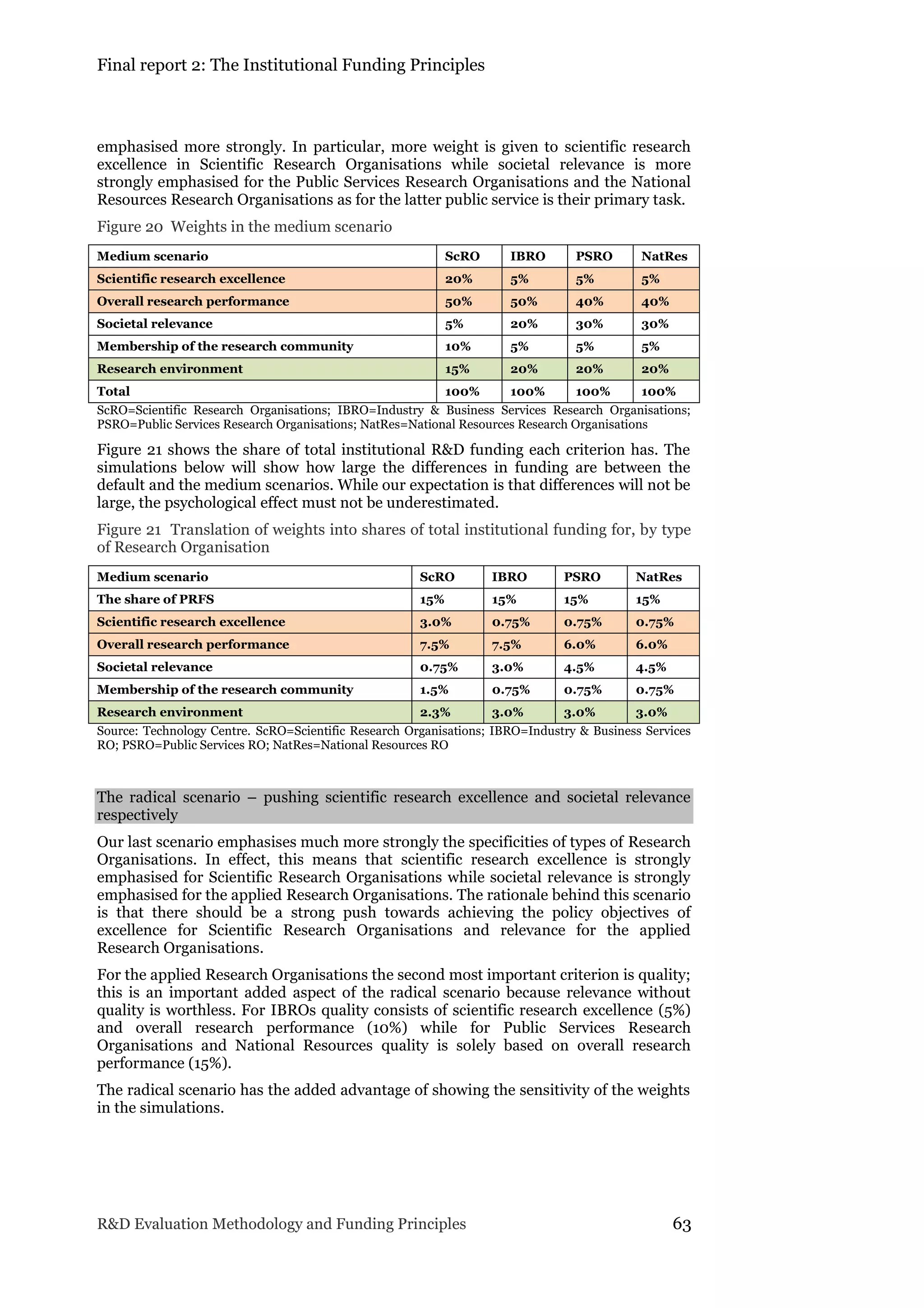
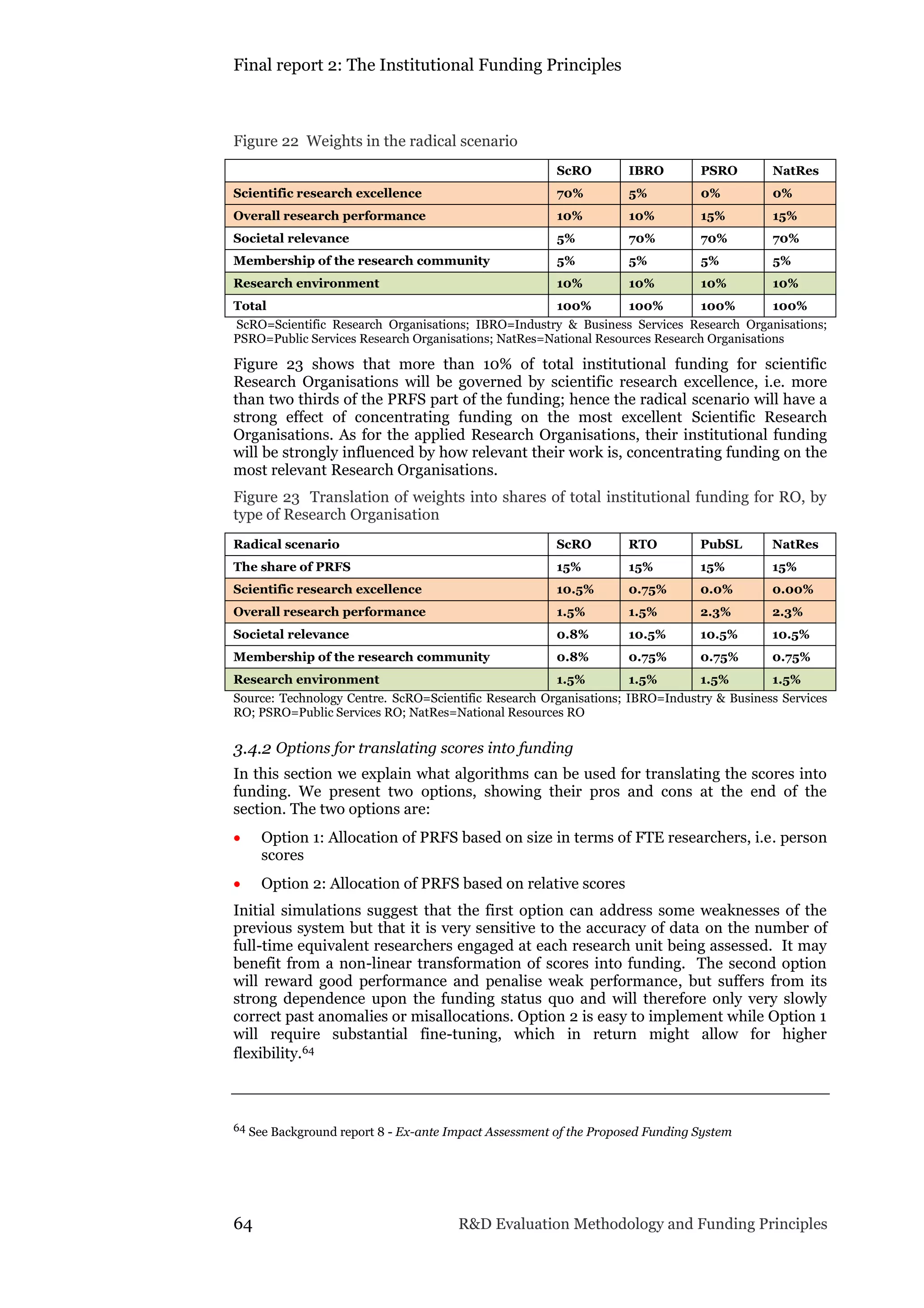
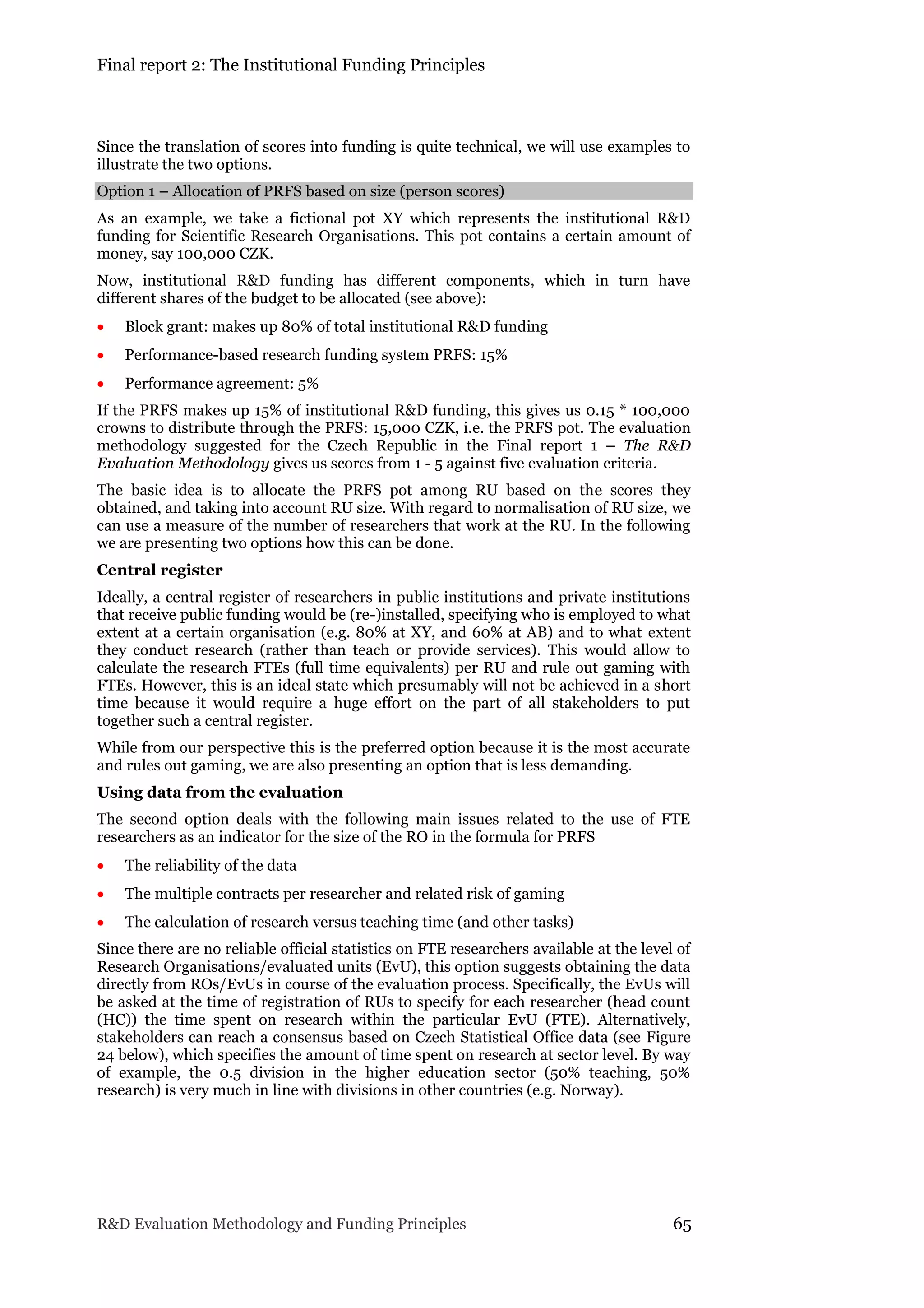

![Final report 2: The Institutional Funding Principles
R&D Evaluation Methodology and Funding Principles 67
technicians than others (e.g. the technical sciences compared to the humanities),
which is not reflected by the proposed definition of researcher. Indeed,
institutional R&D funding is granted to cover parts of the costs, and disciplines
that require technicians tend to be more expensive than those that do not.
However, this should be covered by the block grant rather than the PRFS
component of the funding system, which focuses on research quality and research
performance.
Researchers and technicians that have an employment contract as researchers will
be counted as researchers irrespective of the degree they hold (or do not hold).
This follows the logic that it is function that counts.
We will use a census to determine the affiliation of a researcher. This will take care
of cases of affiliation change when a researcher is for example employed four years
of the evaluation period at RO A and two years at RO B.
In the end, whether or not to include PhD students and technicians is a convention.
Two questions need to be considered in this context: a) is the solution agreed upon
more or less fair to all parties concerned? And b) what are the impacts of the solution
agreed upon? For example, will it contribute to more gaming?
Because the issue of FTEs is fairly tricky, we have devised a second option of
translating scores into funding, which does not use FTEs to calculate the funding (see
the next sub-section below).
Example66
Below is an example of how the PRFS pot (15,000 CZK) is divided among two research
units with different FTEs and scores.
RU1: 10 R&D FTE x score of 4 = 40 [weighted R&D FTEs)
RU2: 18 R&D FTE x score of 2 = 36 [weighted R&D FTEs]
This implies that total weighted R&D FTEs = 76
Share of PRFS pot RU1 gets: 40/76 translated into money = 15,000 * 40/76 = 7,894
CZK
Share of PRFS pot RU2 gets: 36/76 translated into money = 15,000 * 36/76 = 7,105
CZK
Institutional R&D funding for RU1 + institutional R&D funding for RU2 = 7,894
+7,105 =15,000 CZK
The title of “technician” was introduced some years ago and implies that these employees have a
different role in the institution and their activities lead to different outputs than the ones of
researchers.
Second, the academic profile of technicians is different depending on the institutional context and
needs: while in principle technicians do not have a PhD, in some institutions it includes employees
with and without PhDs
Third, there are substantial differences in different fields as well as in research institutes versus
universities of the role and function that technicians have, for research and for the institution as such
(in some universities and depending on the field of science, they also have teaching functions)
In the Italian system, technicians fulfil tasks of review of analyses and technical collaboration related to
technological or professional activities.
66 In this example we use only one score to clearly illustrate the basic allocation principle. Below (see
scenario 1) we will describe an allocation mechanism for the five criteria suggested in the new Evaluation
Methodology, based on the mechanism in this example.](https://image.slidesharecdn.com/finalreport-2-the-institutional-funding-principles-160203083047/75/Final-report-2-The-Institutional-Funding-Principles-79-2048.jpg)
